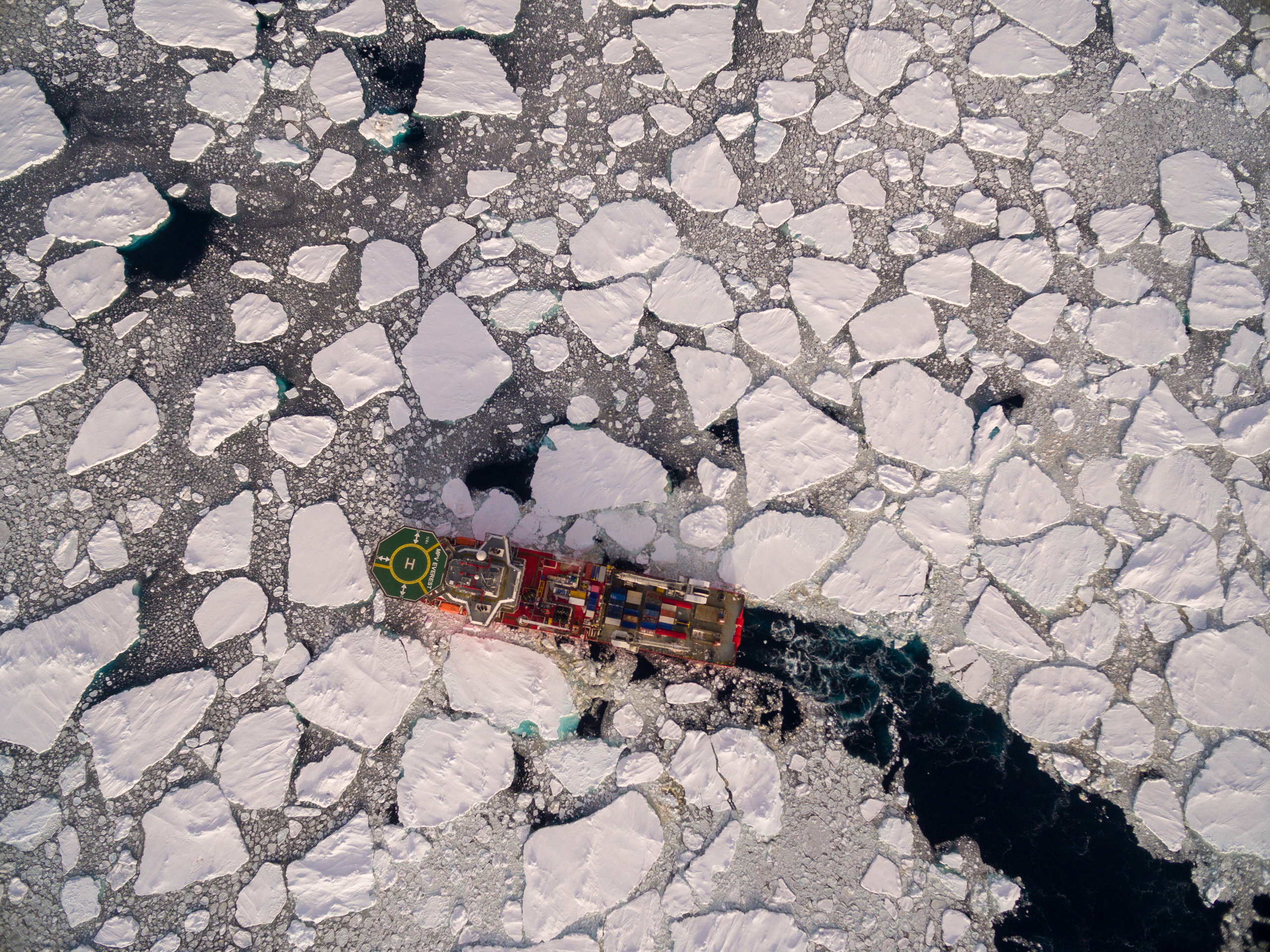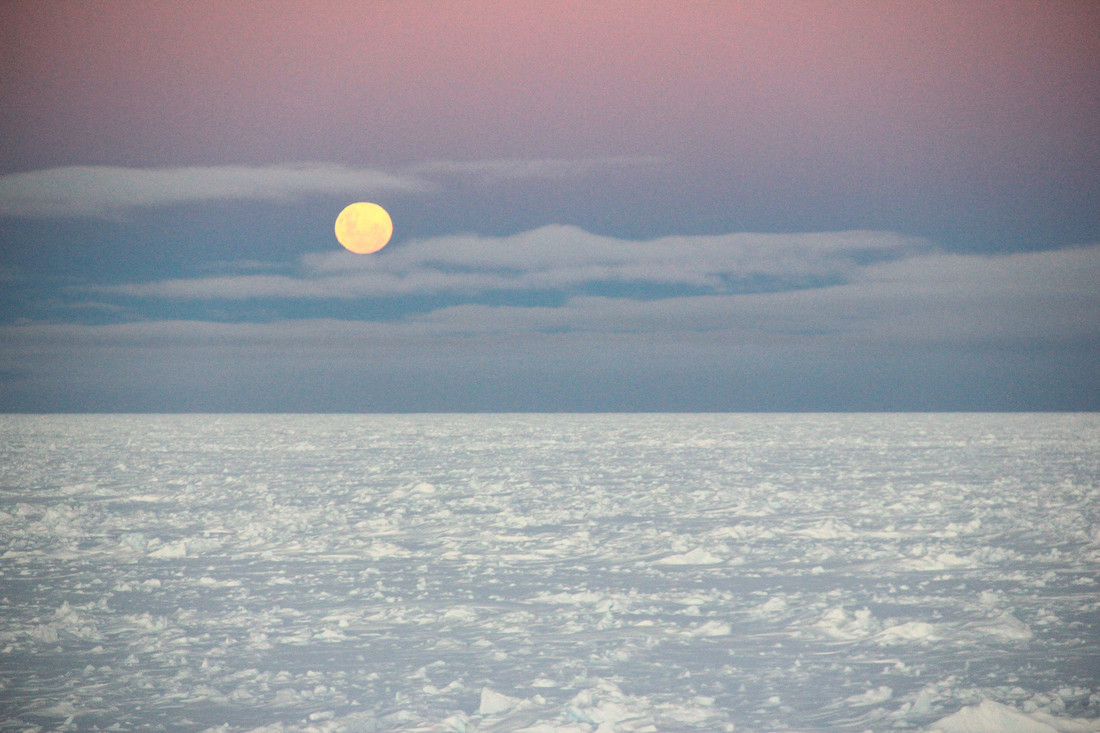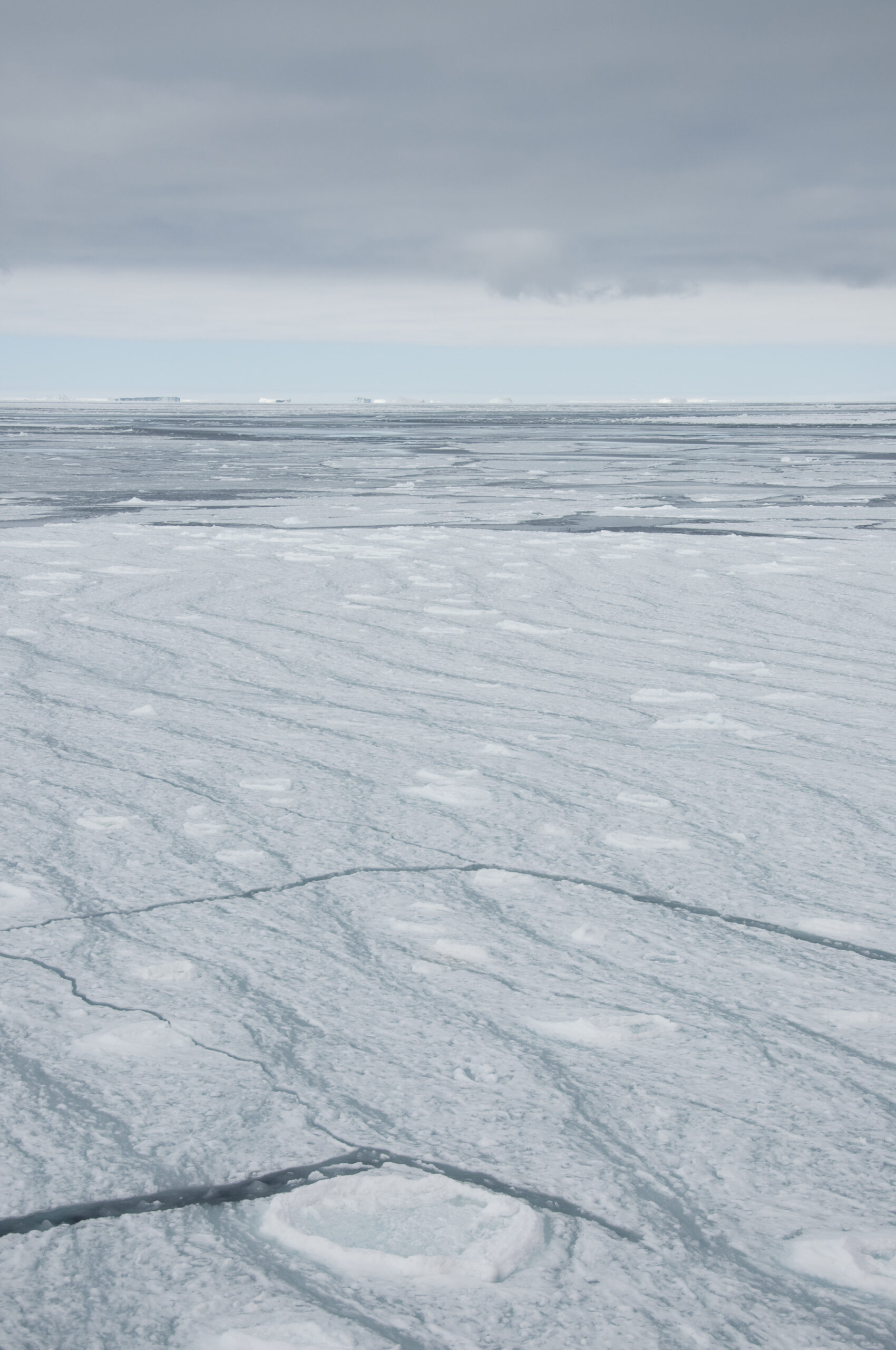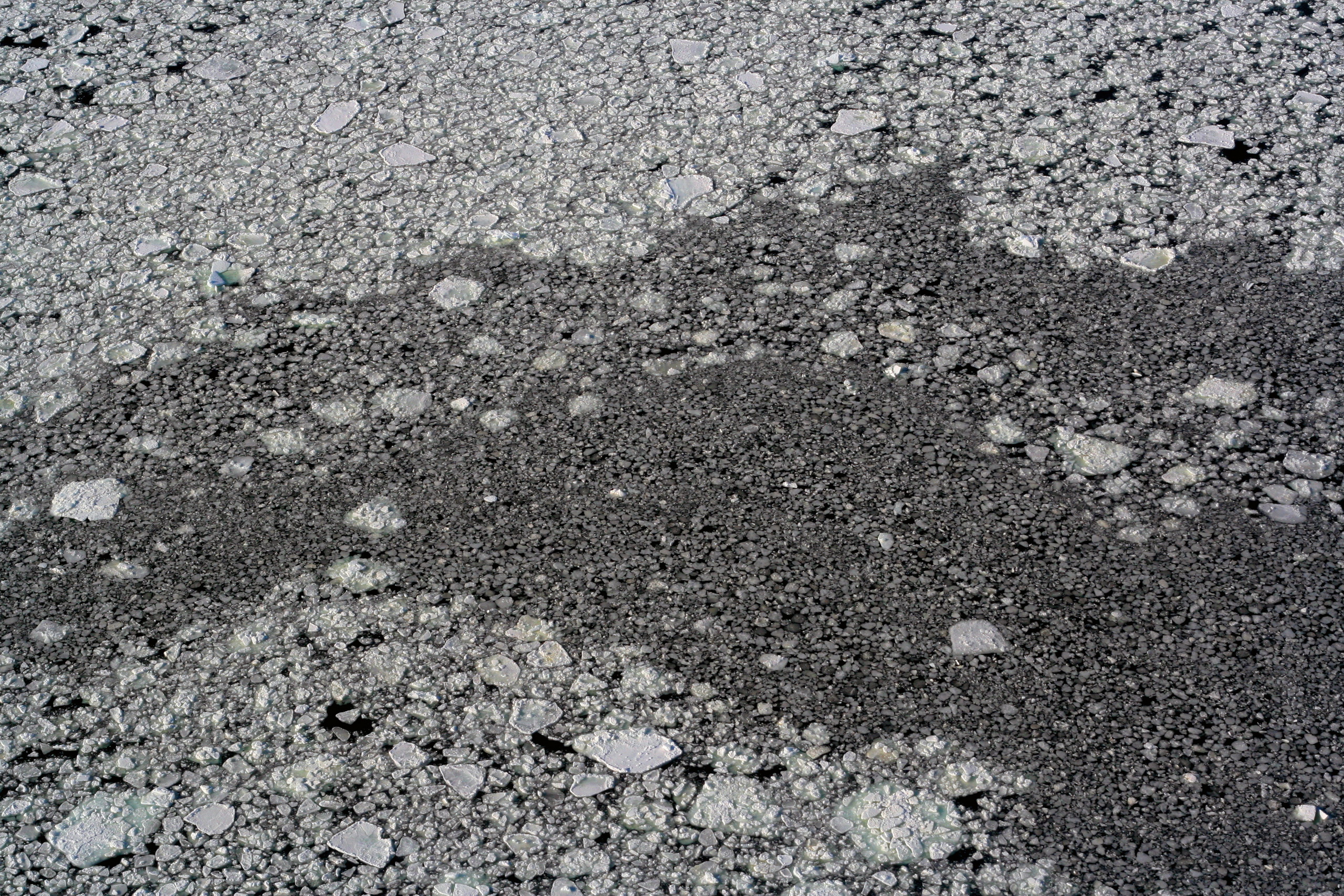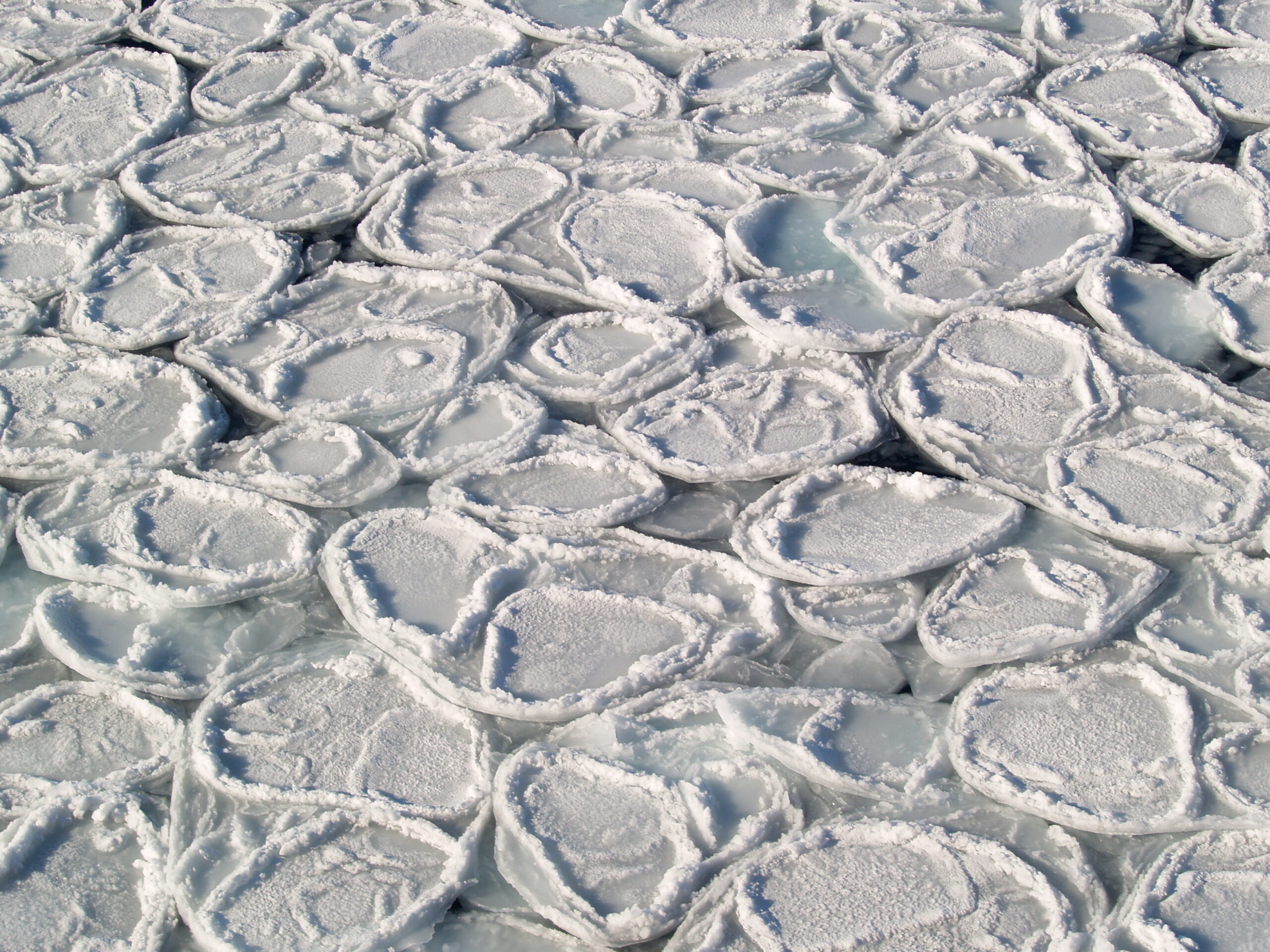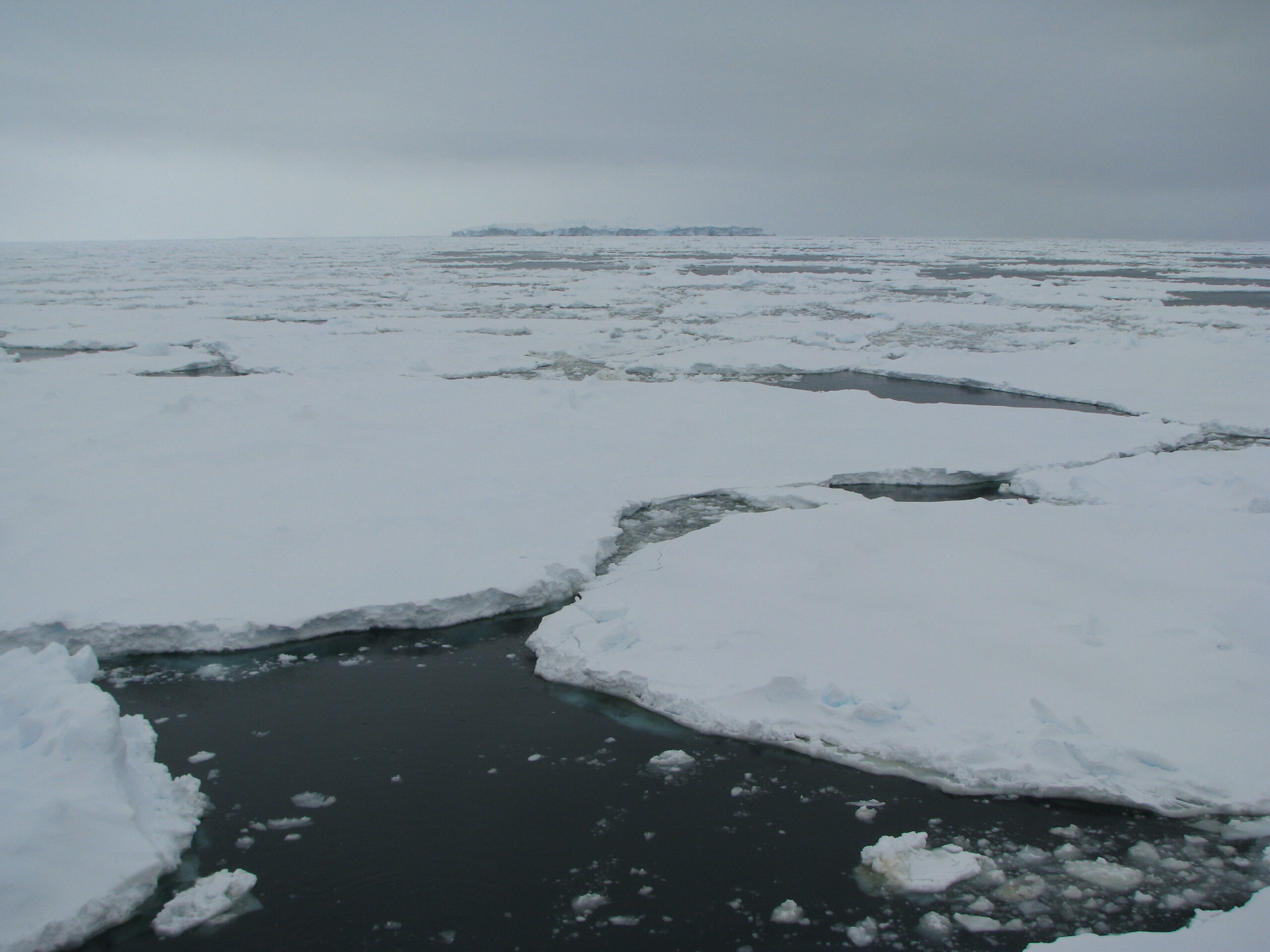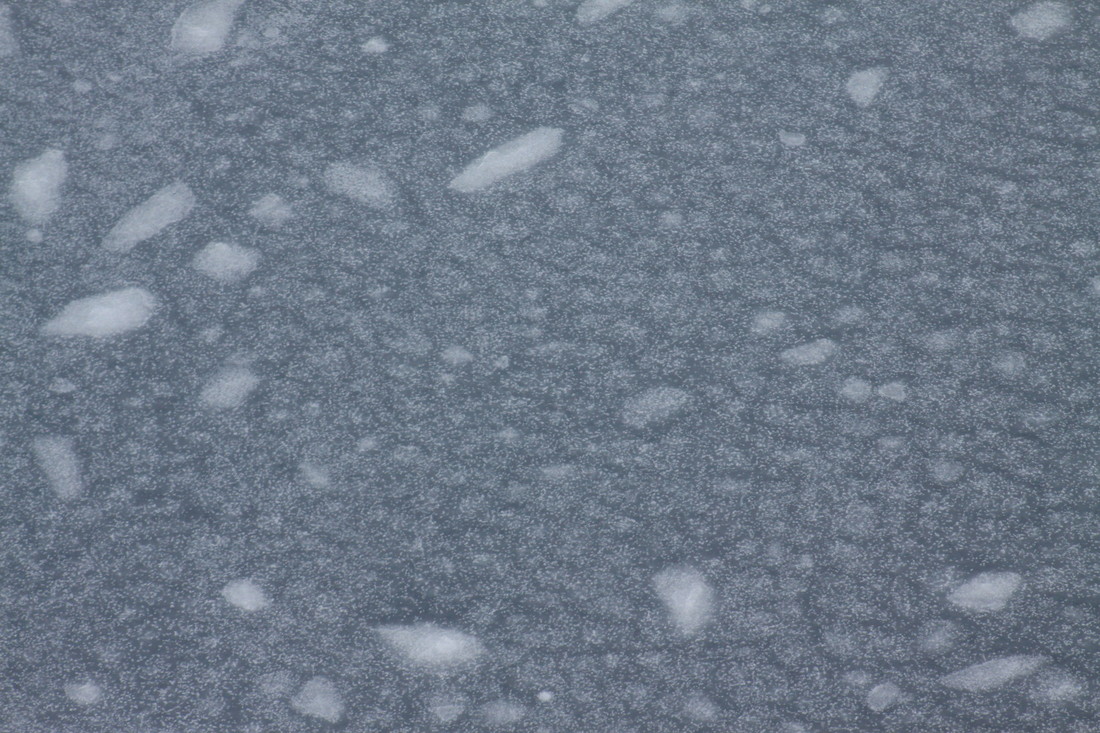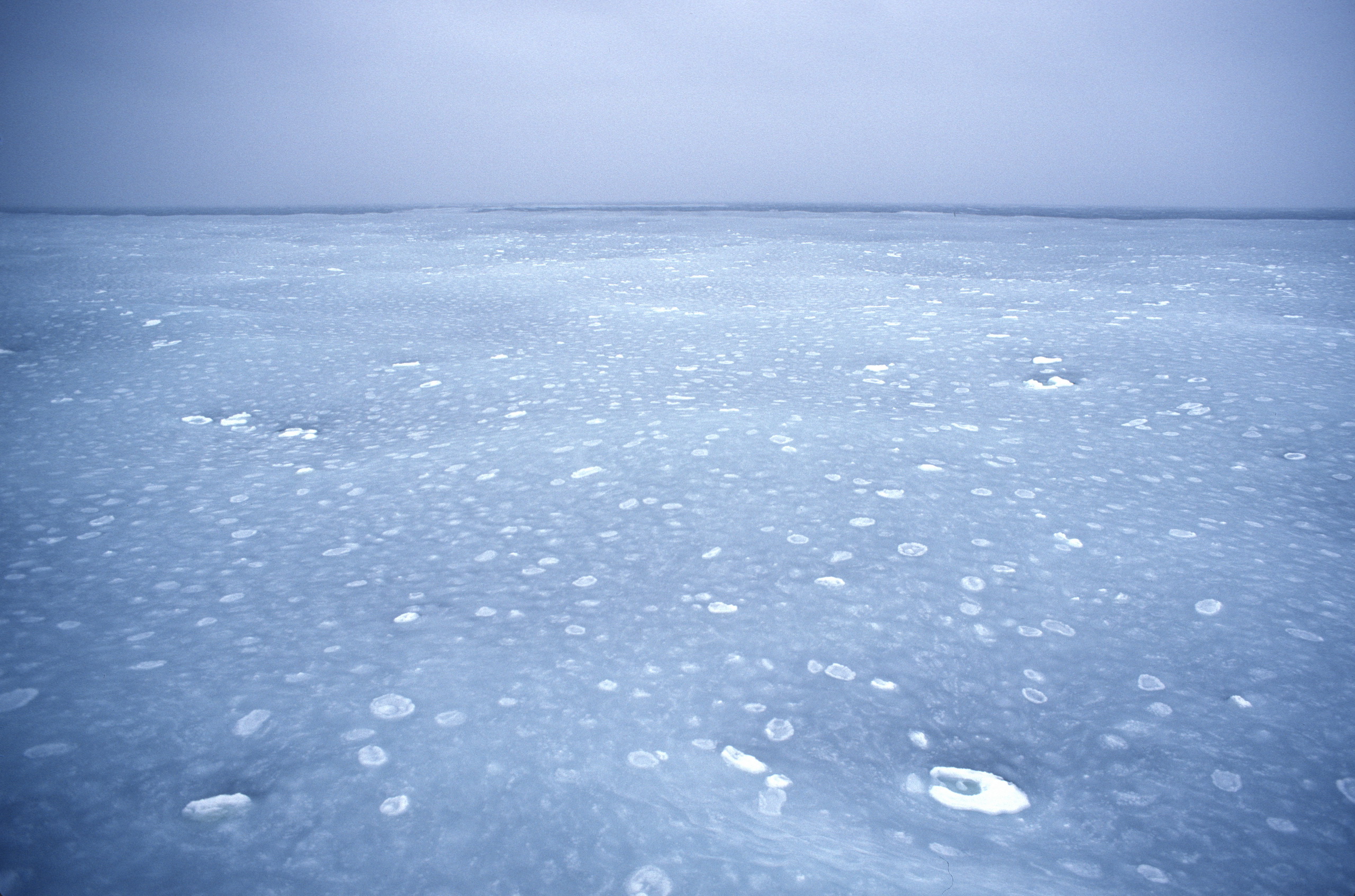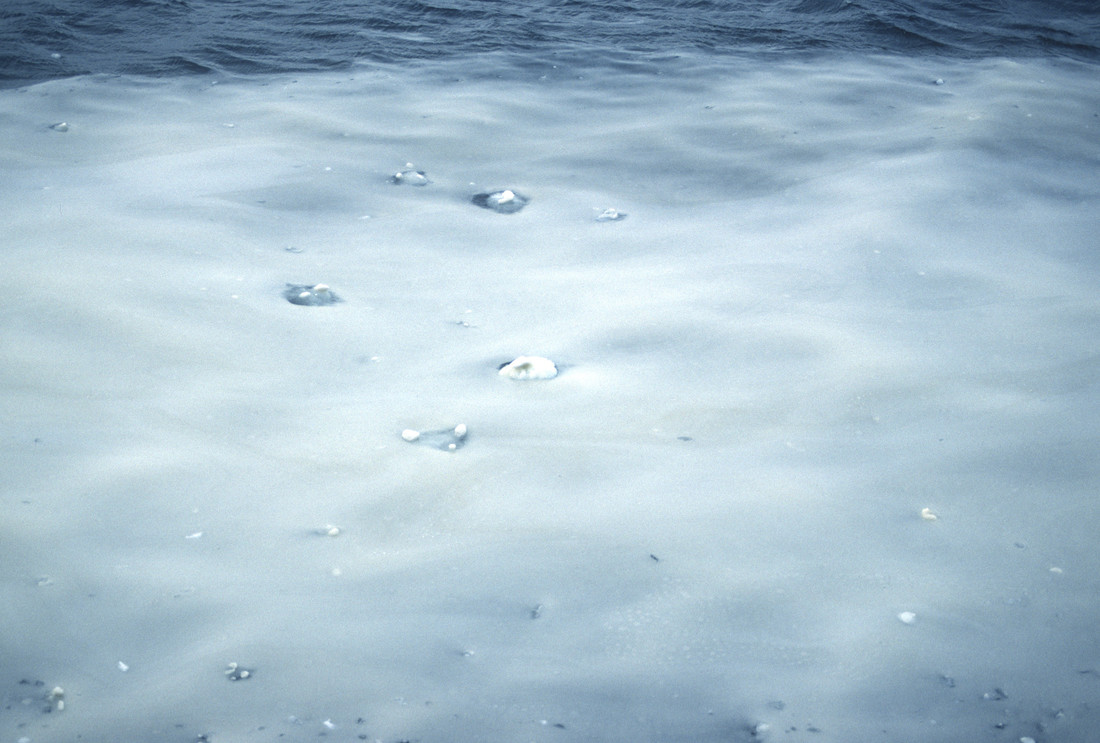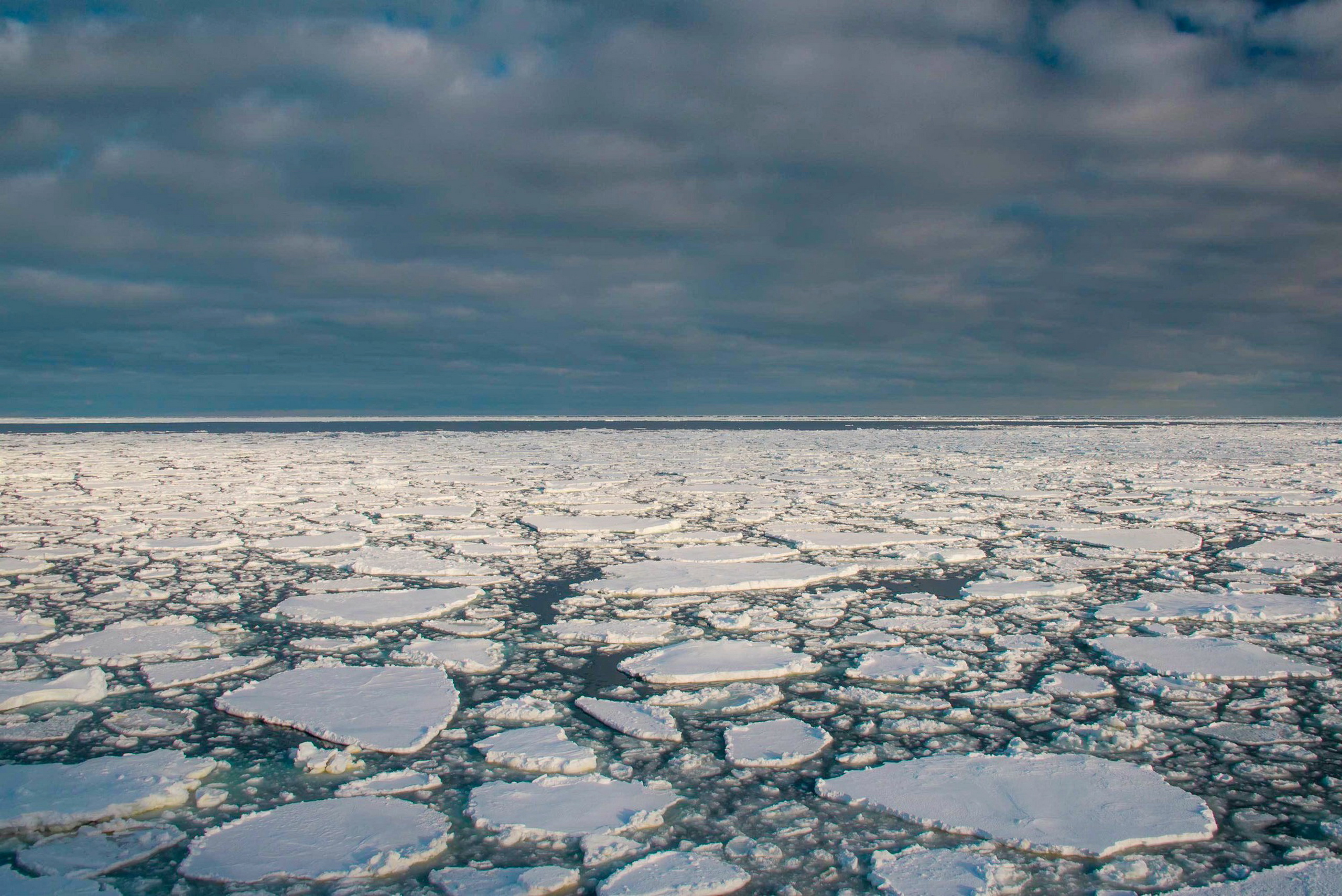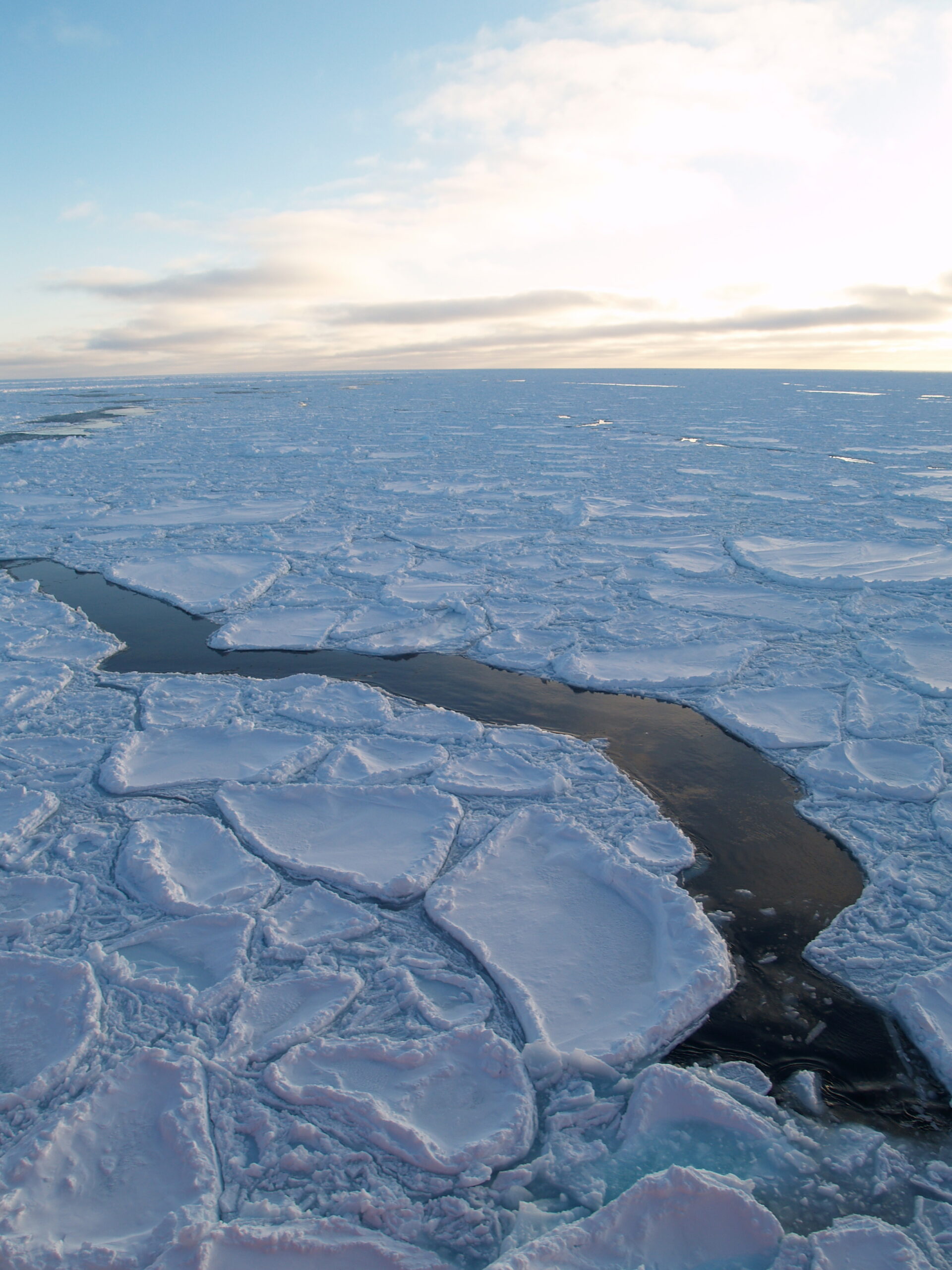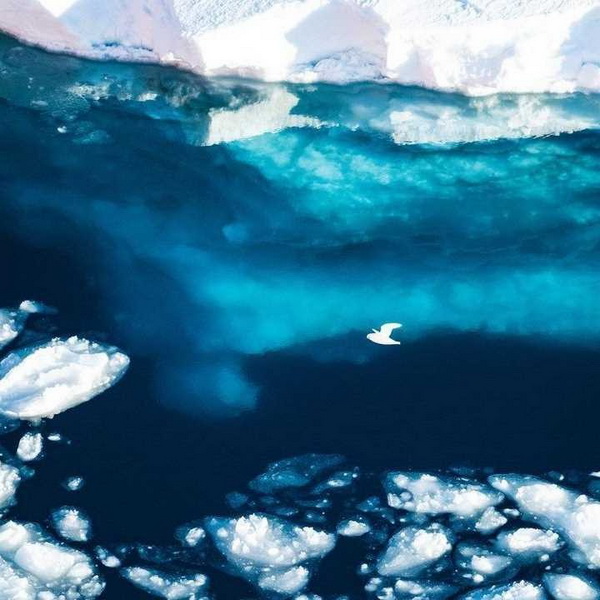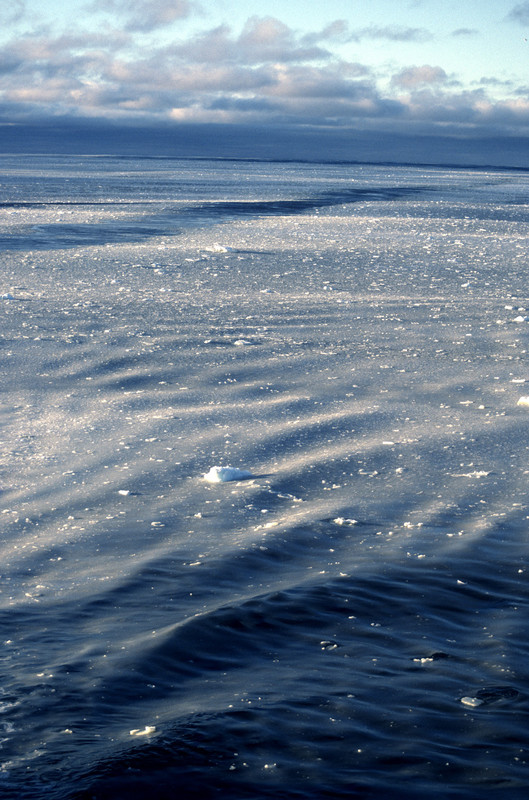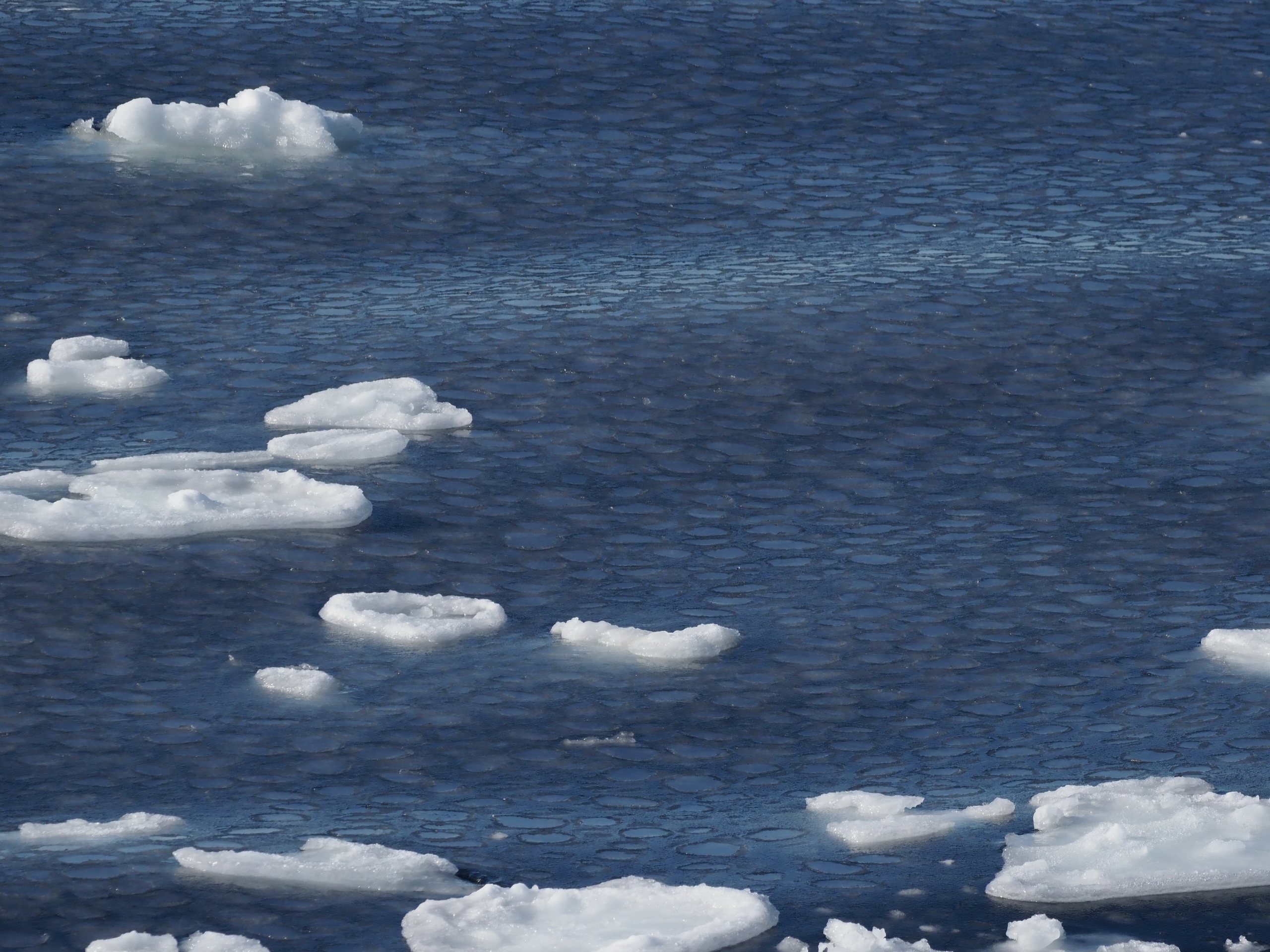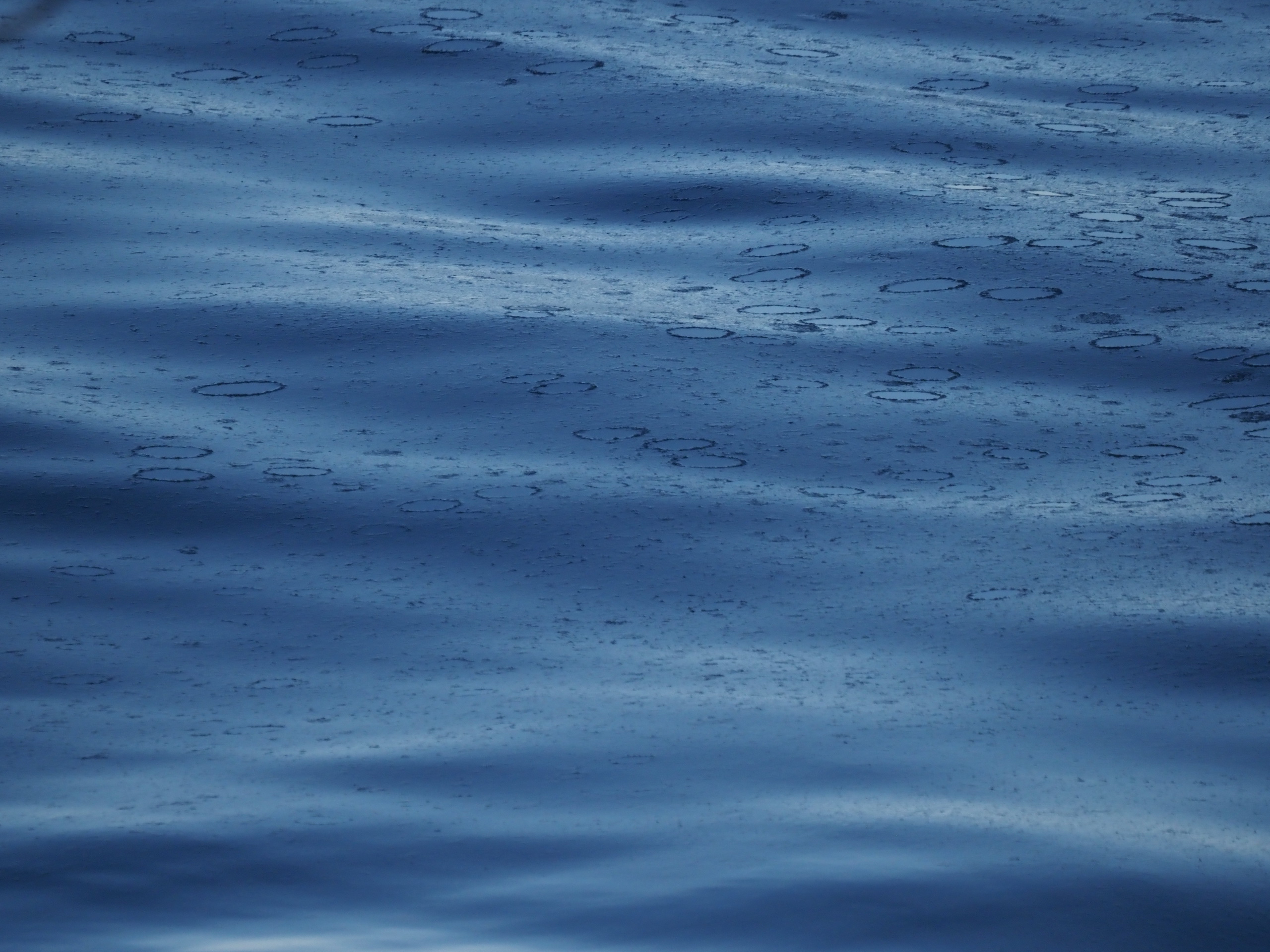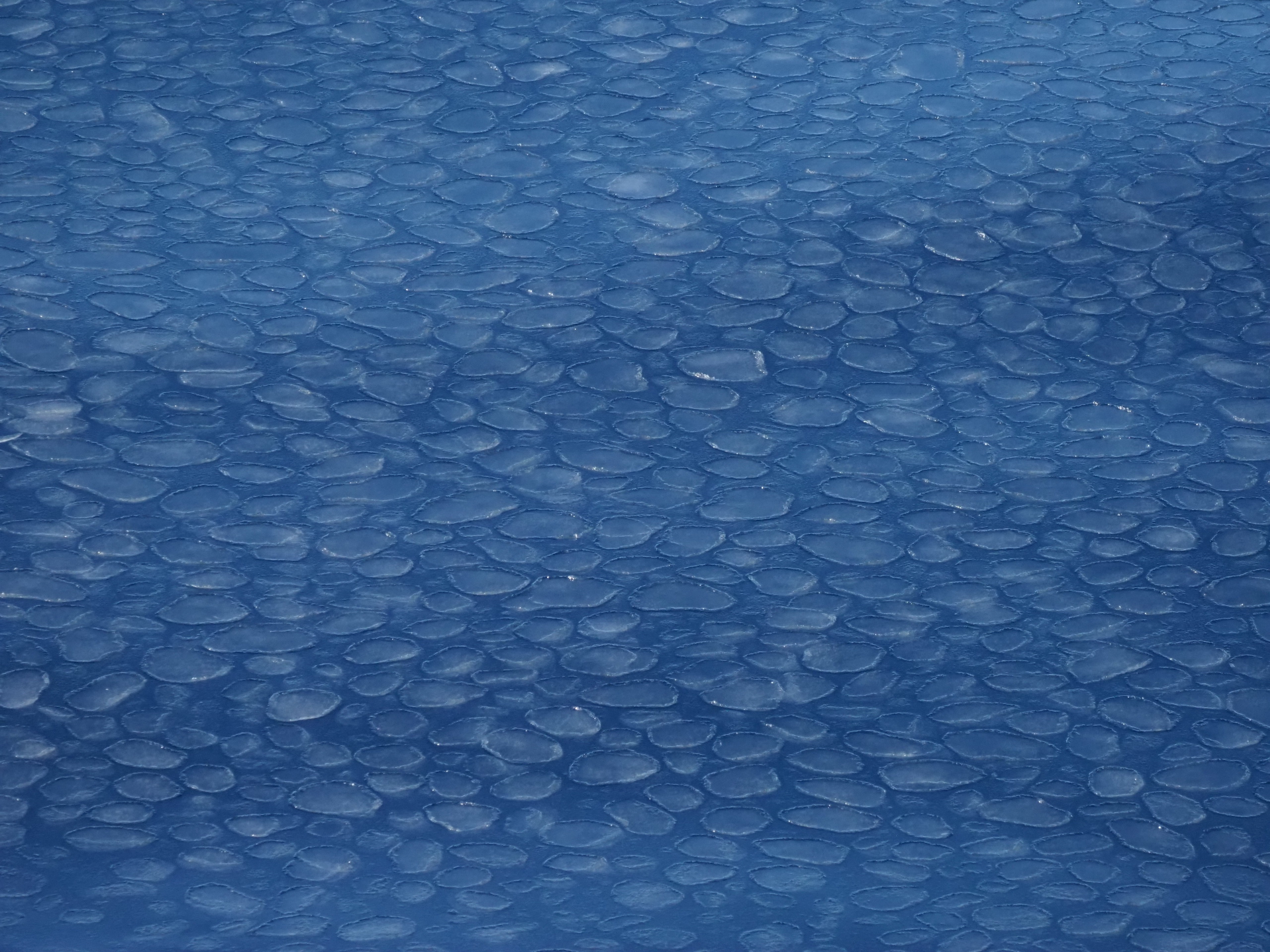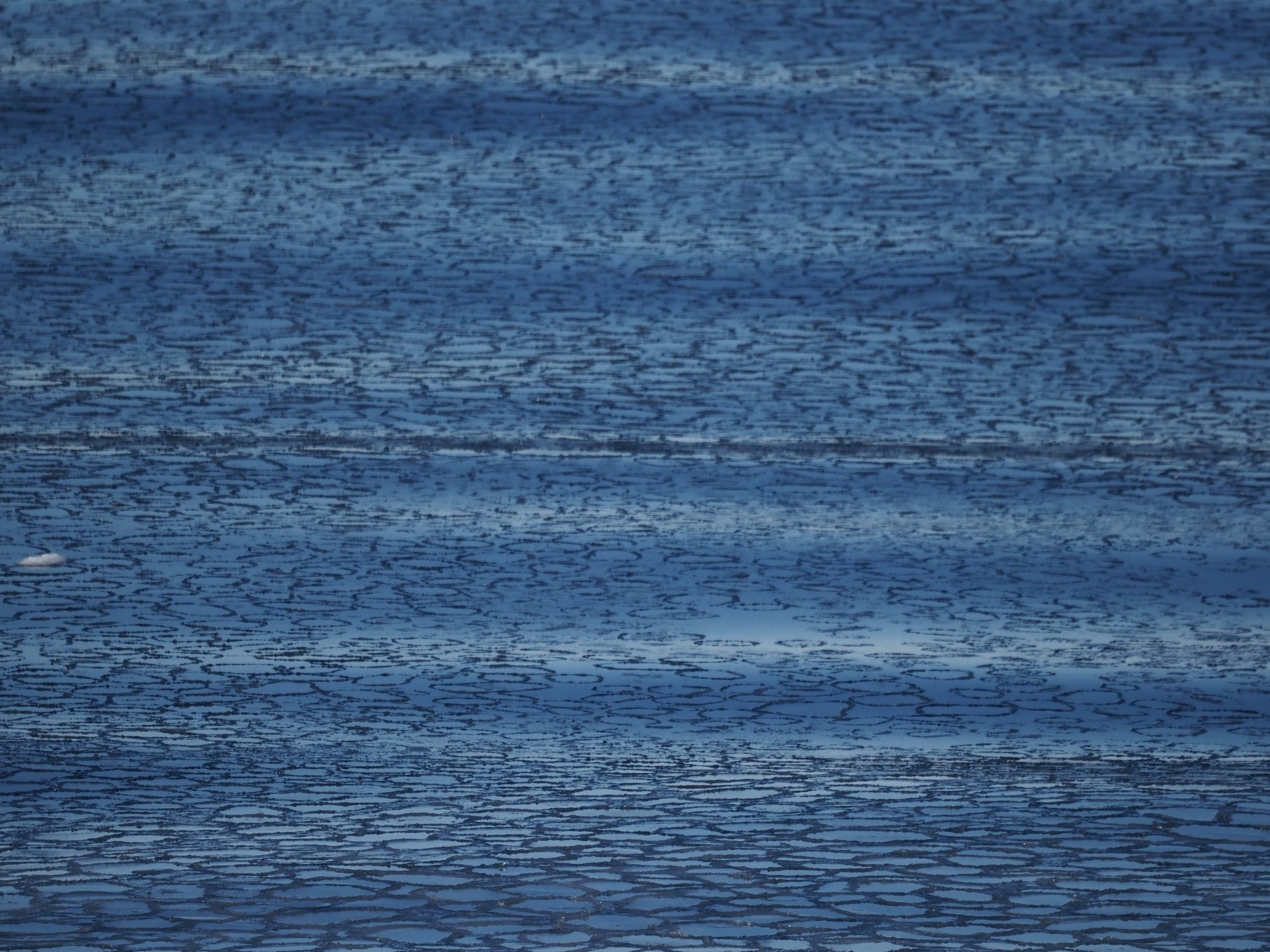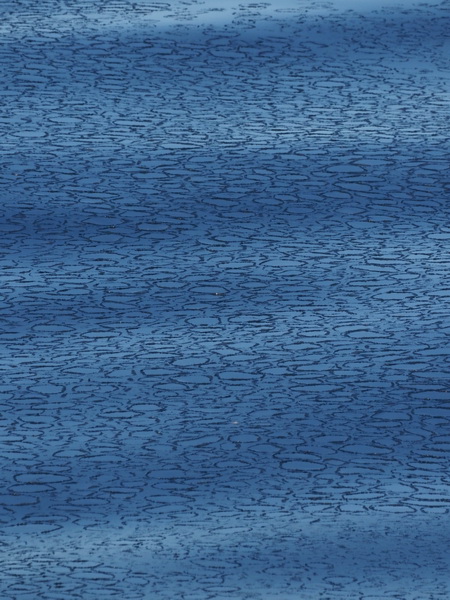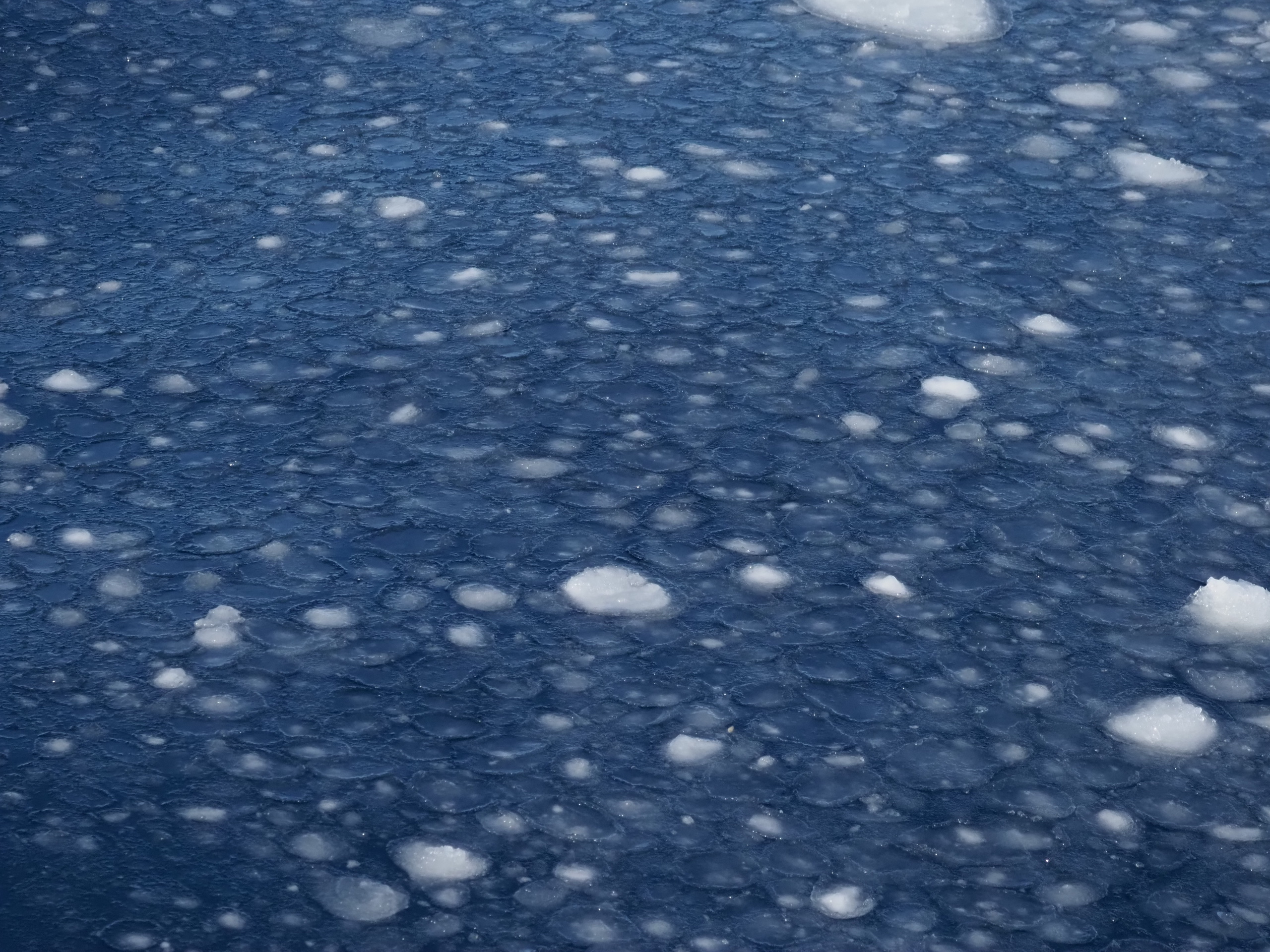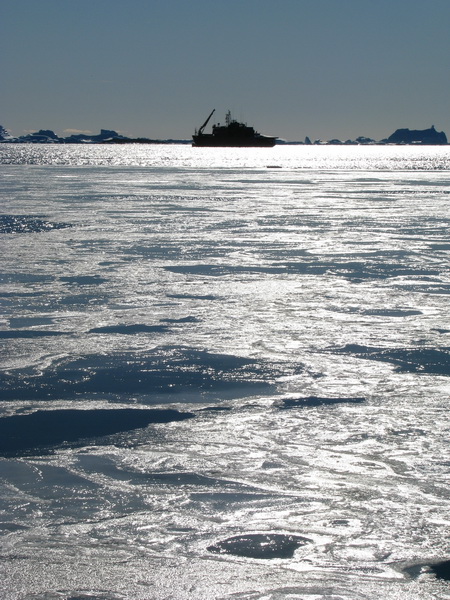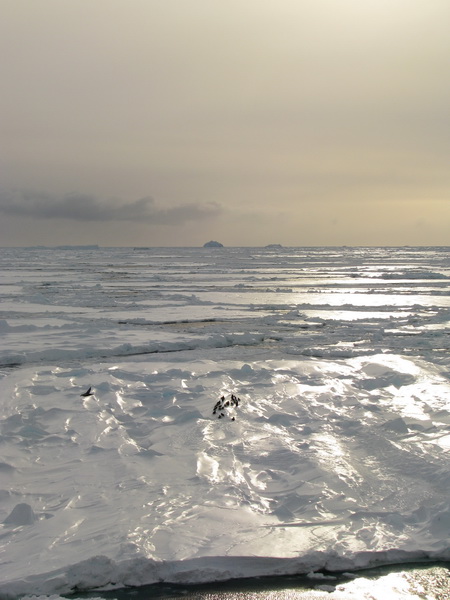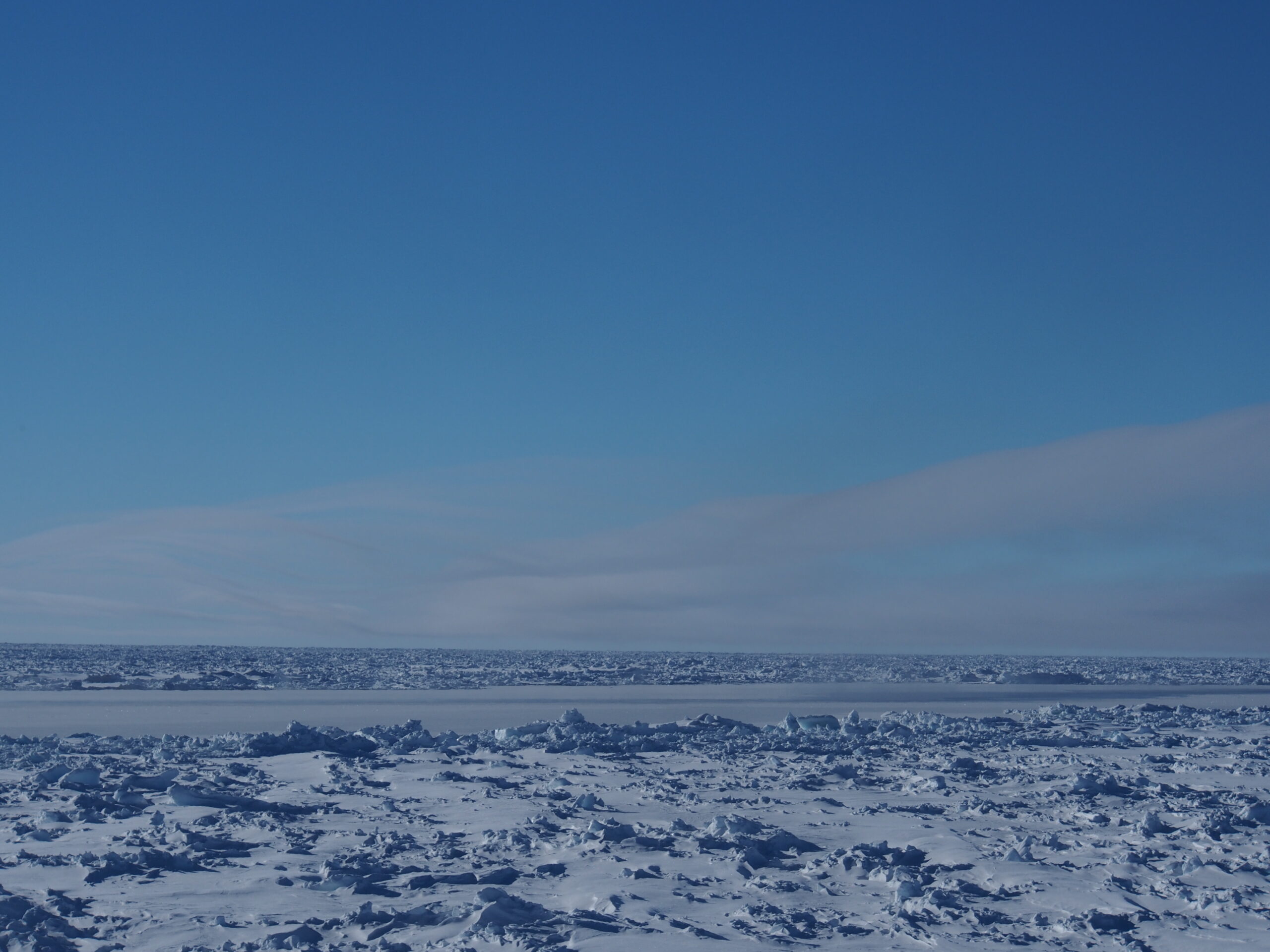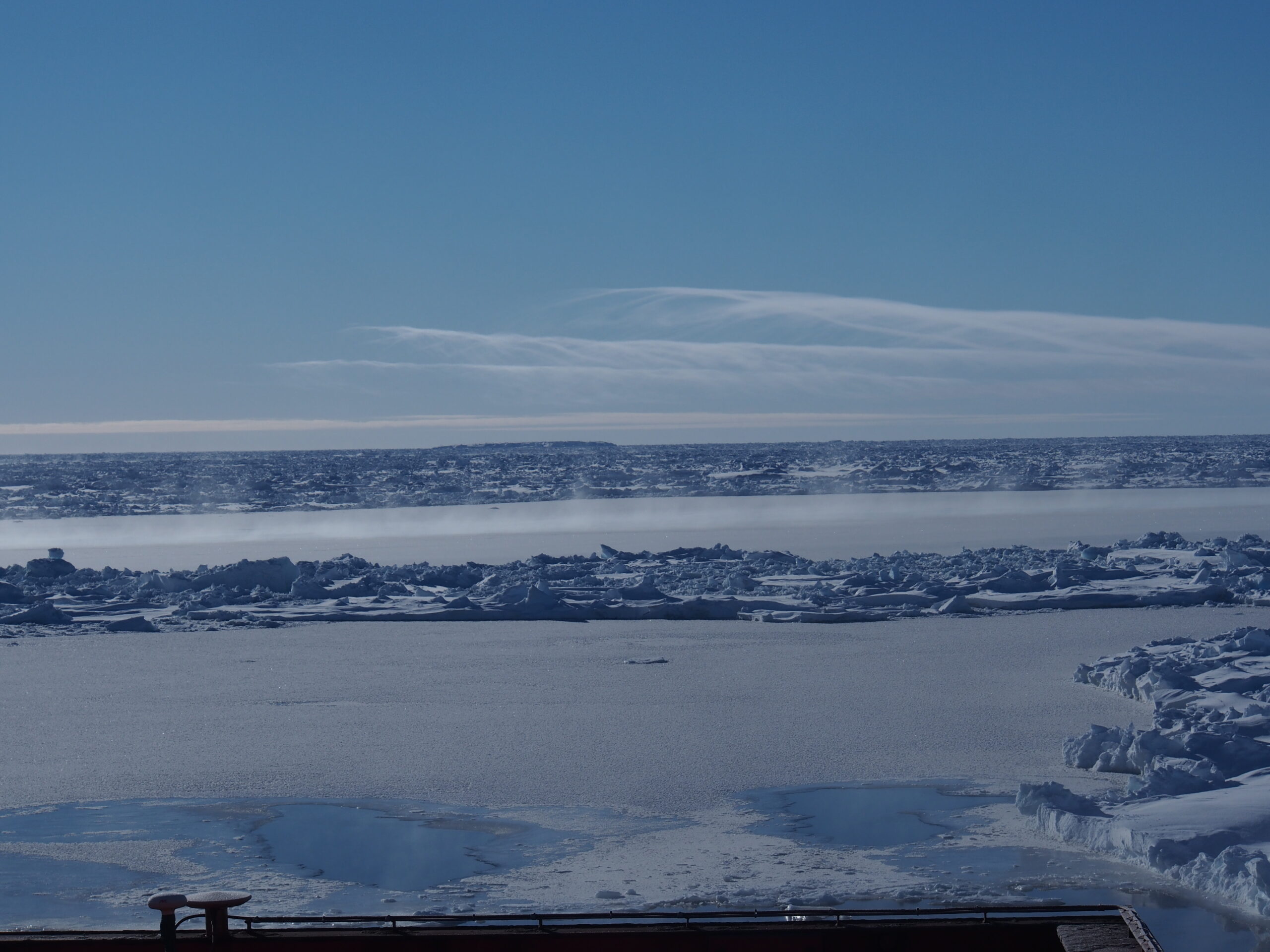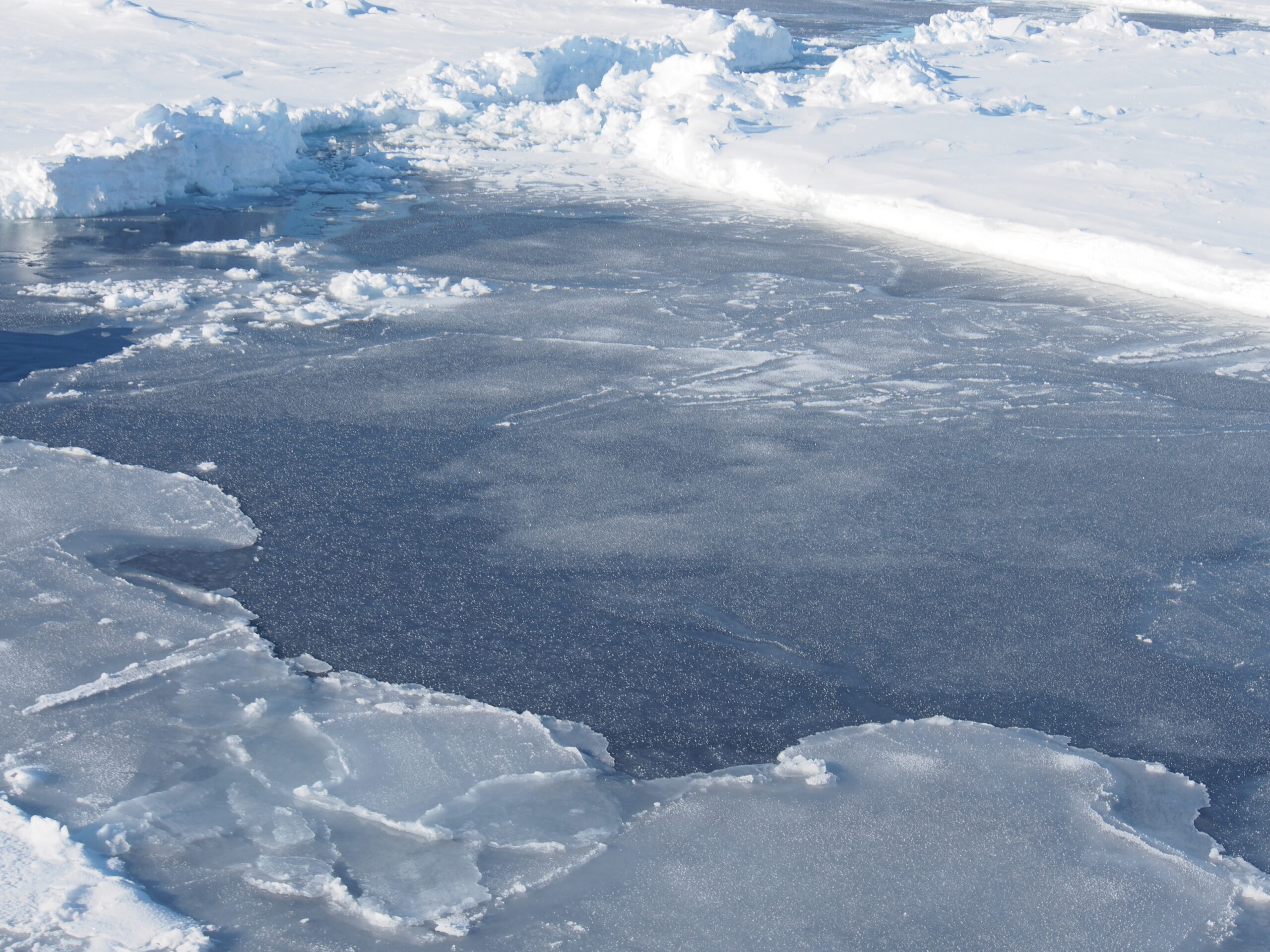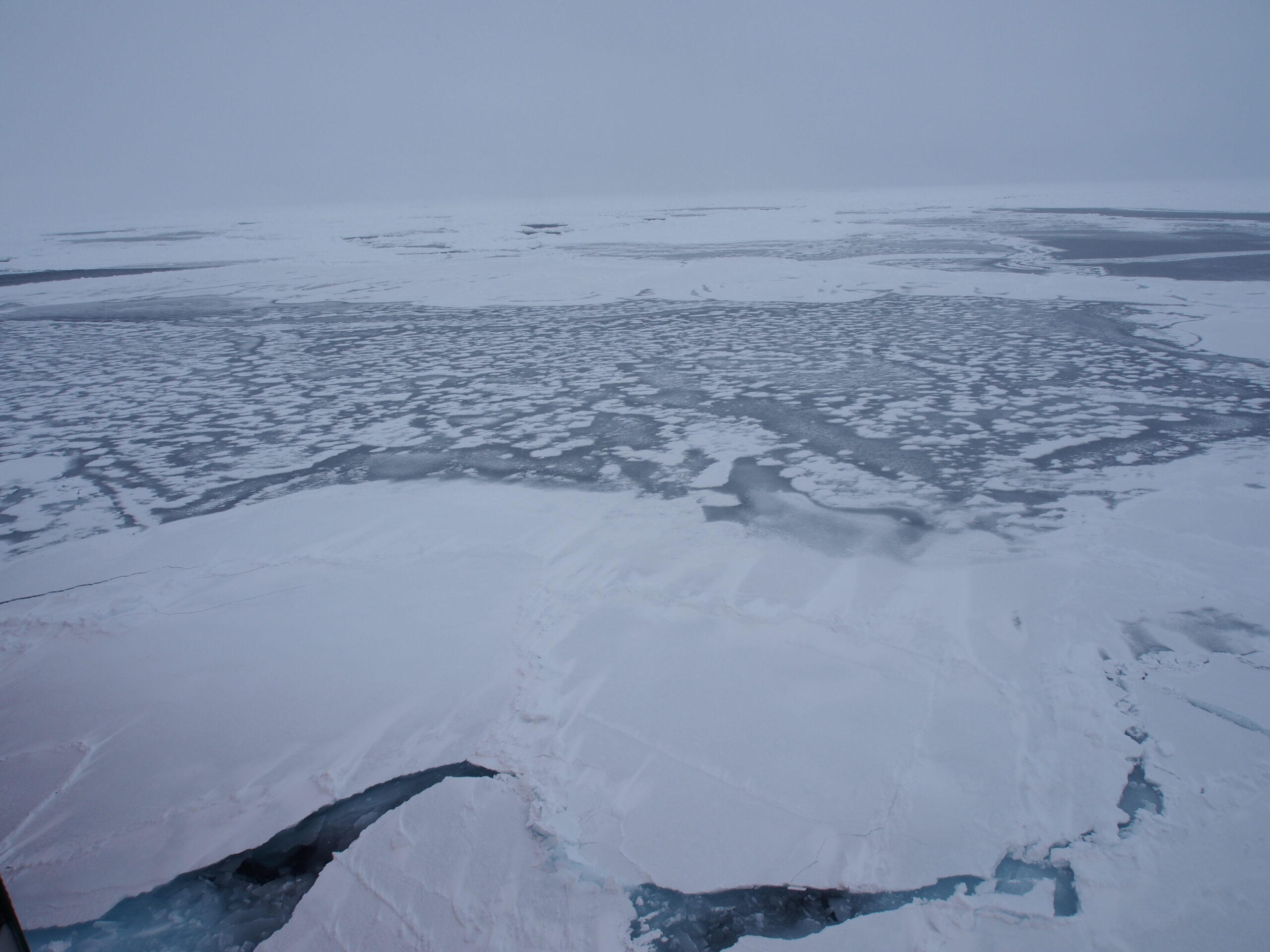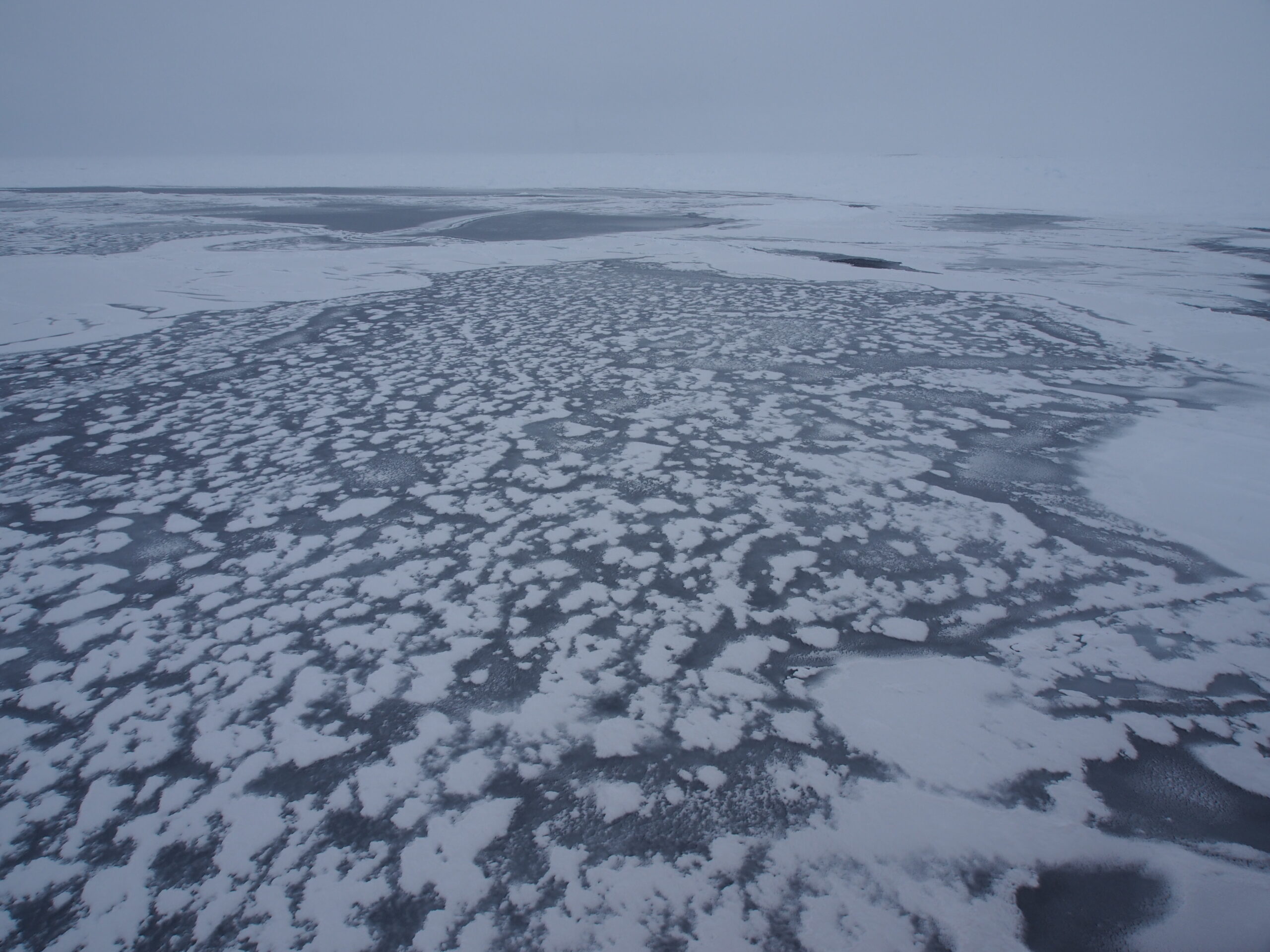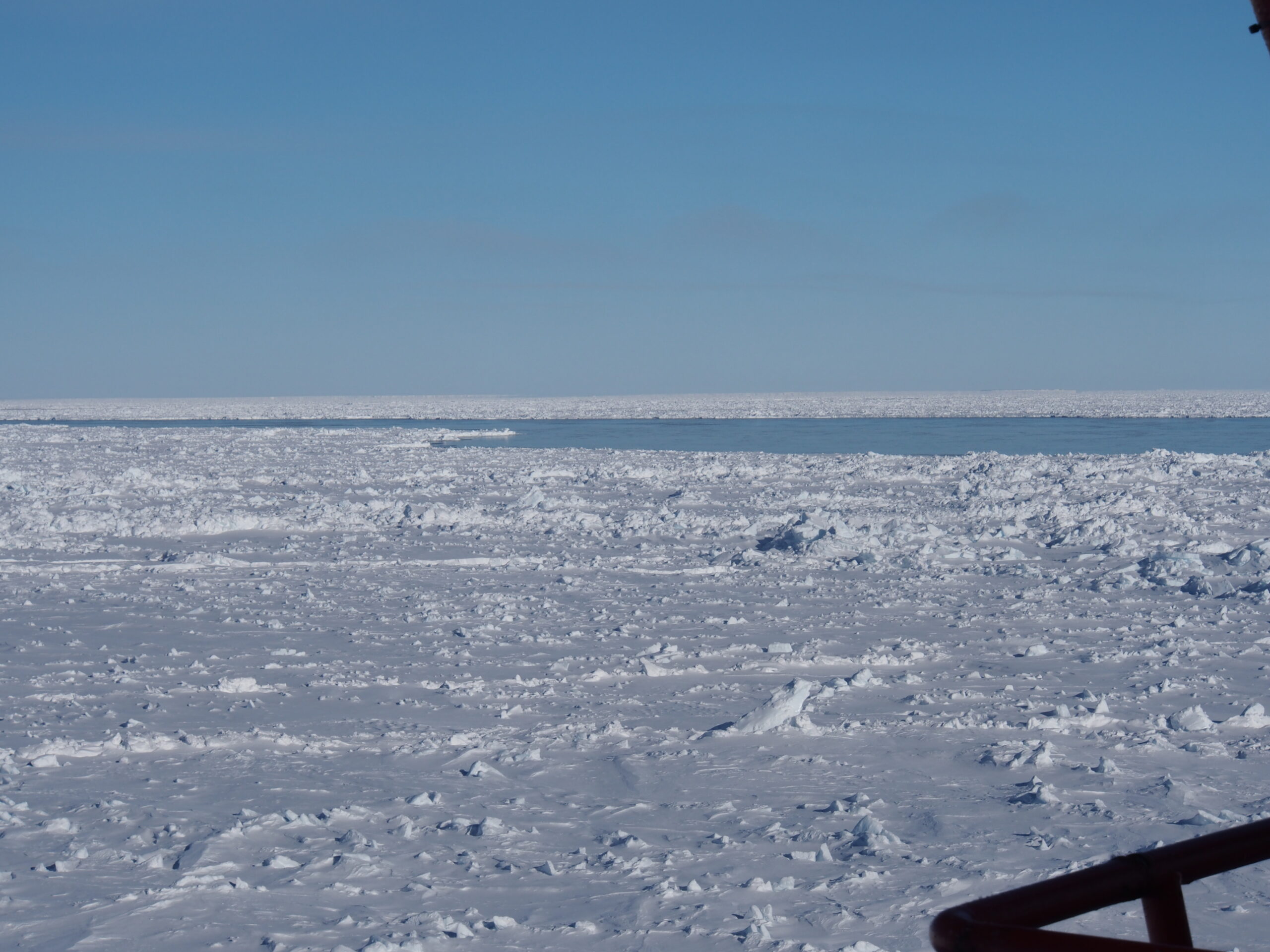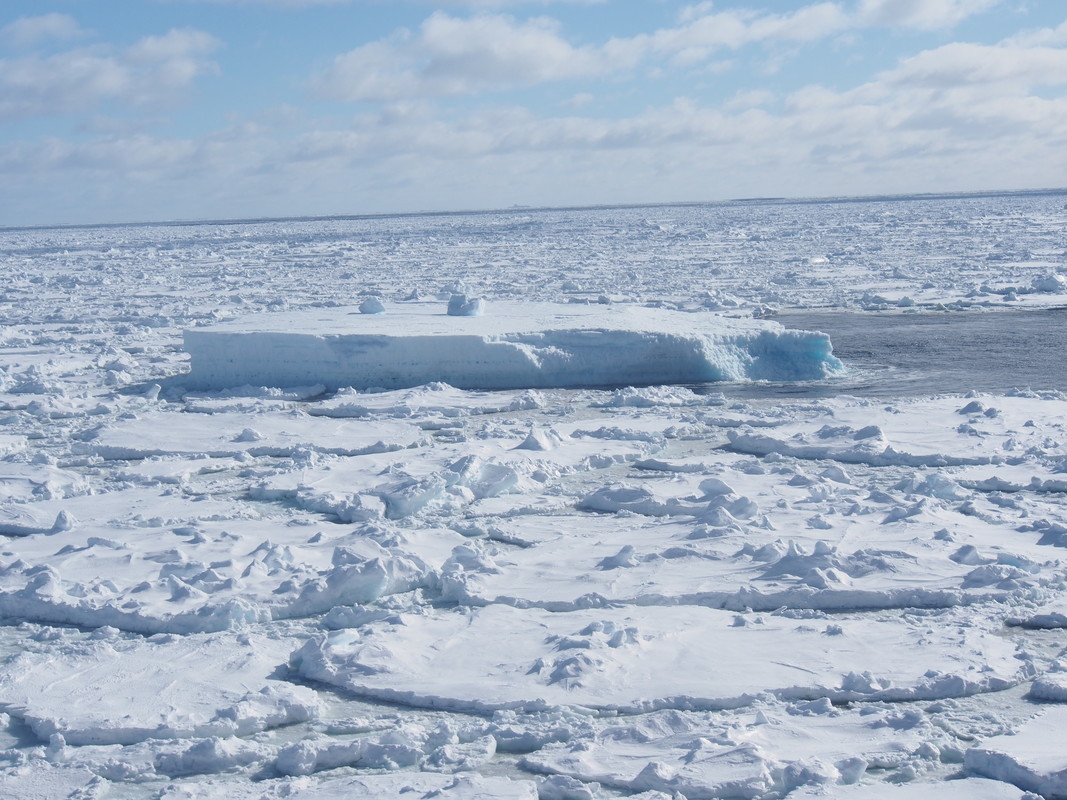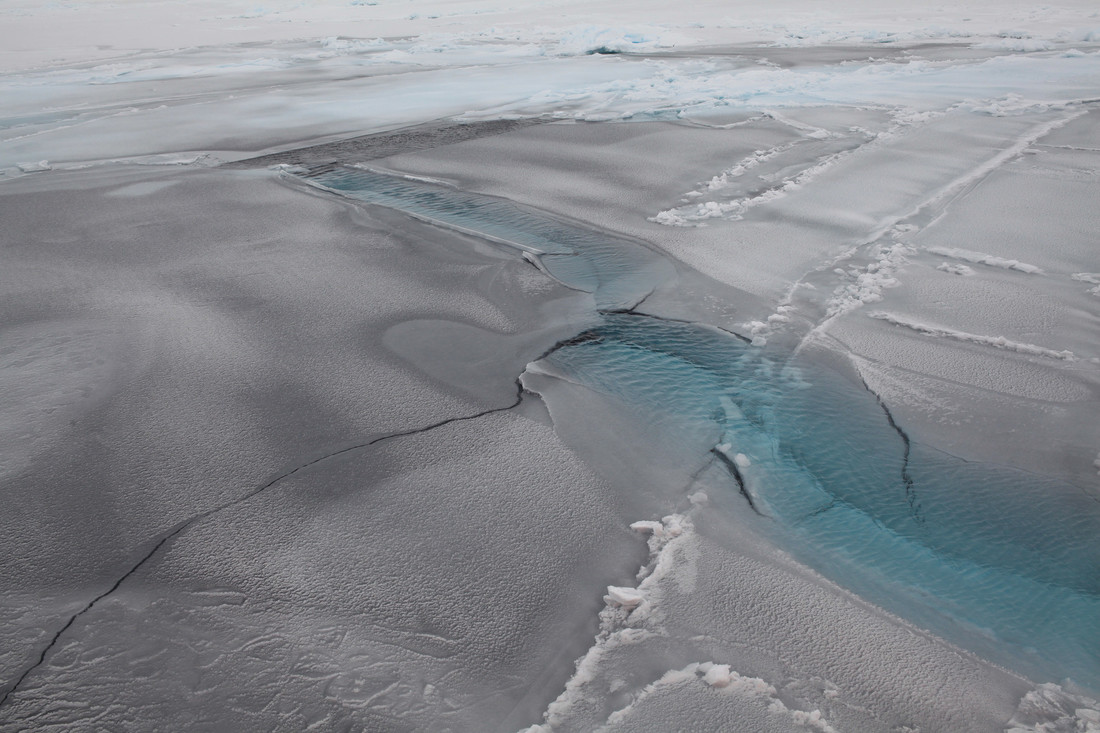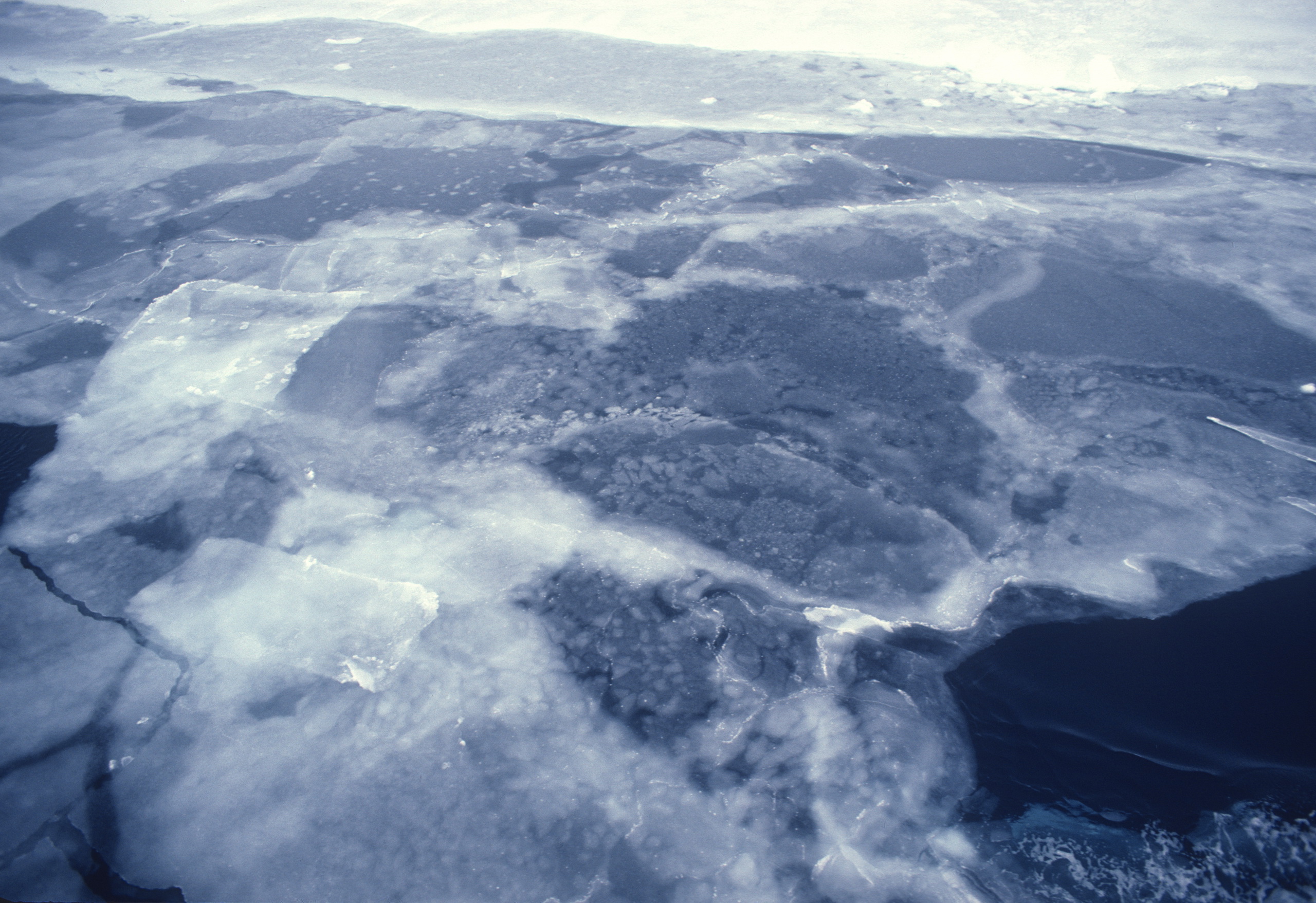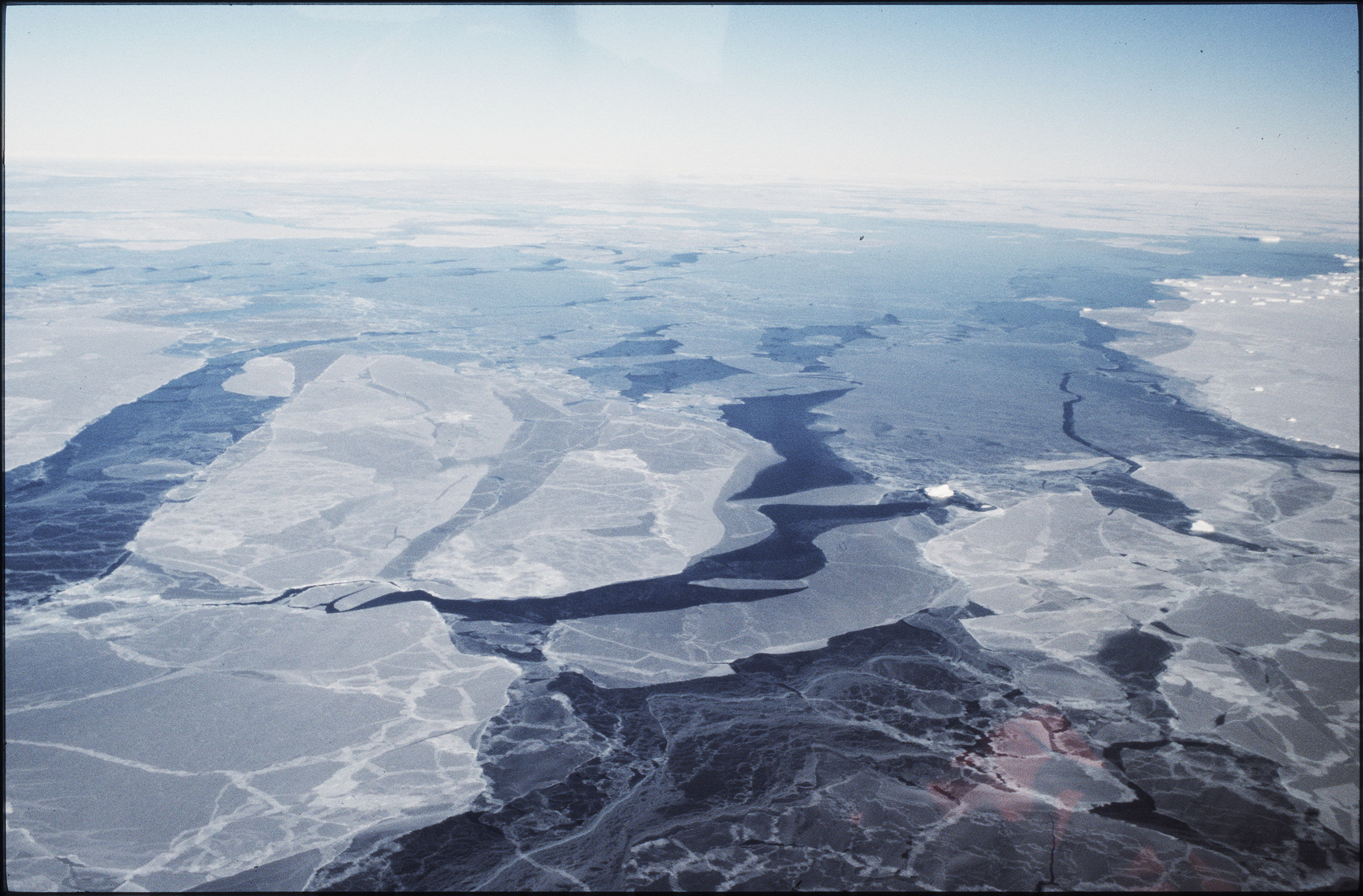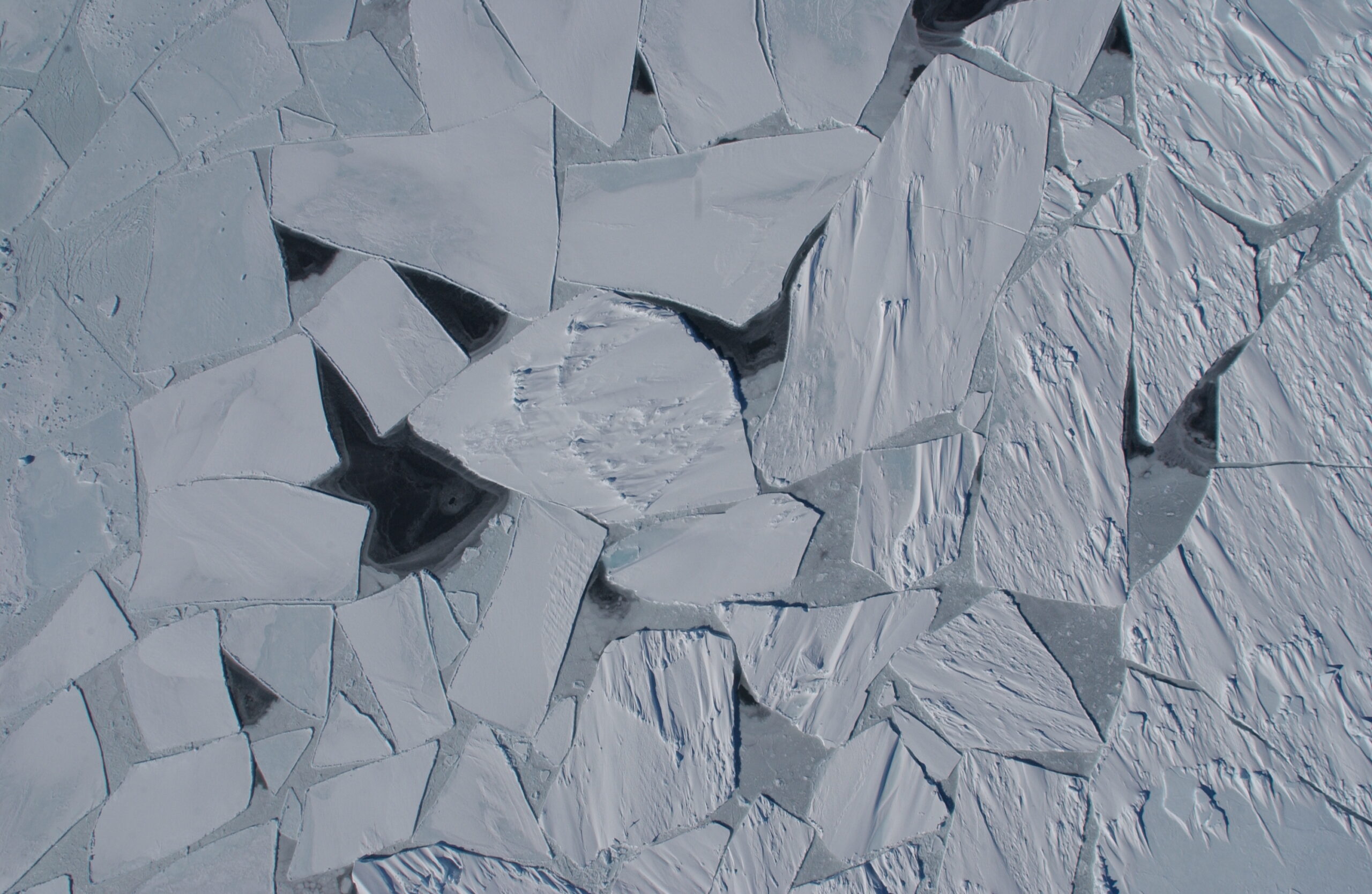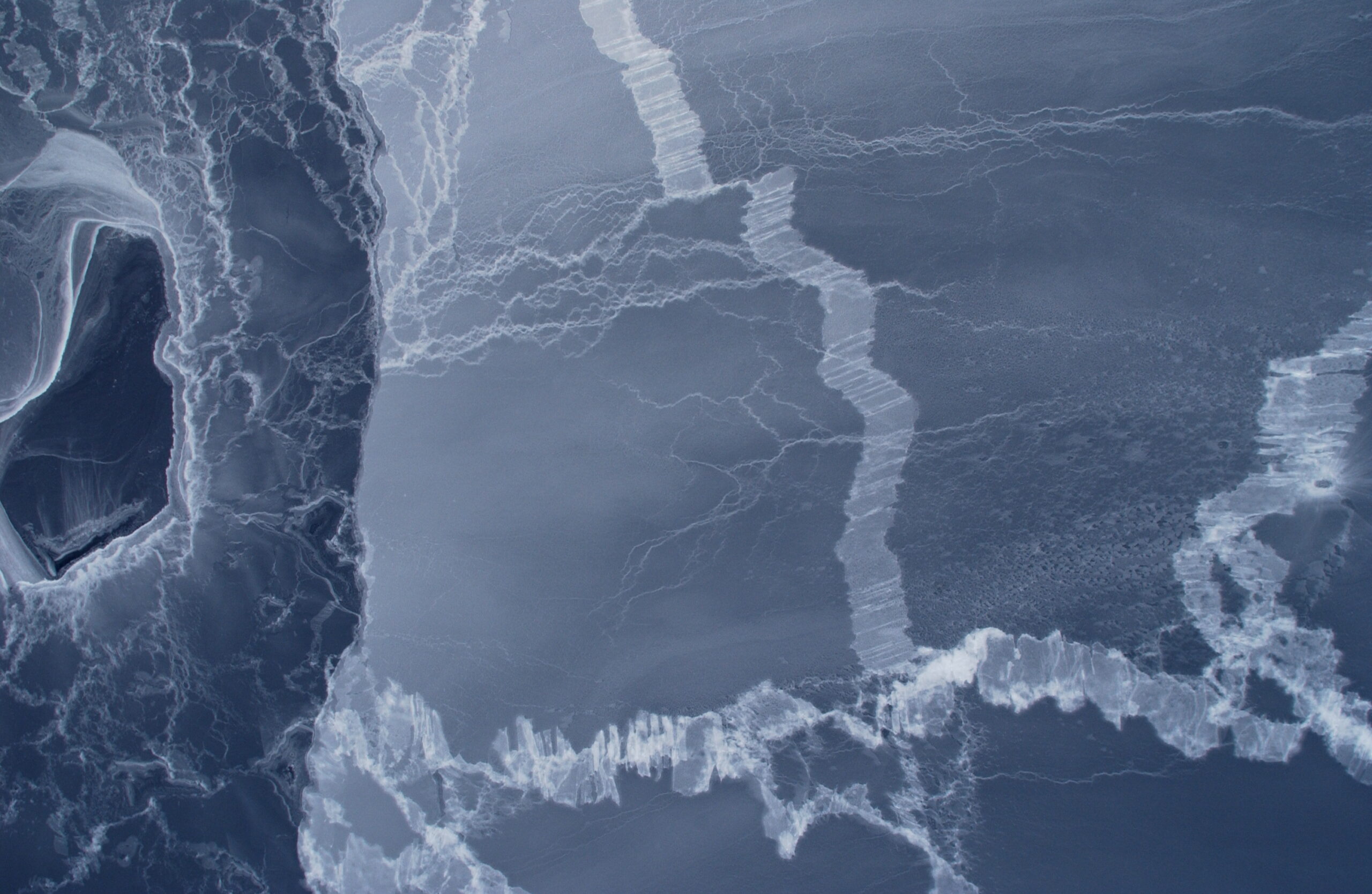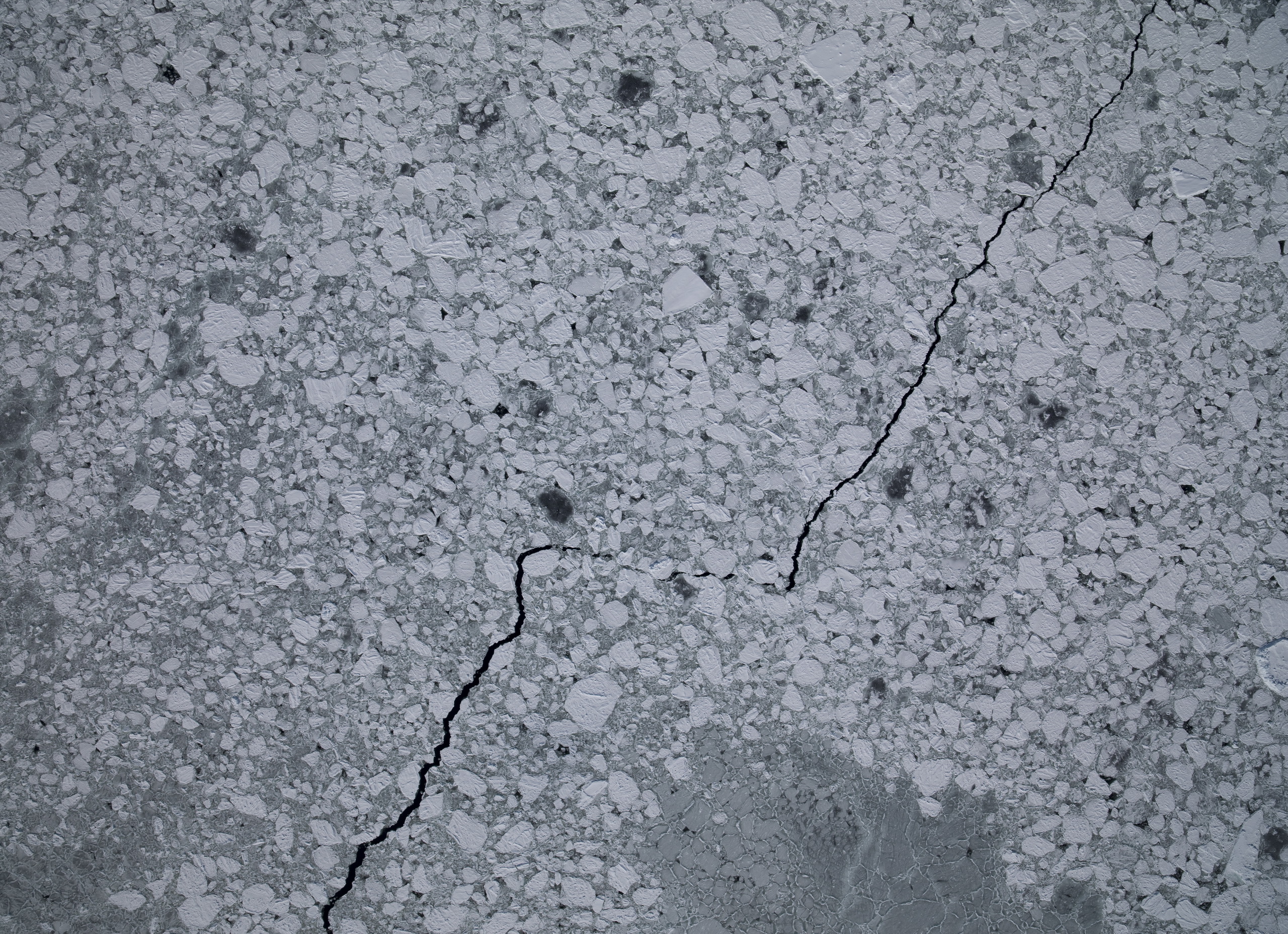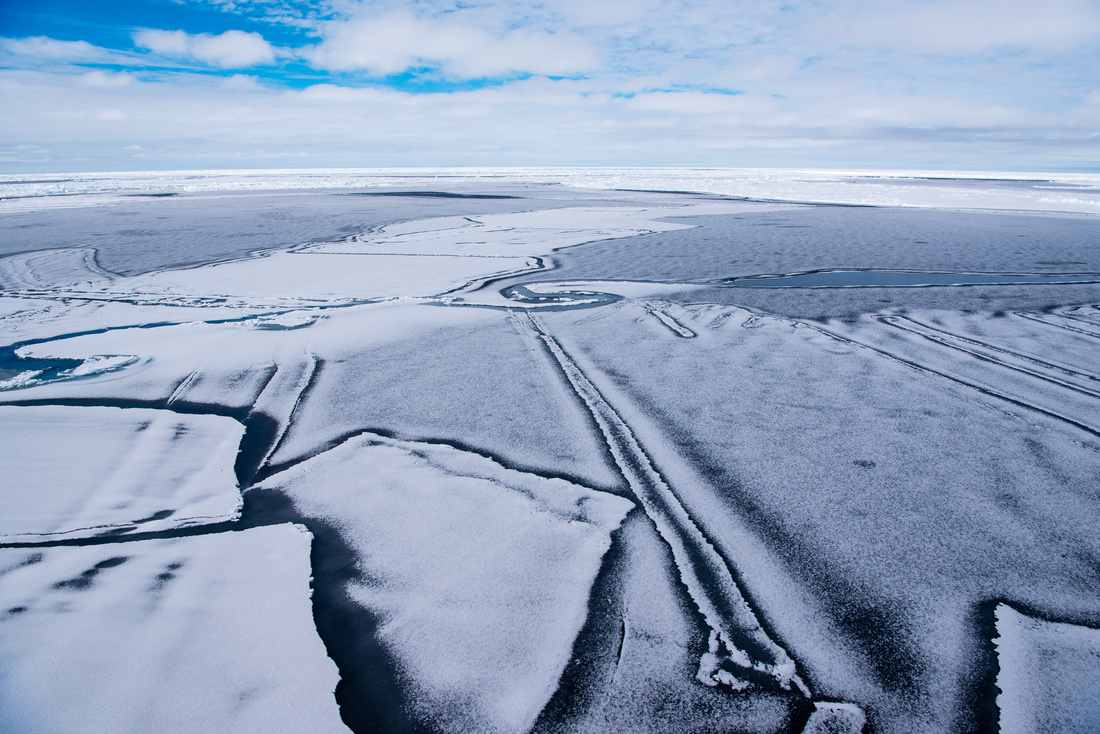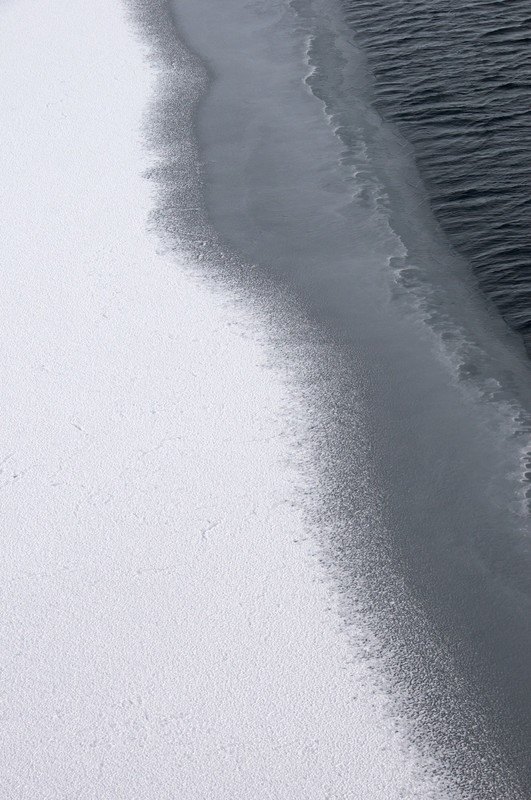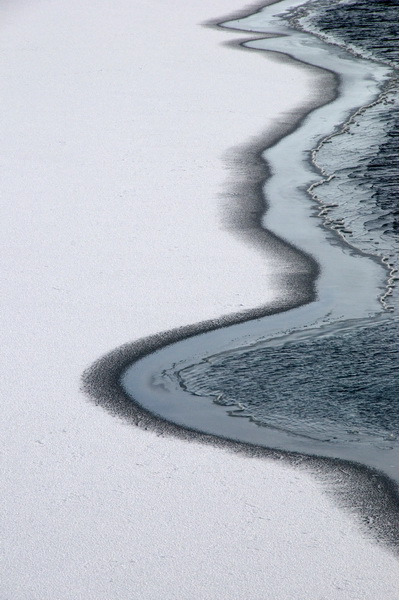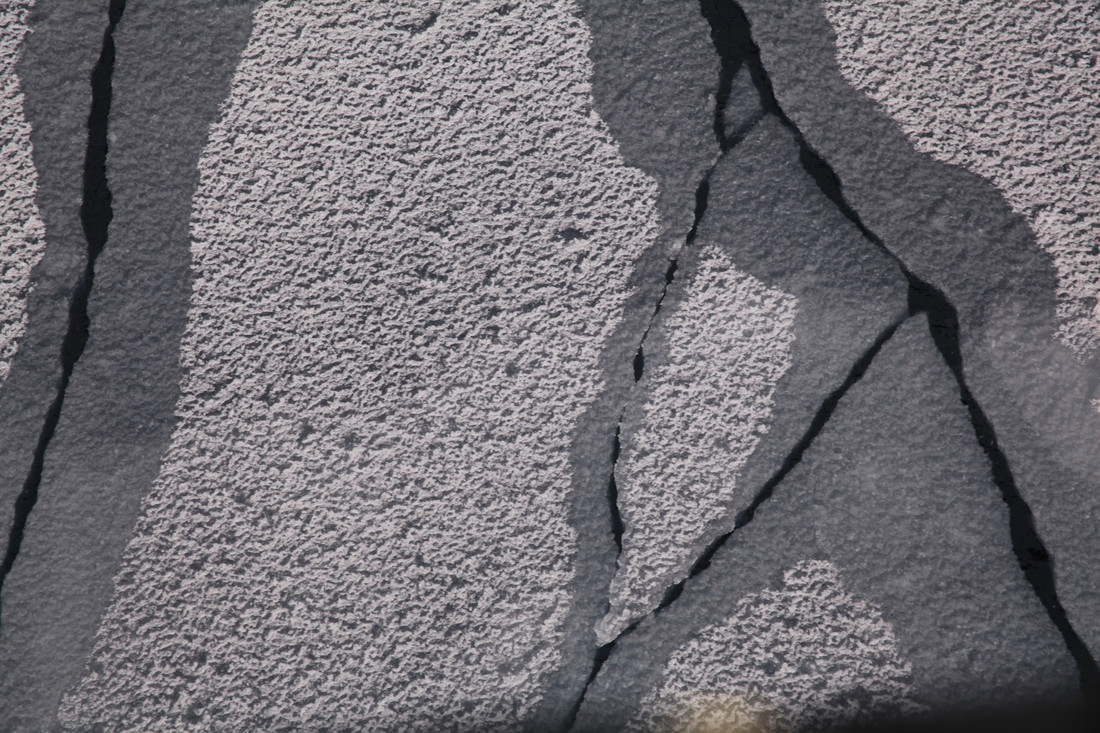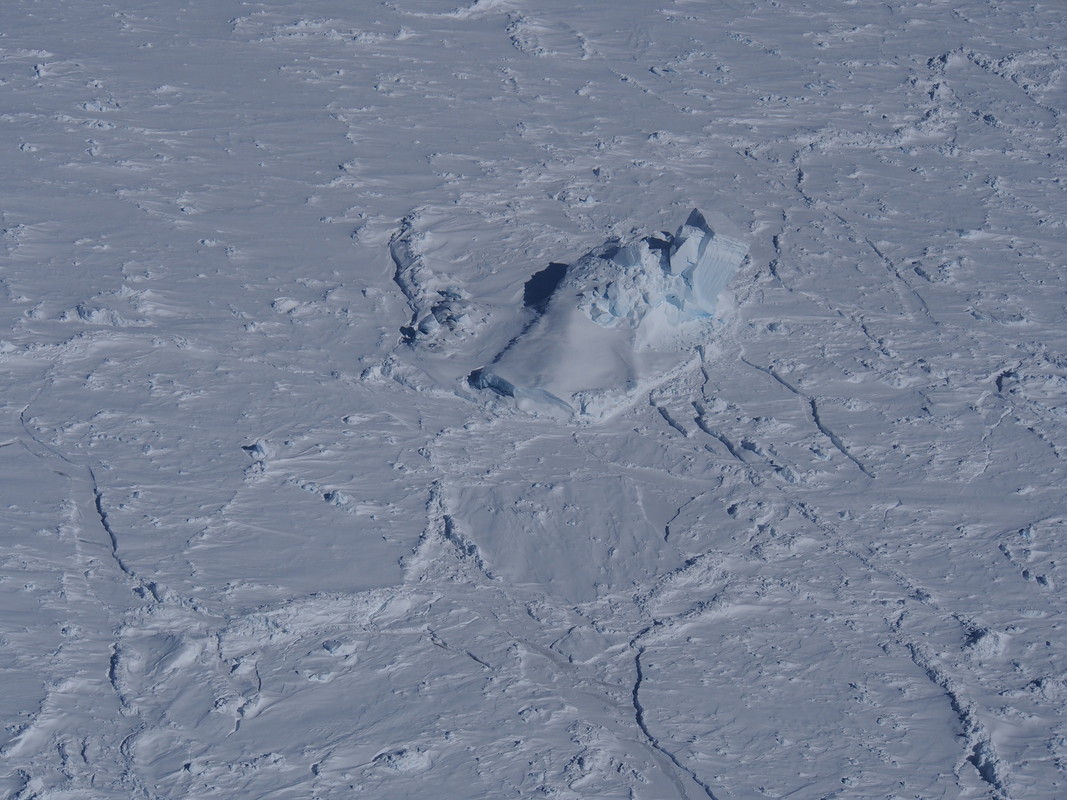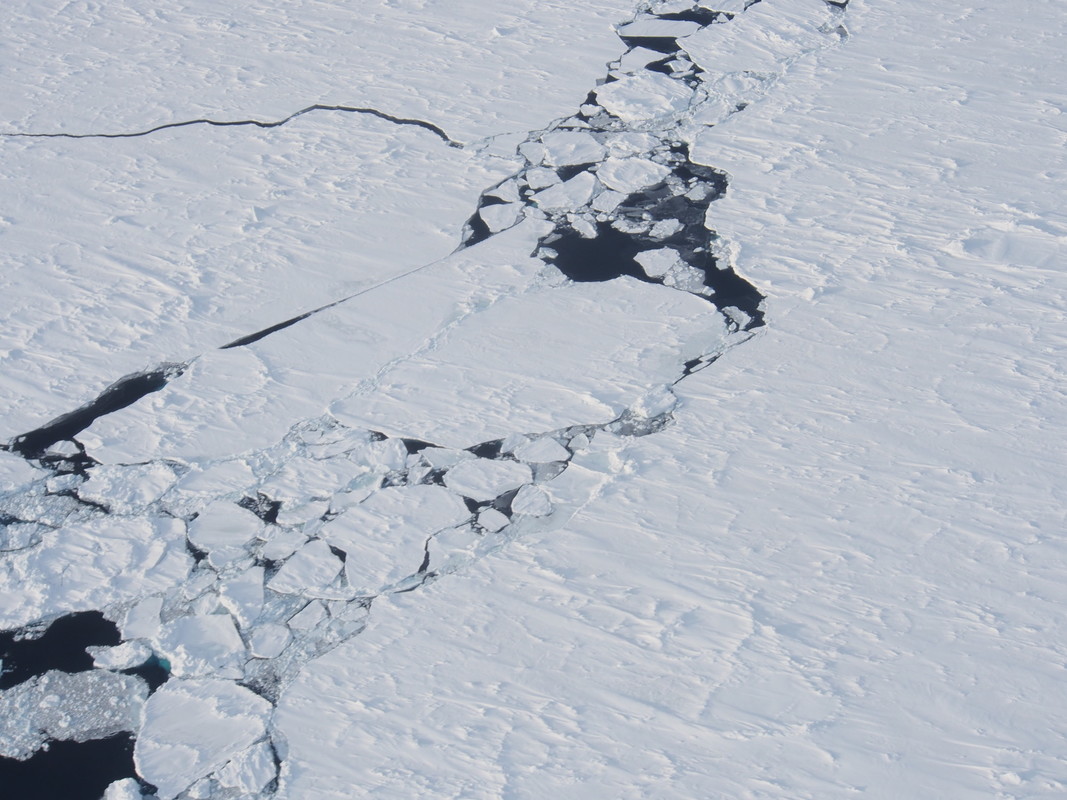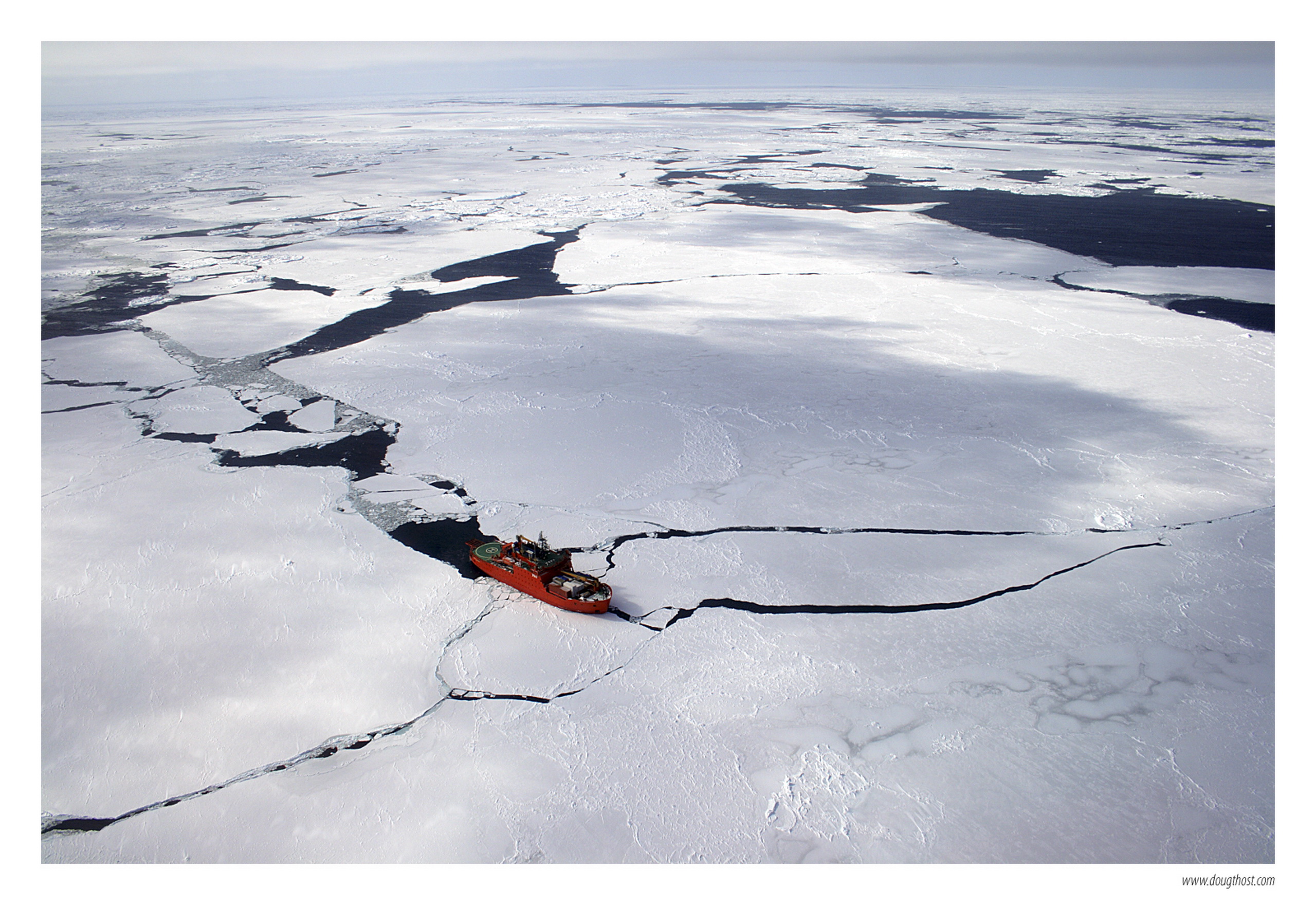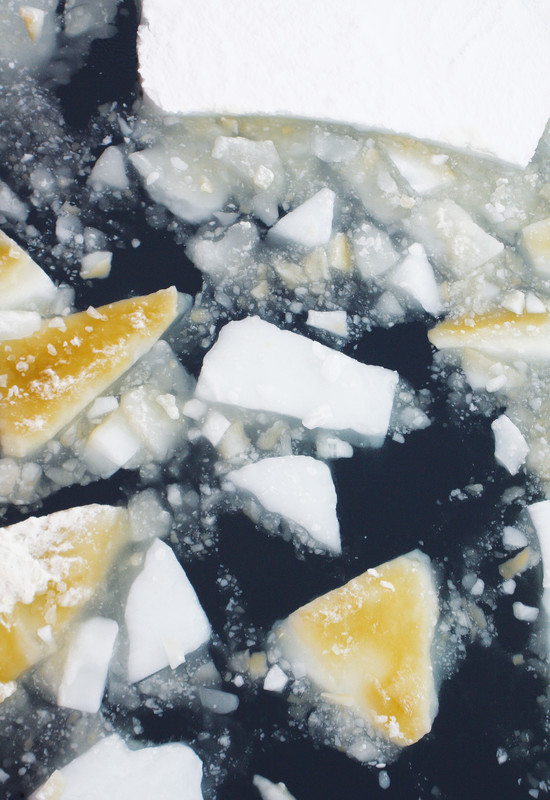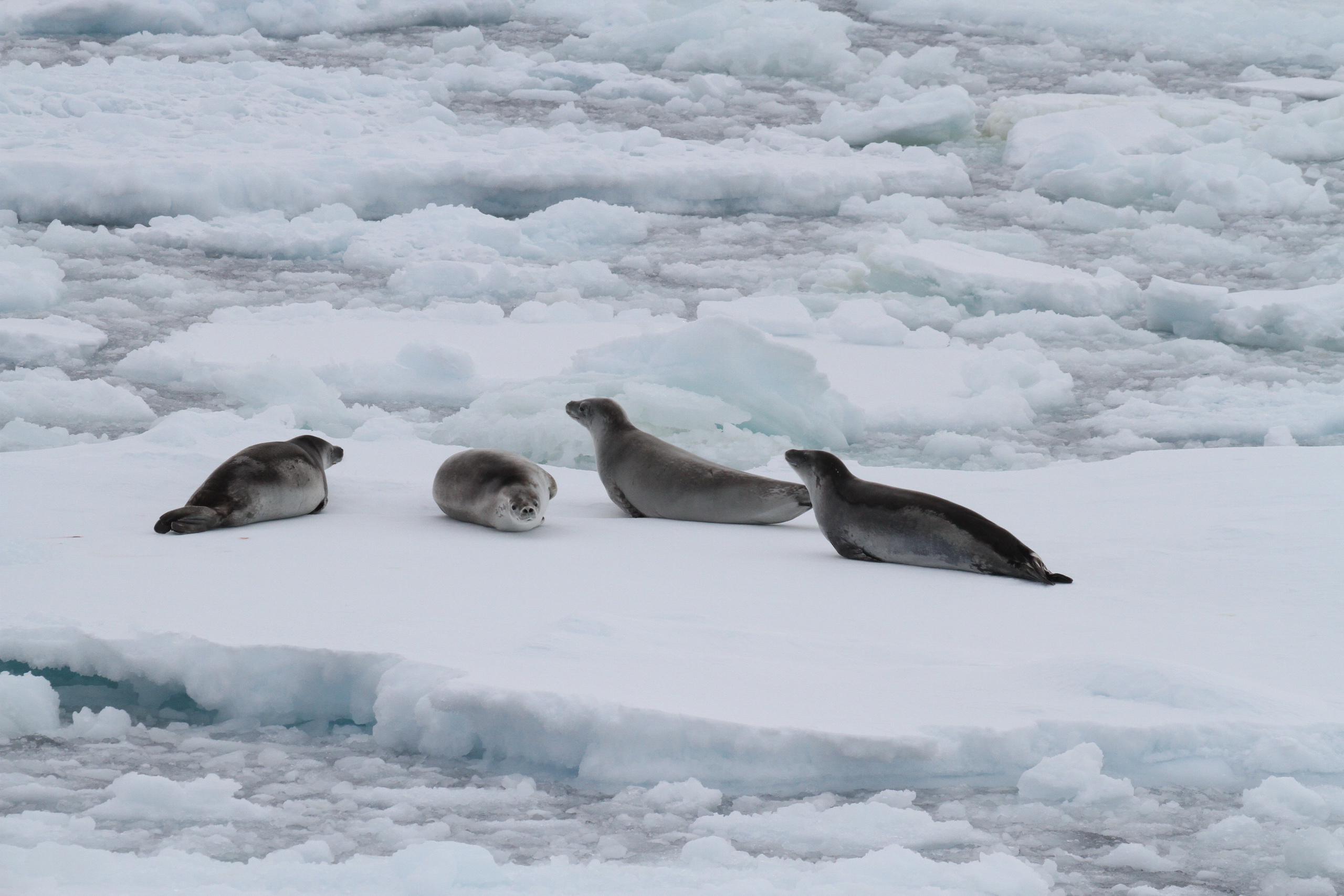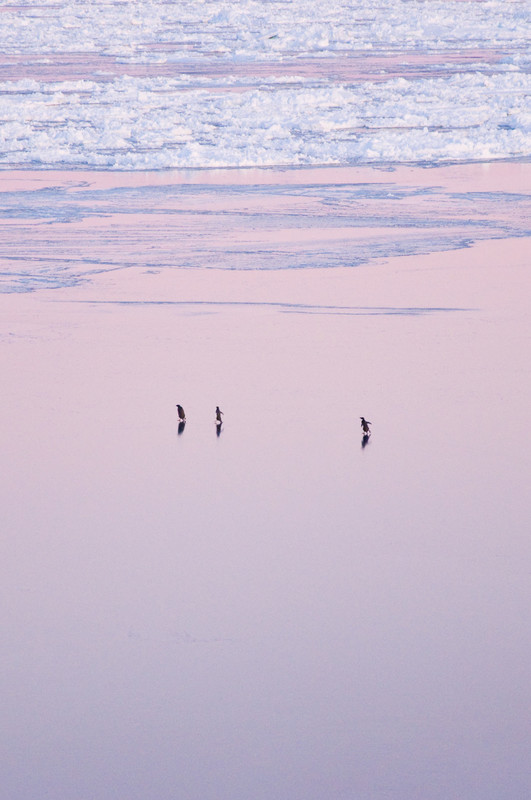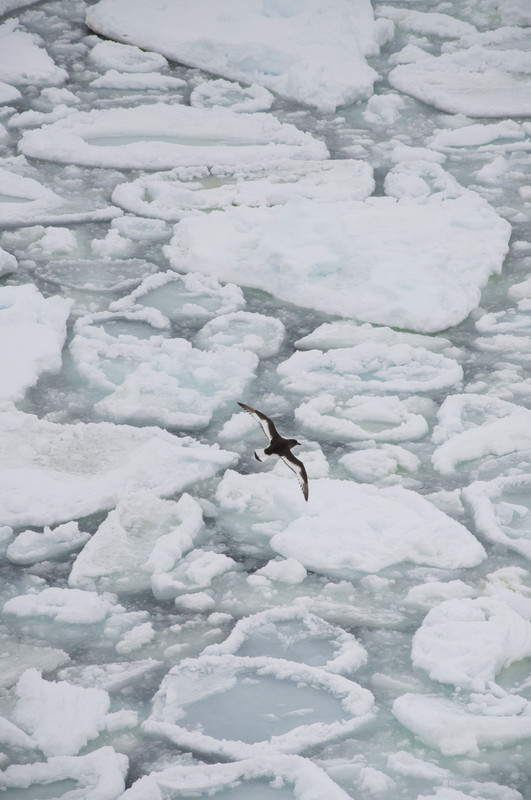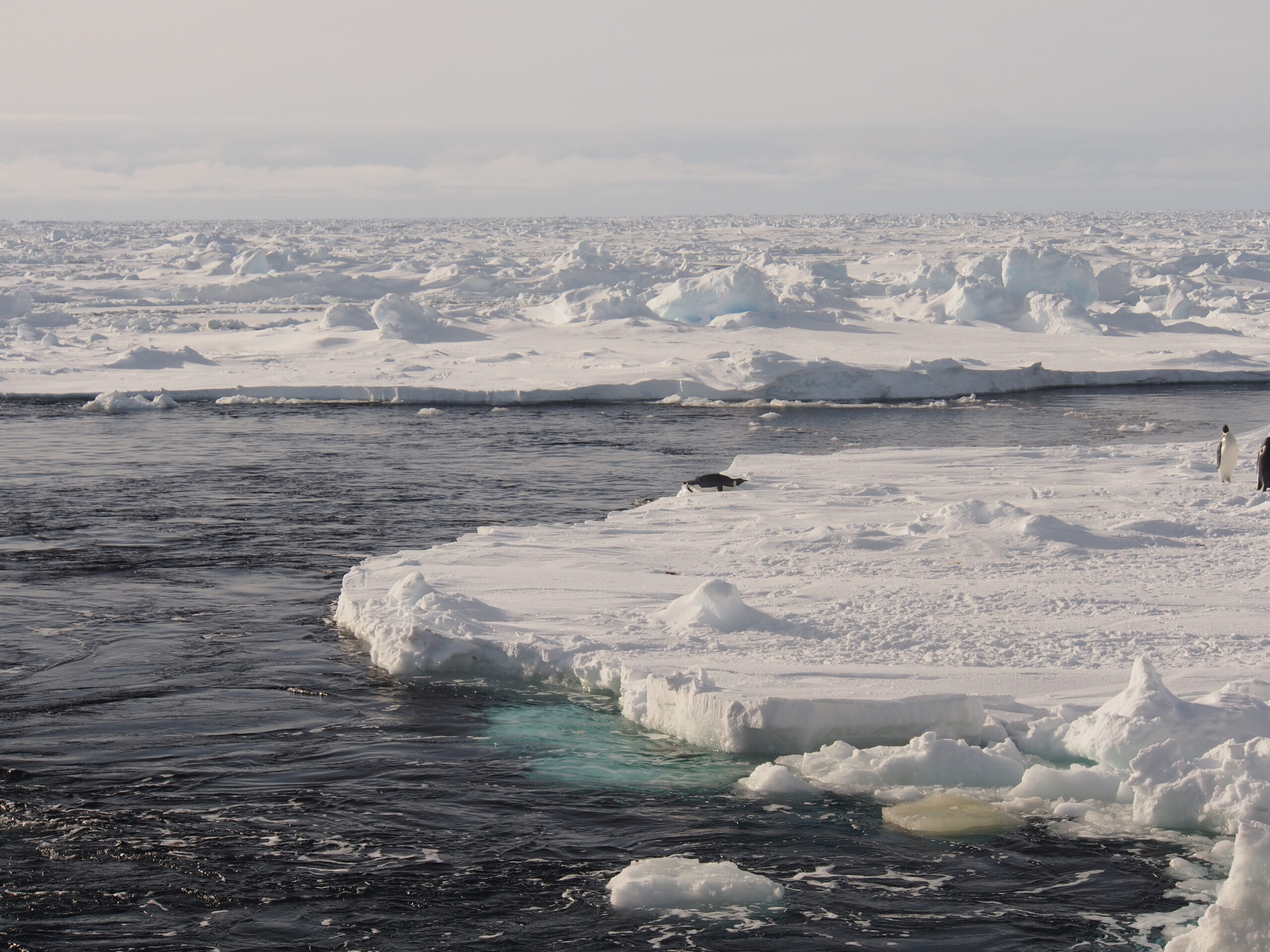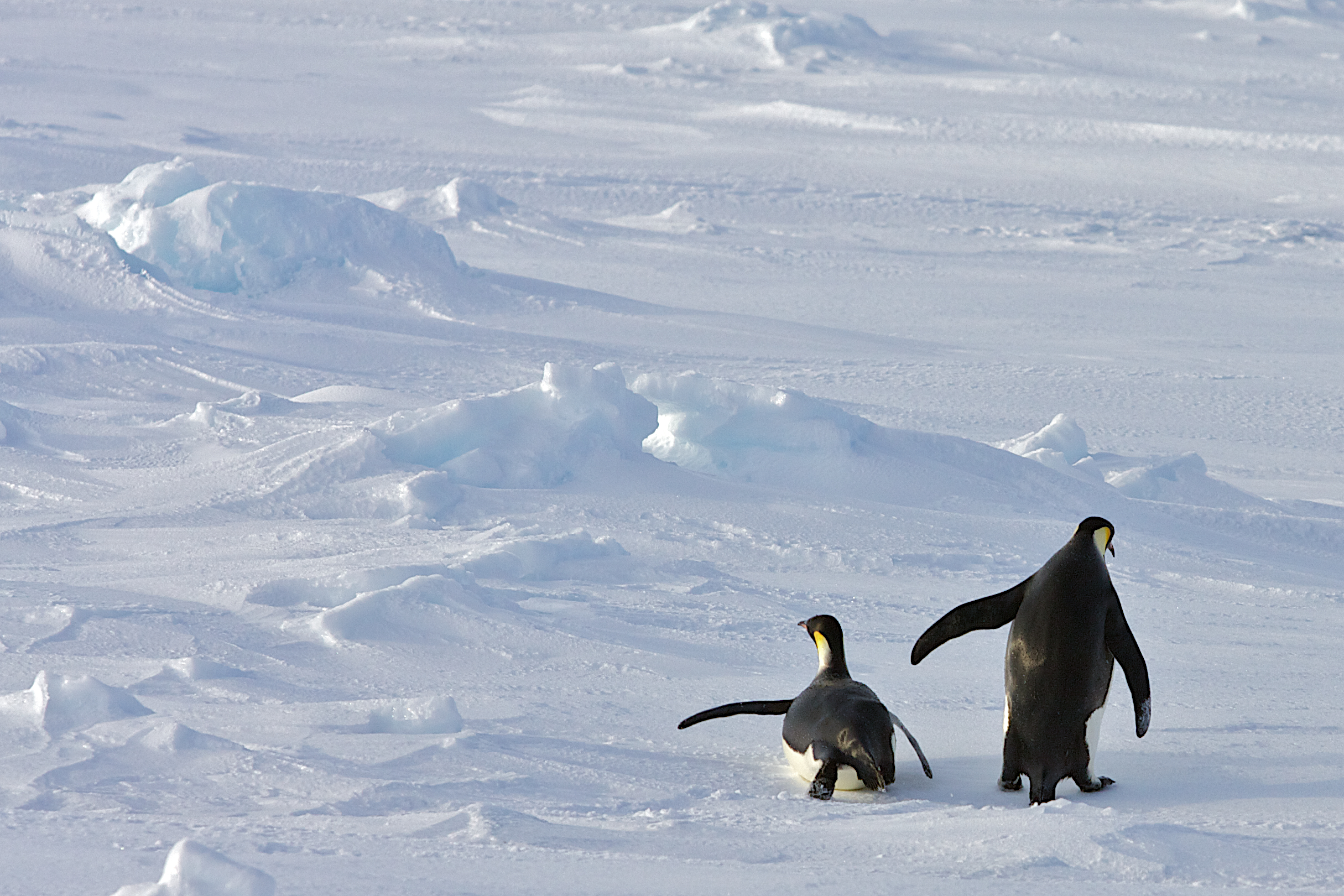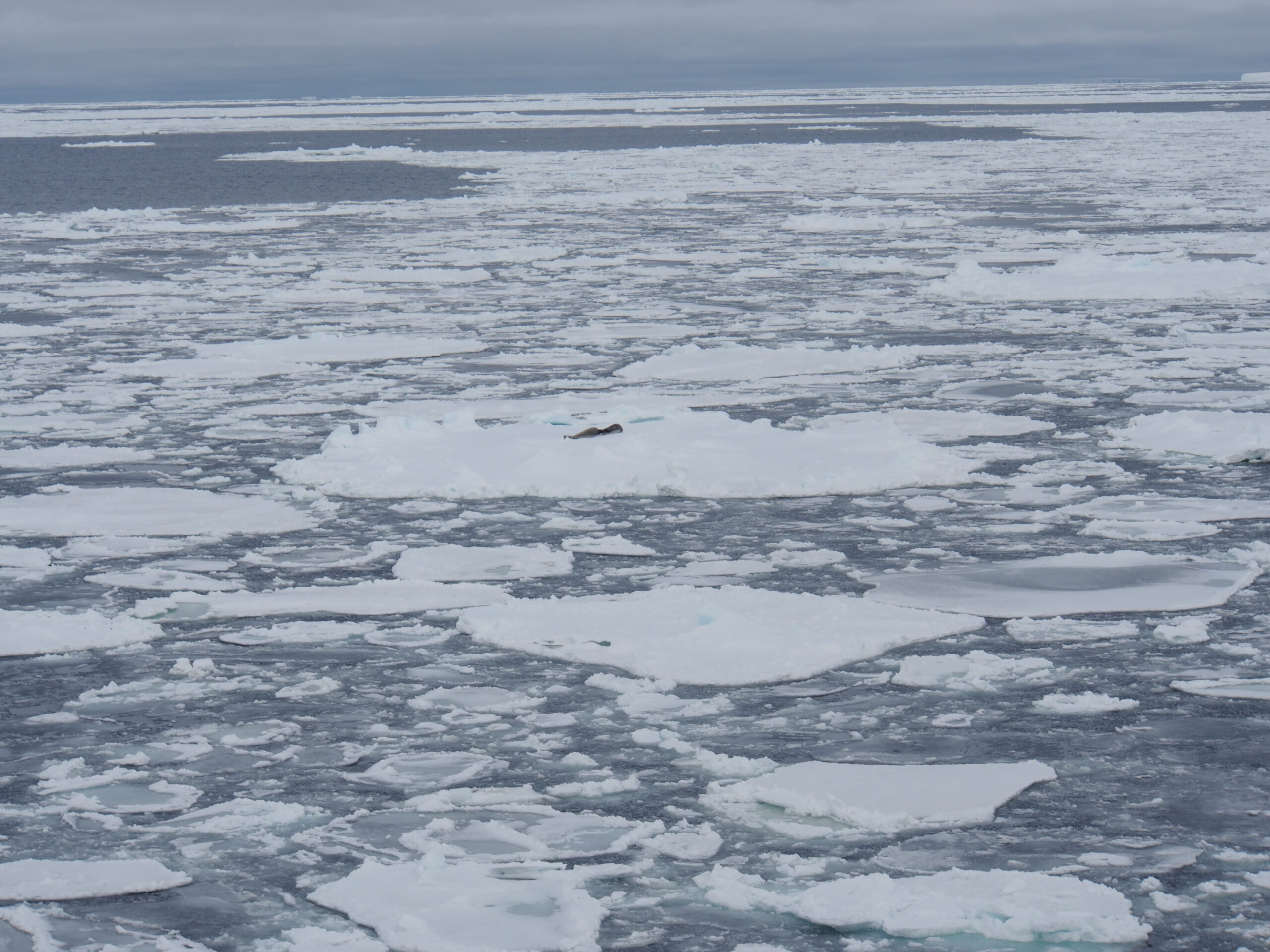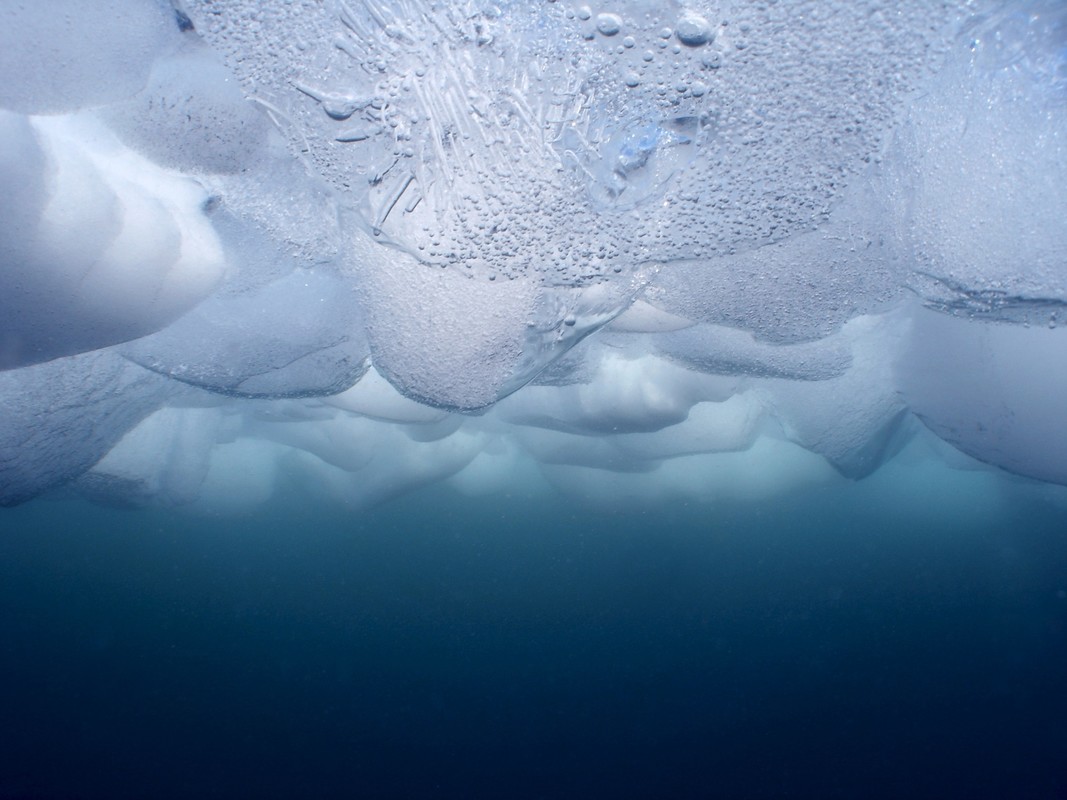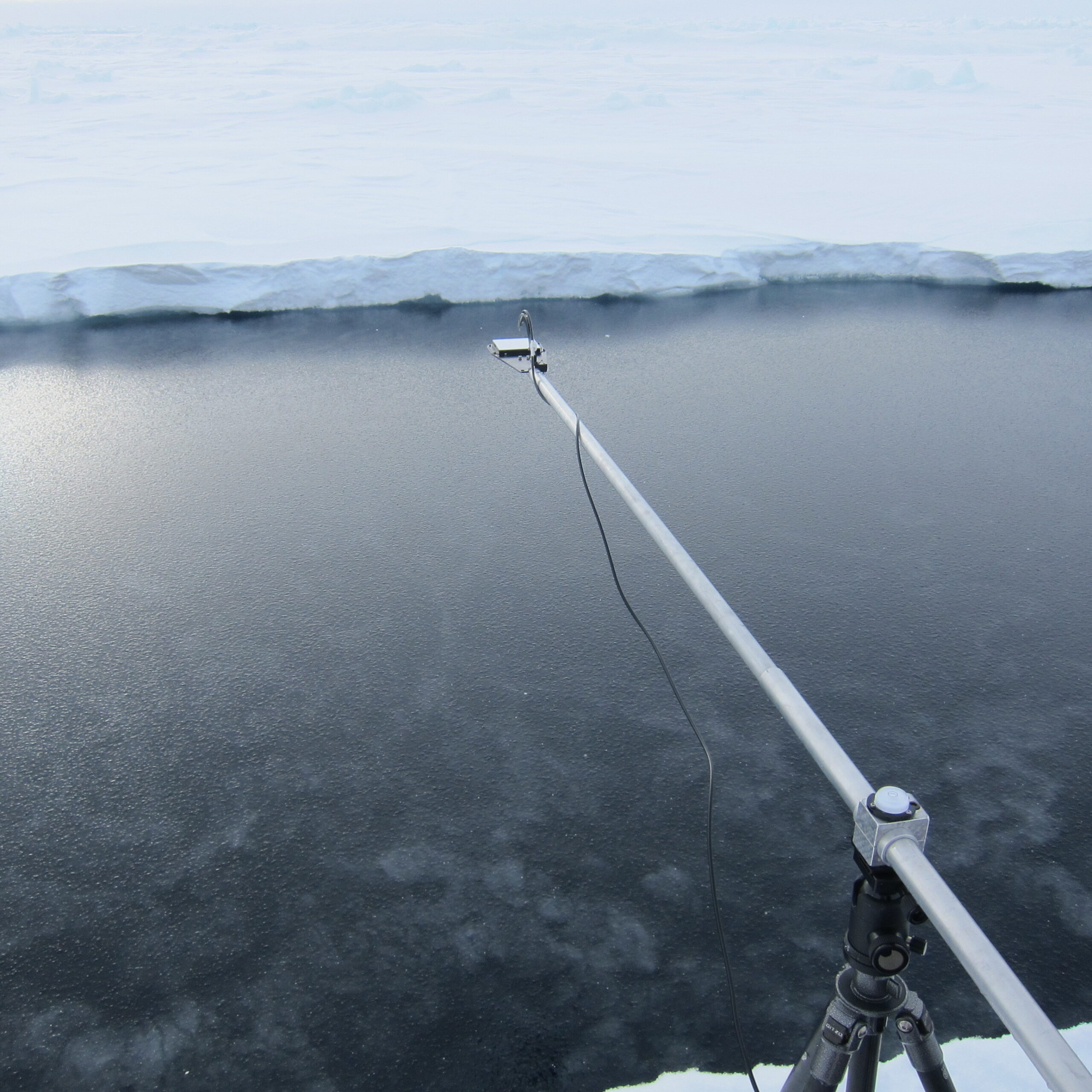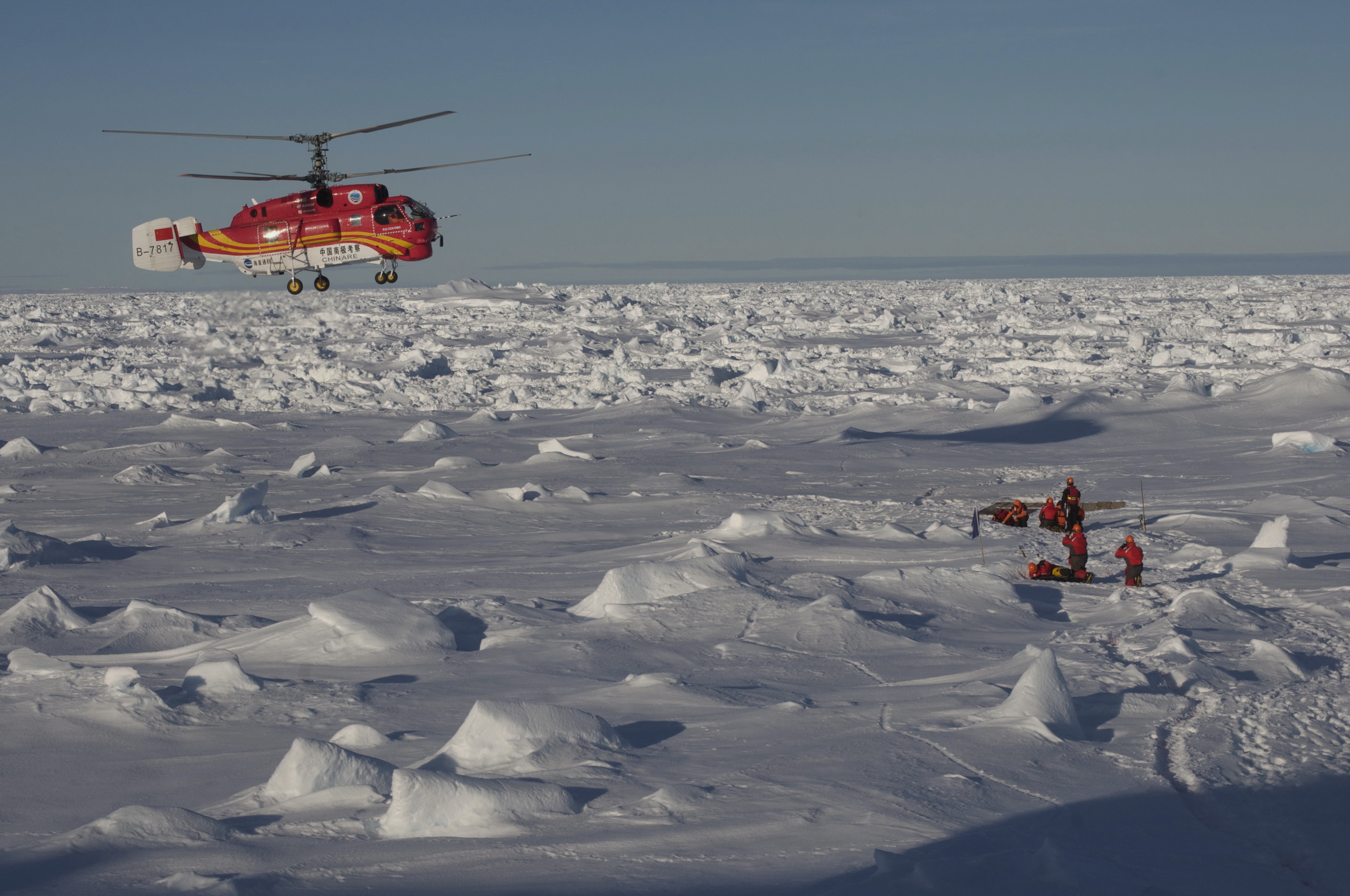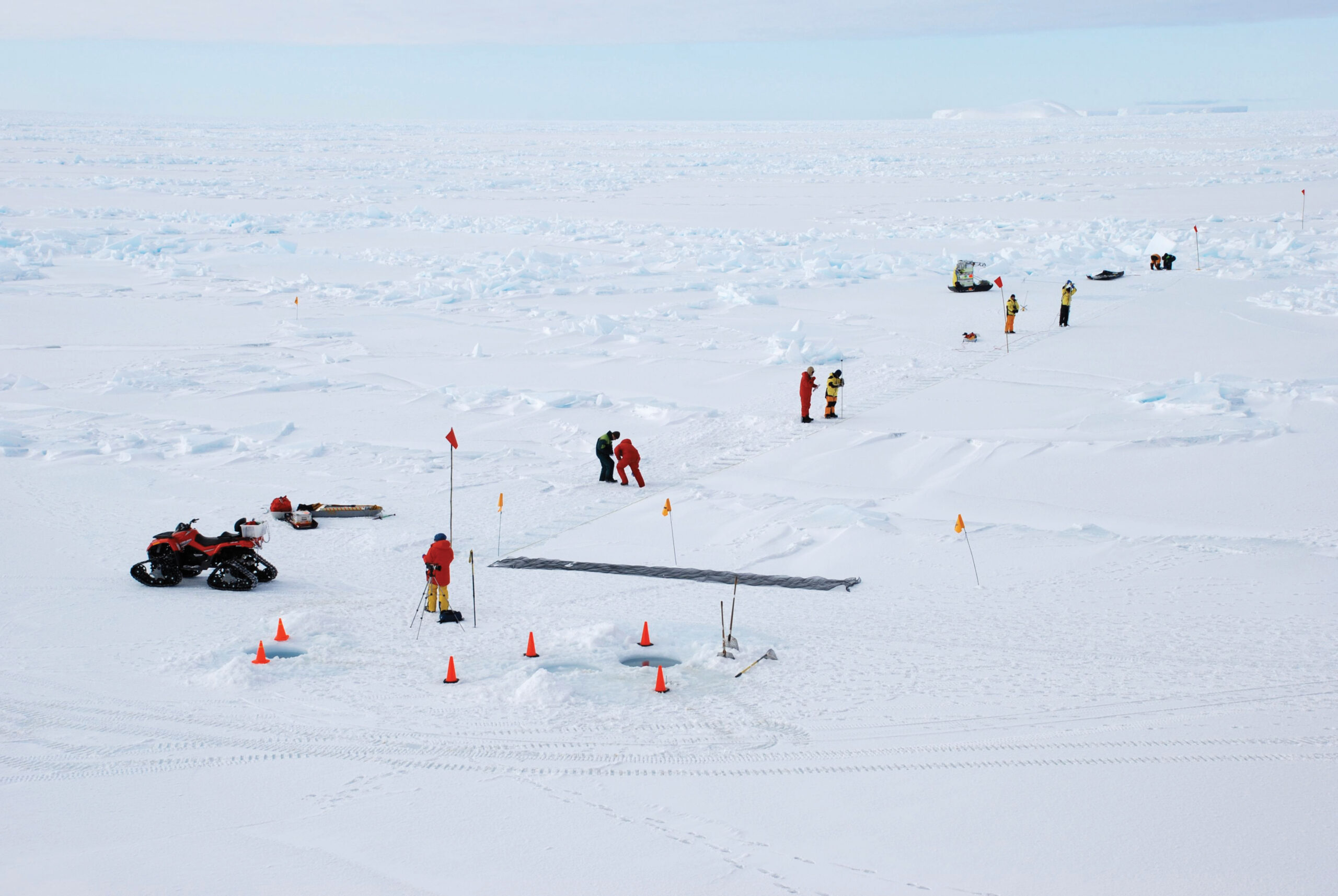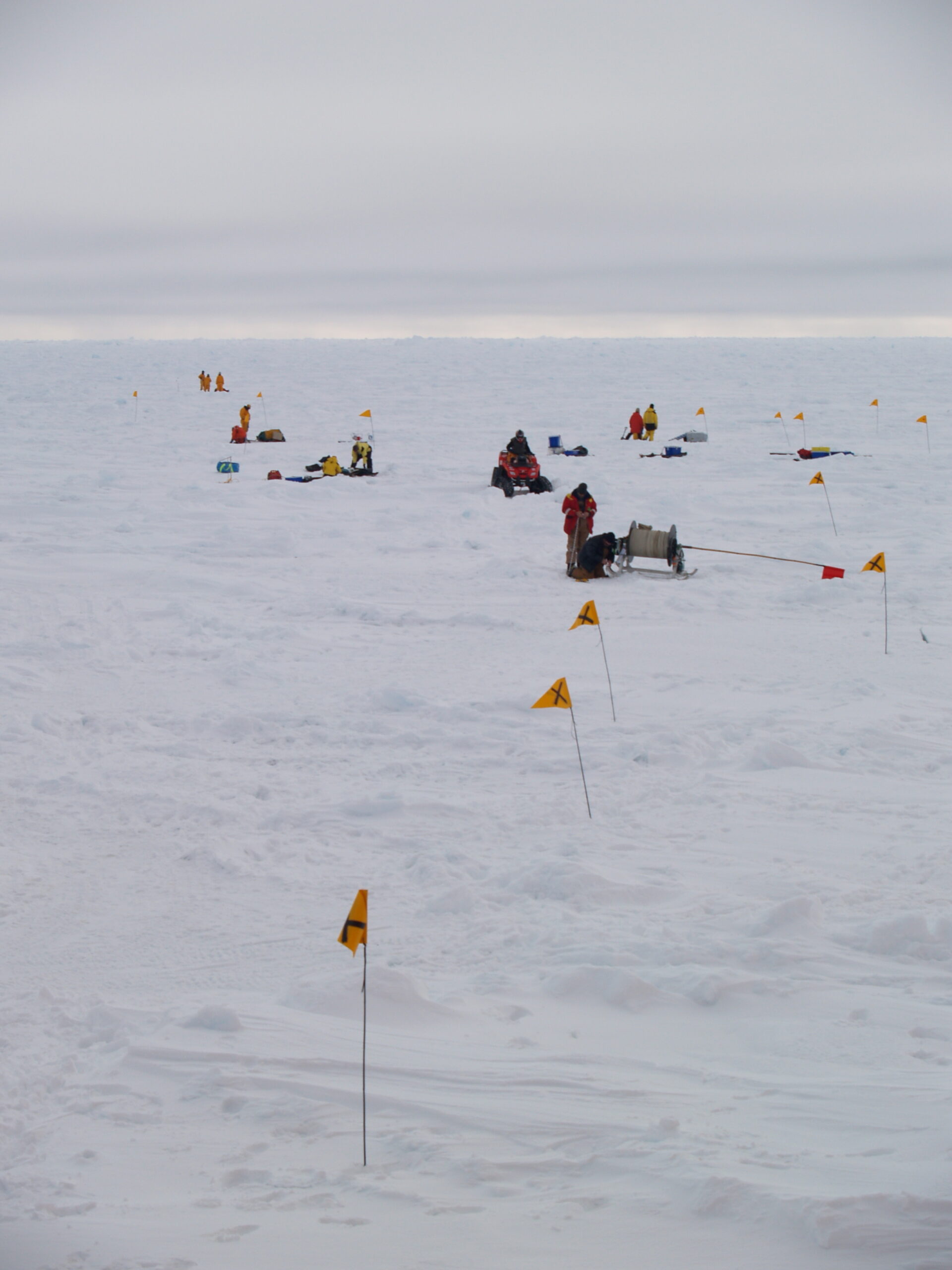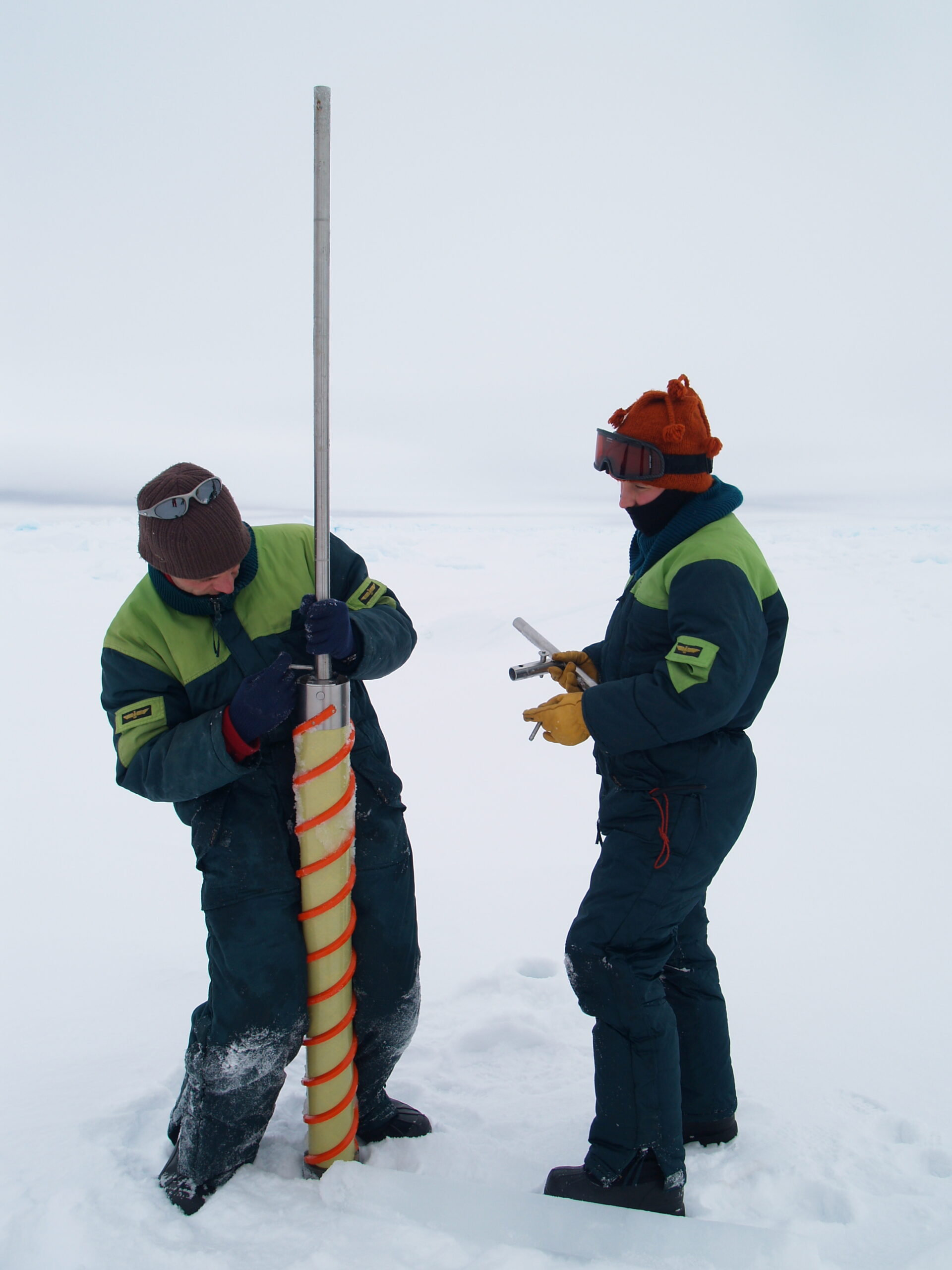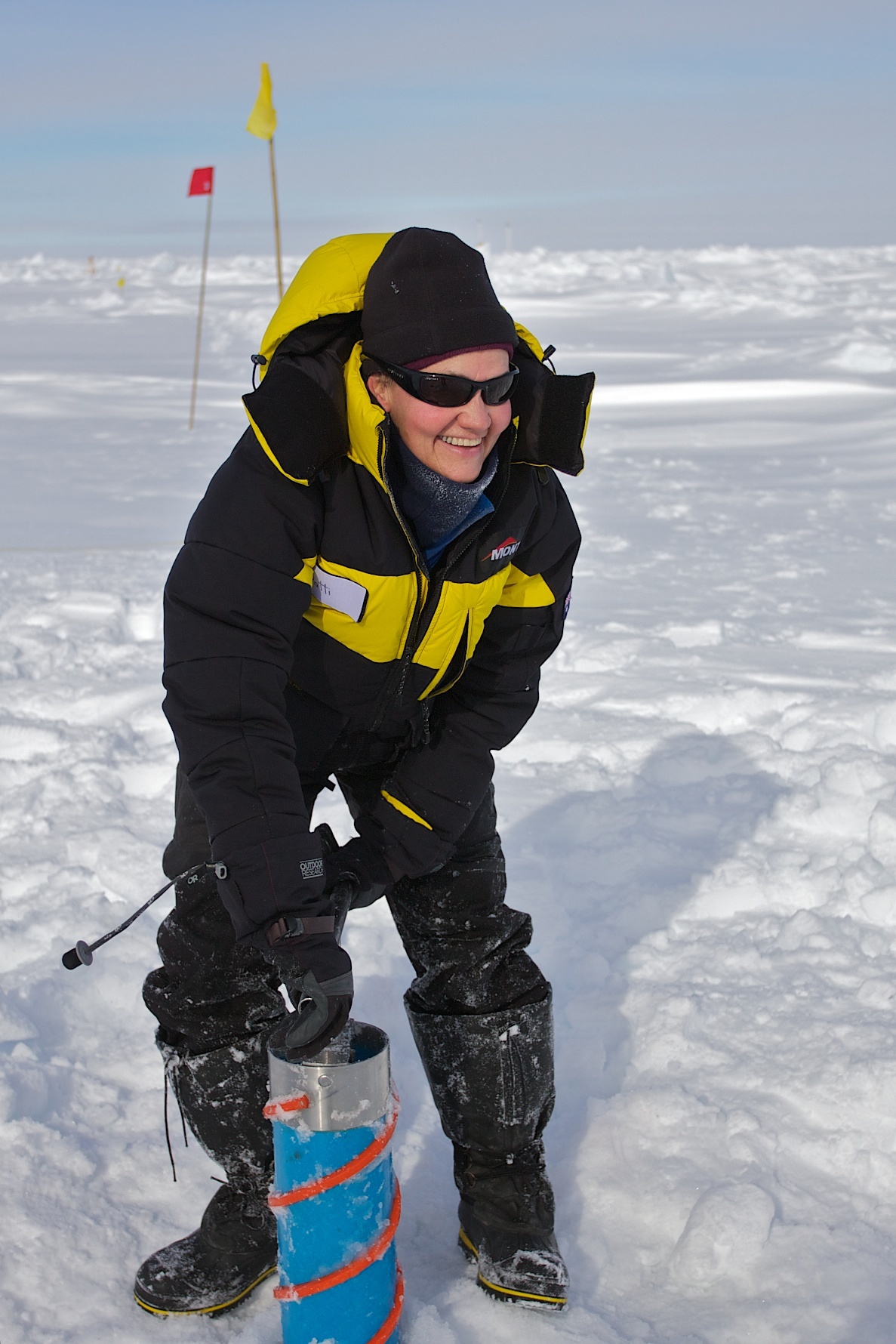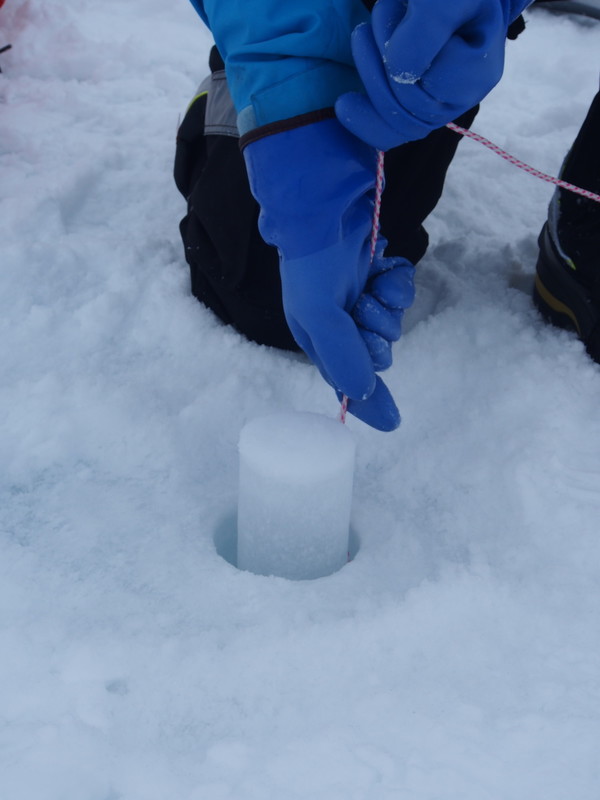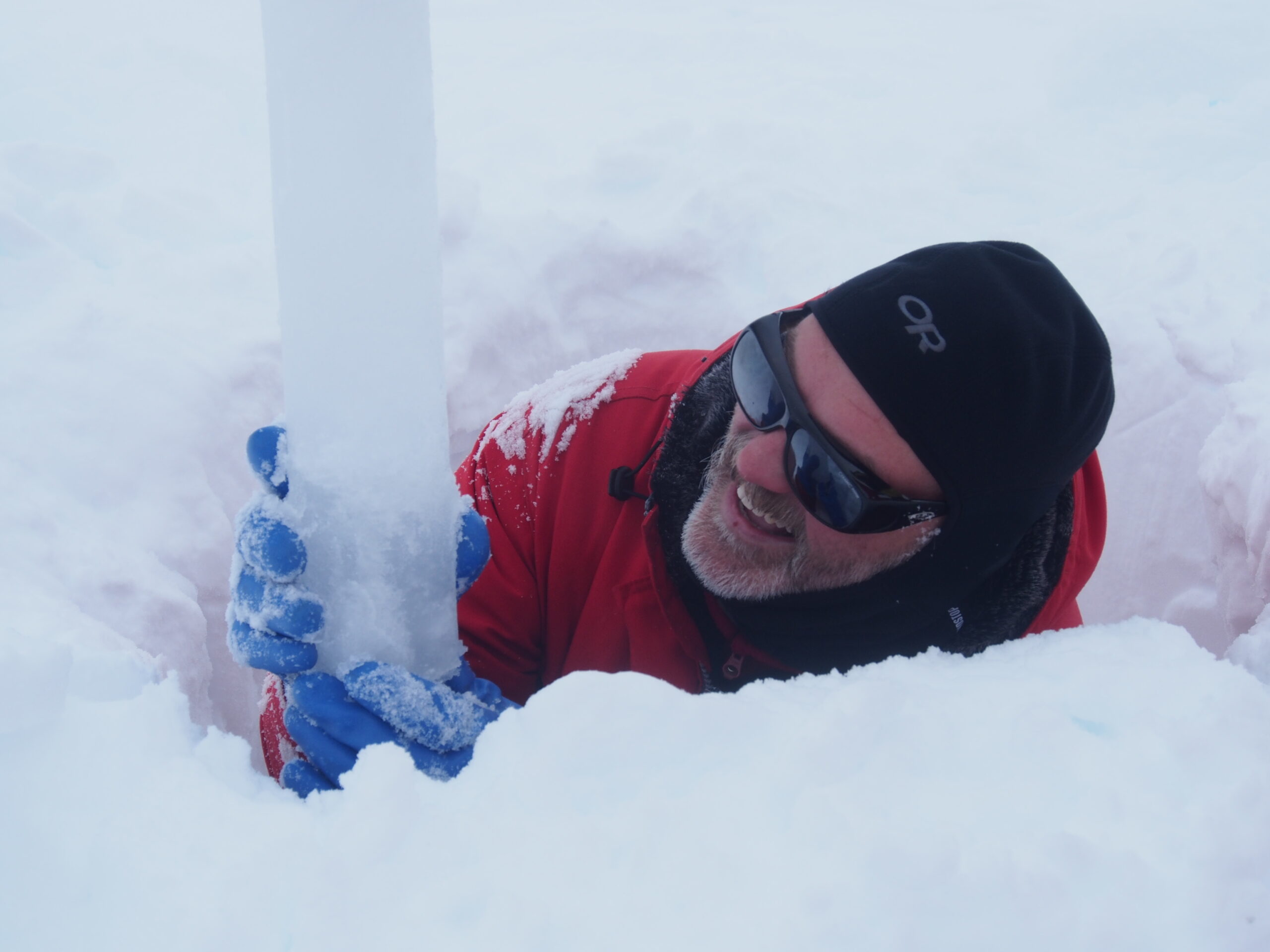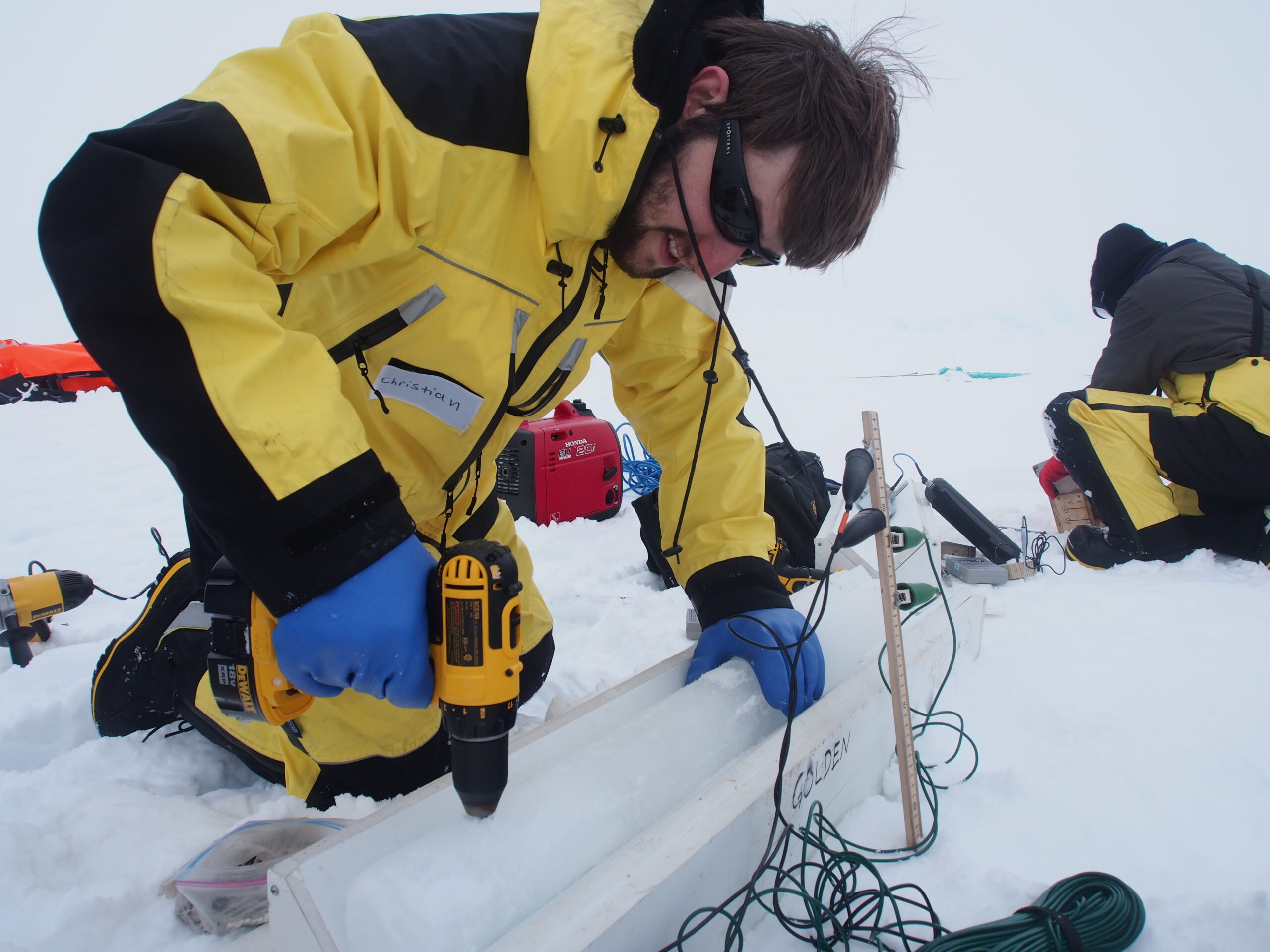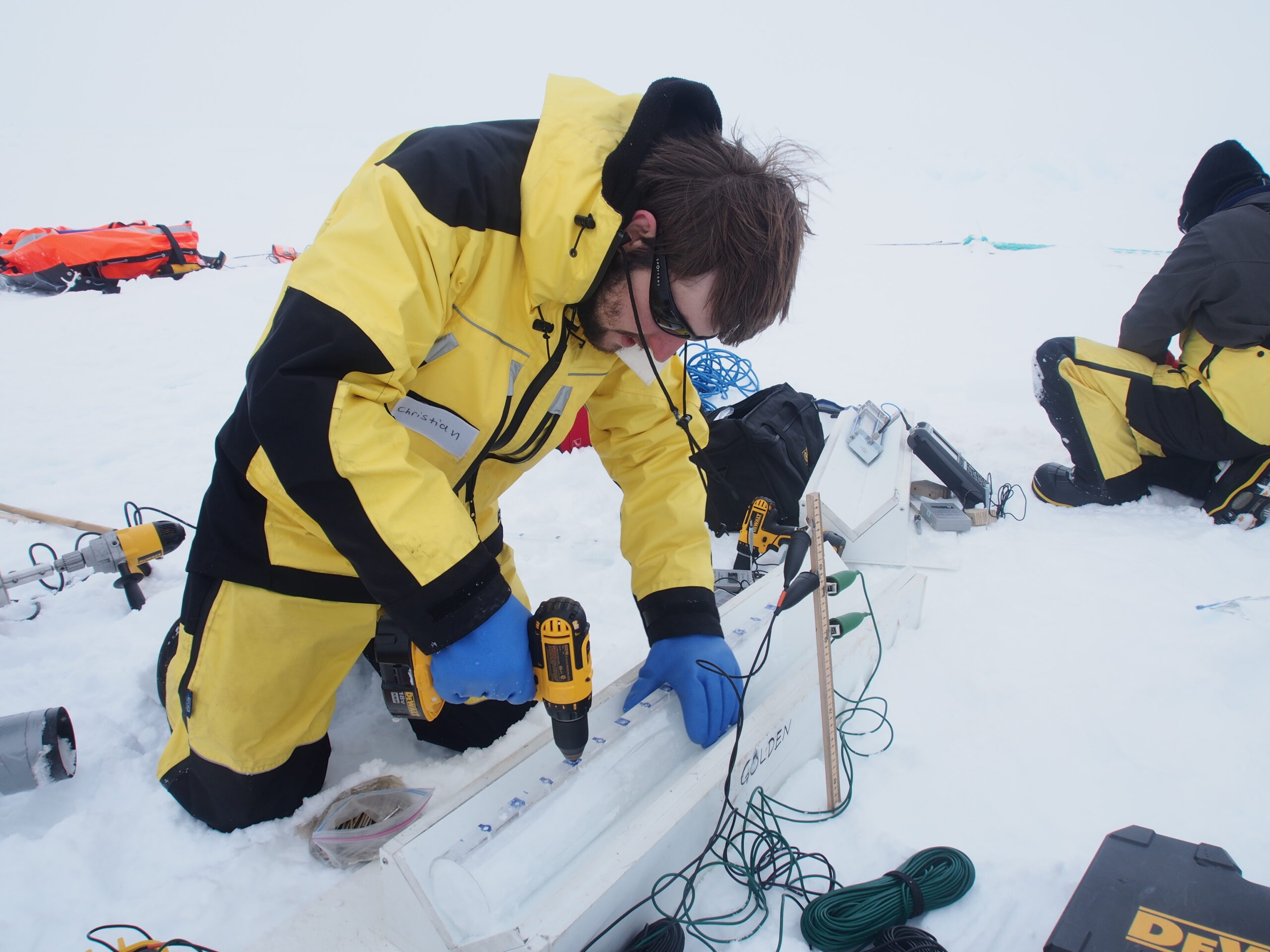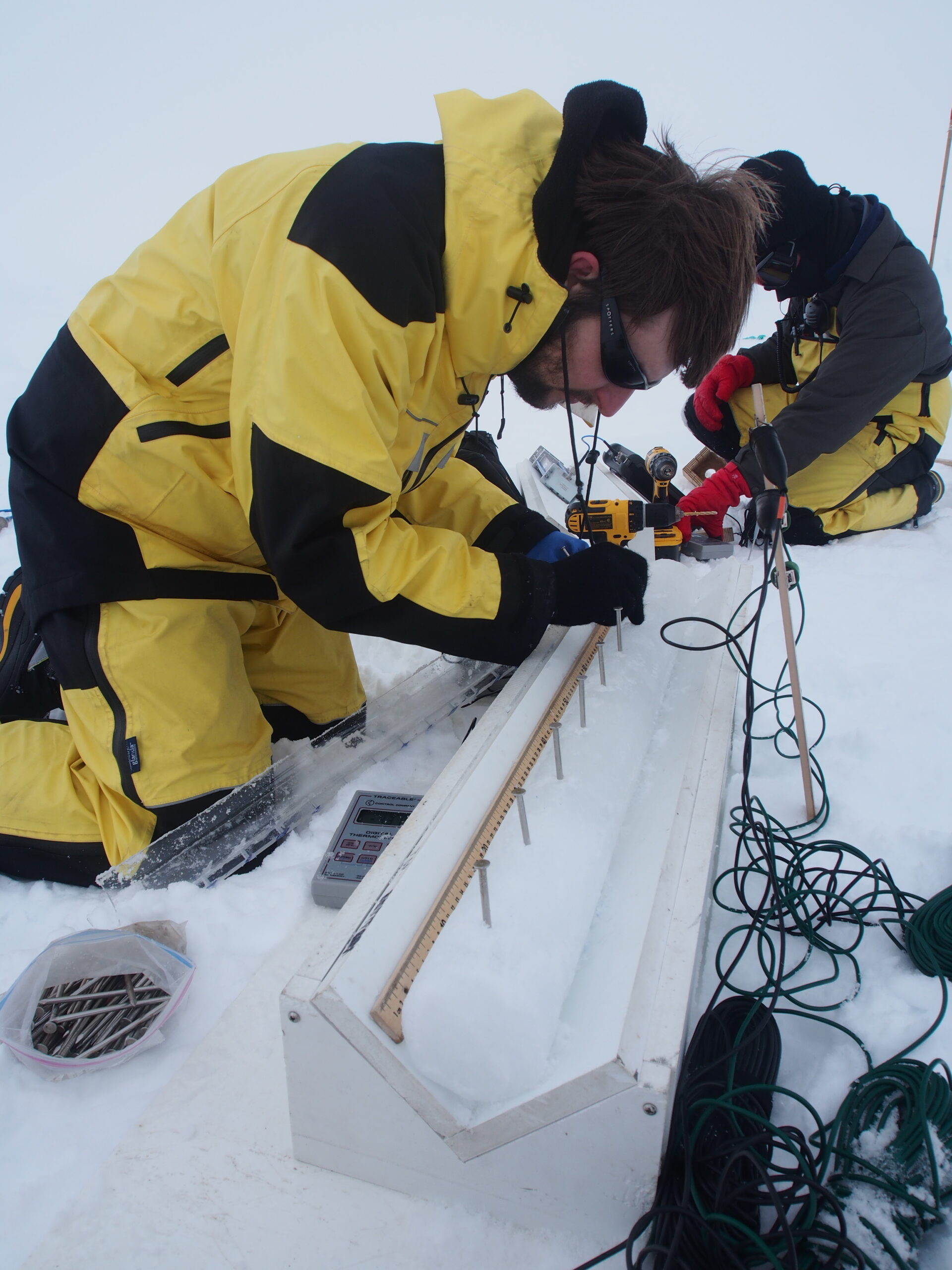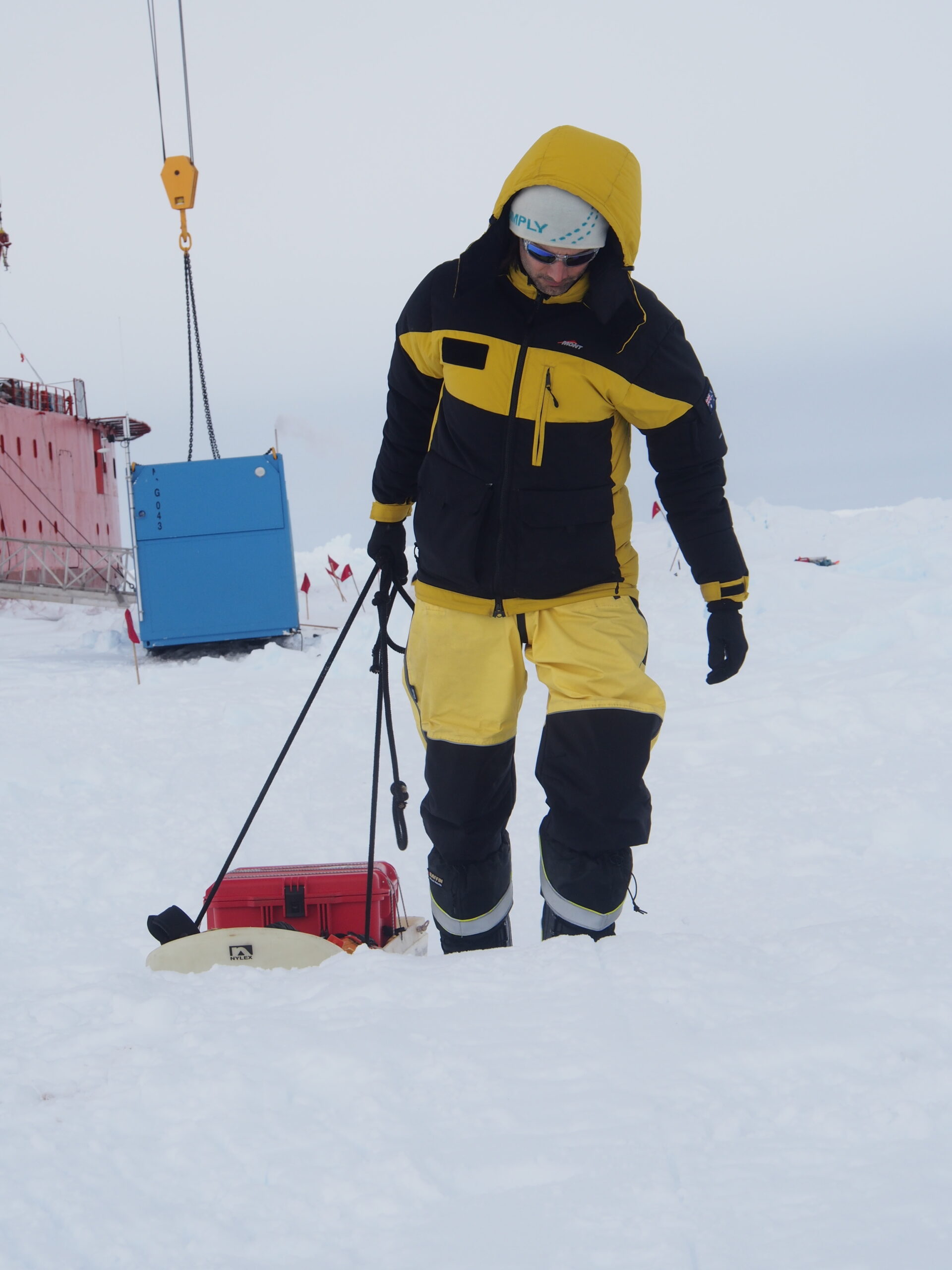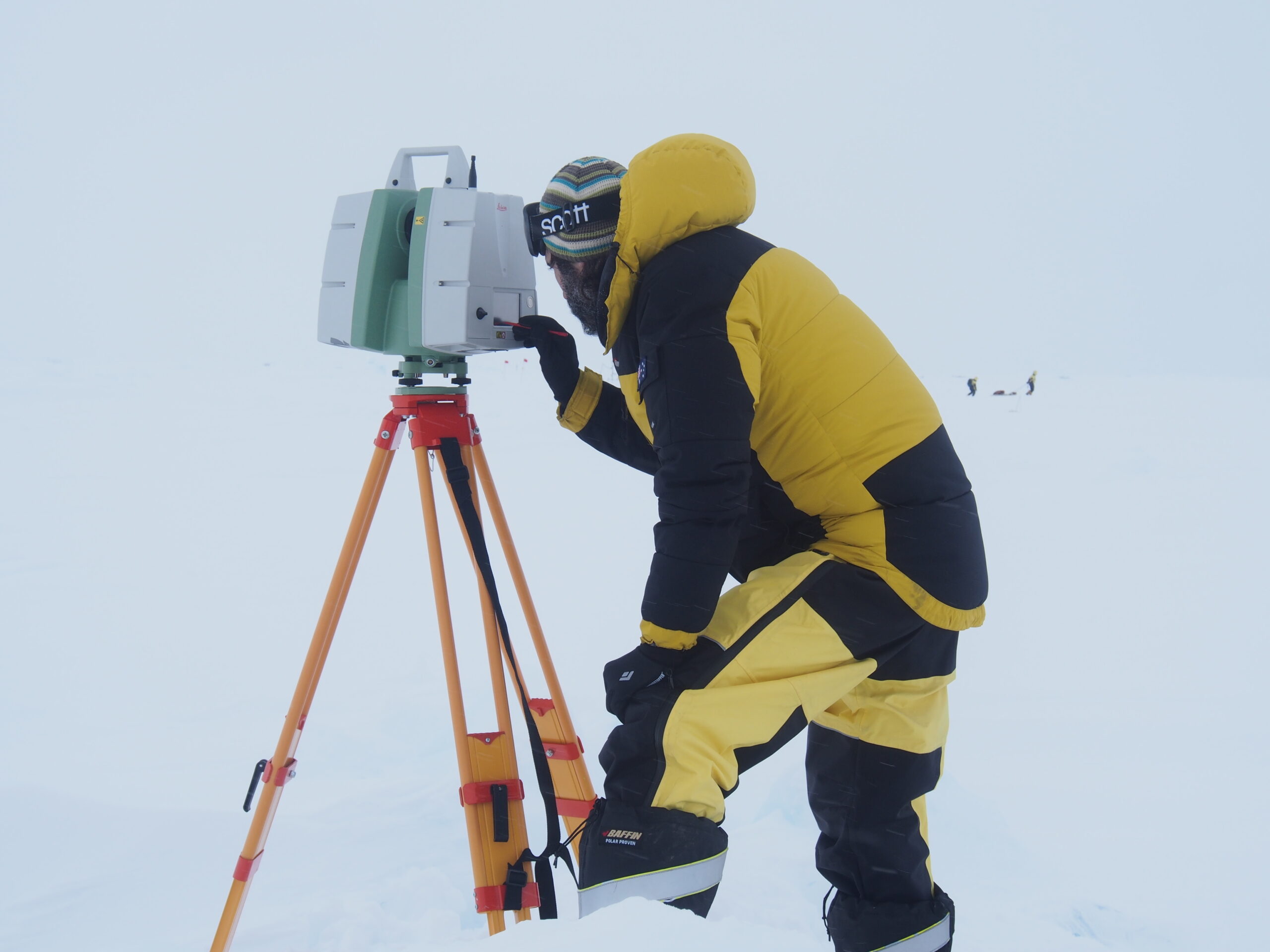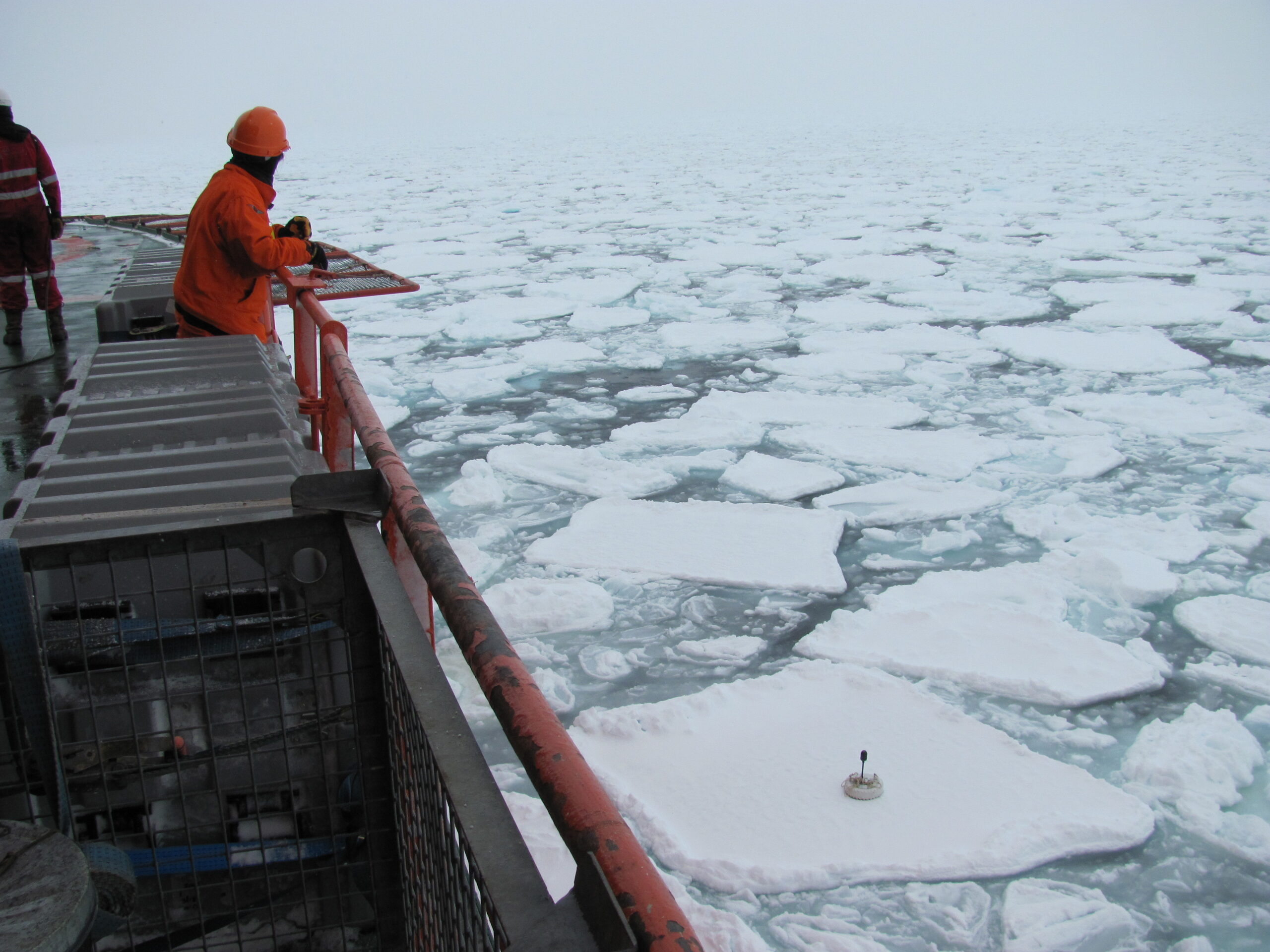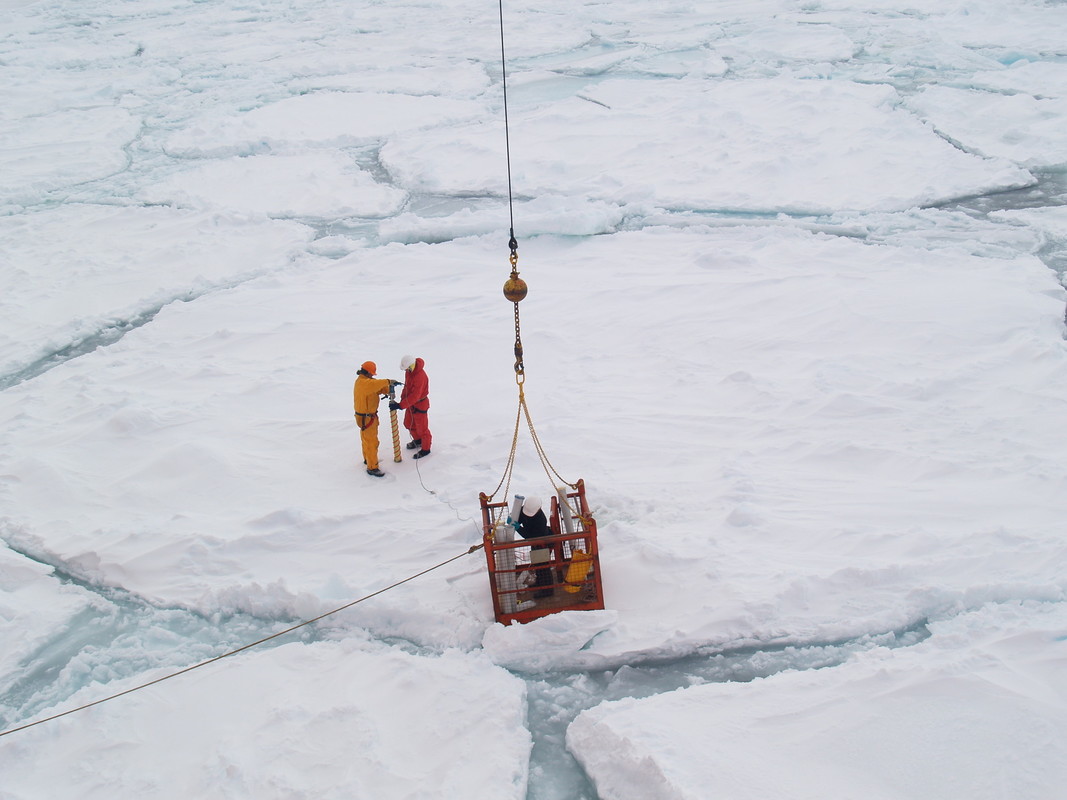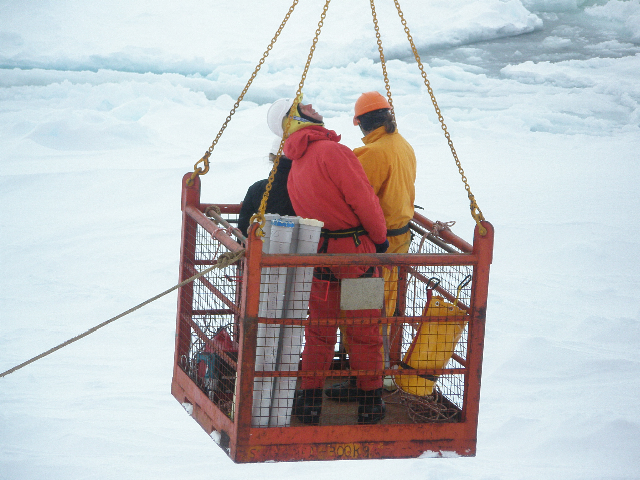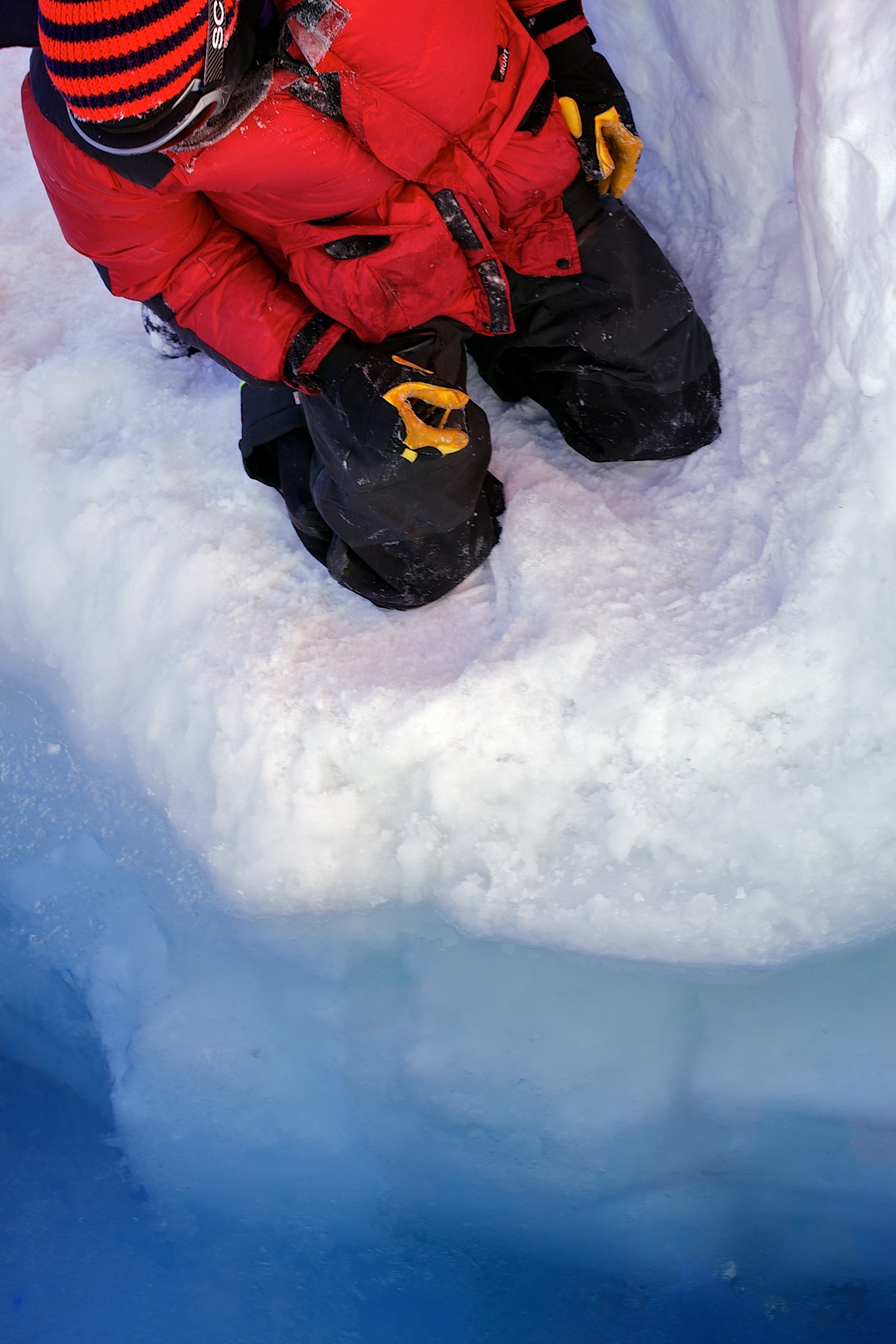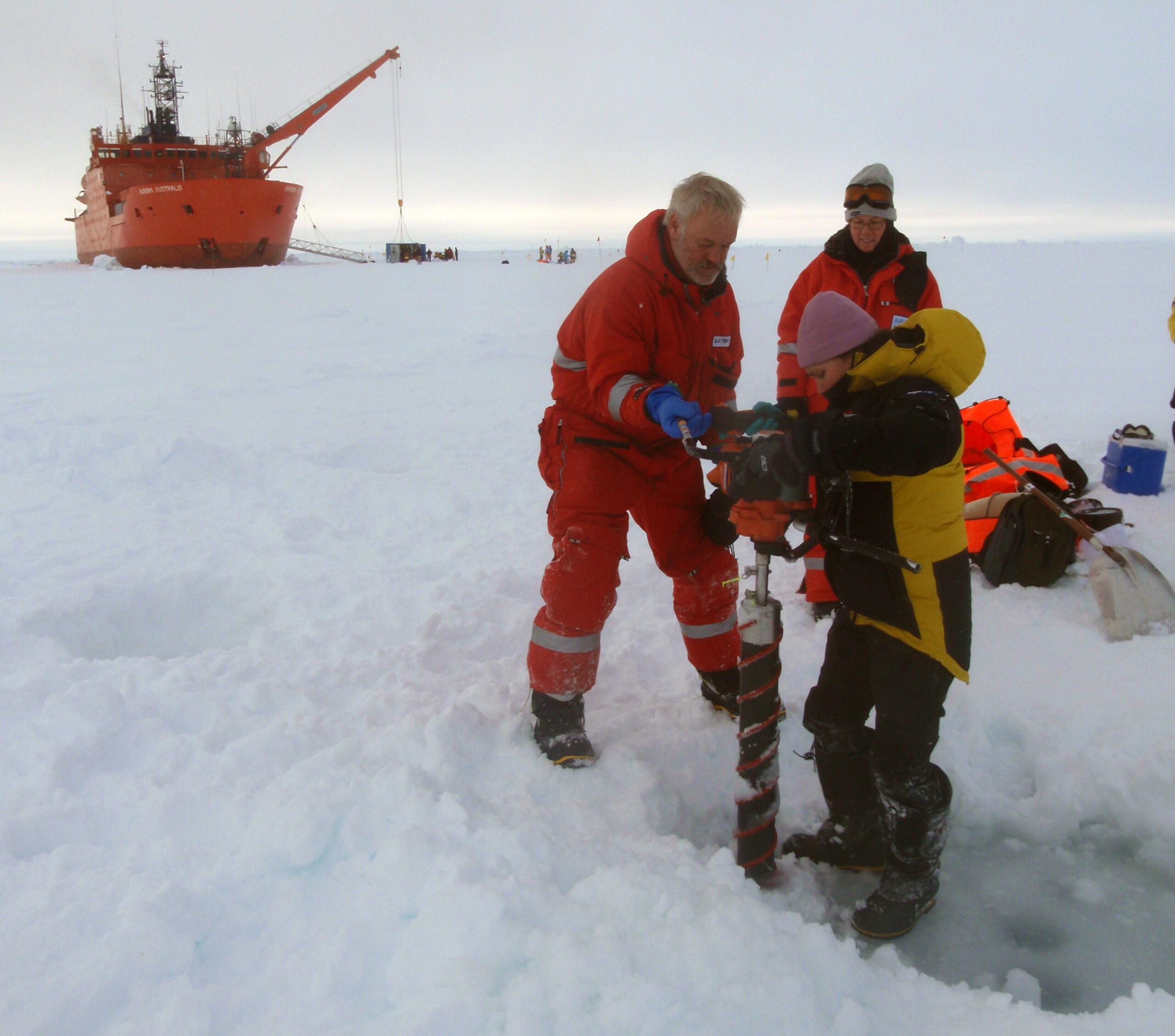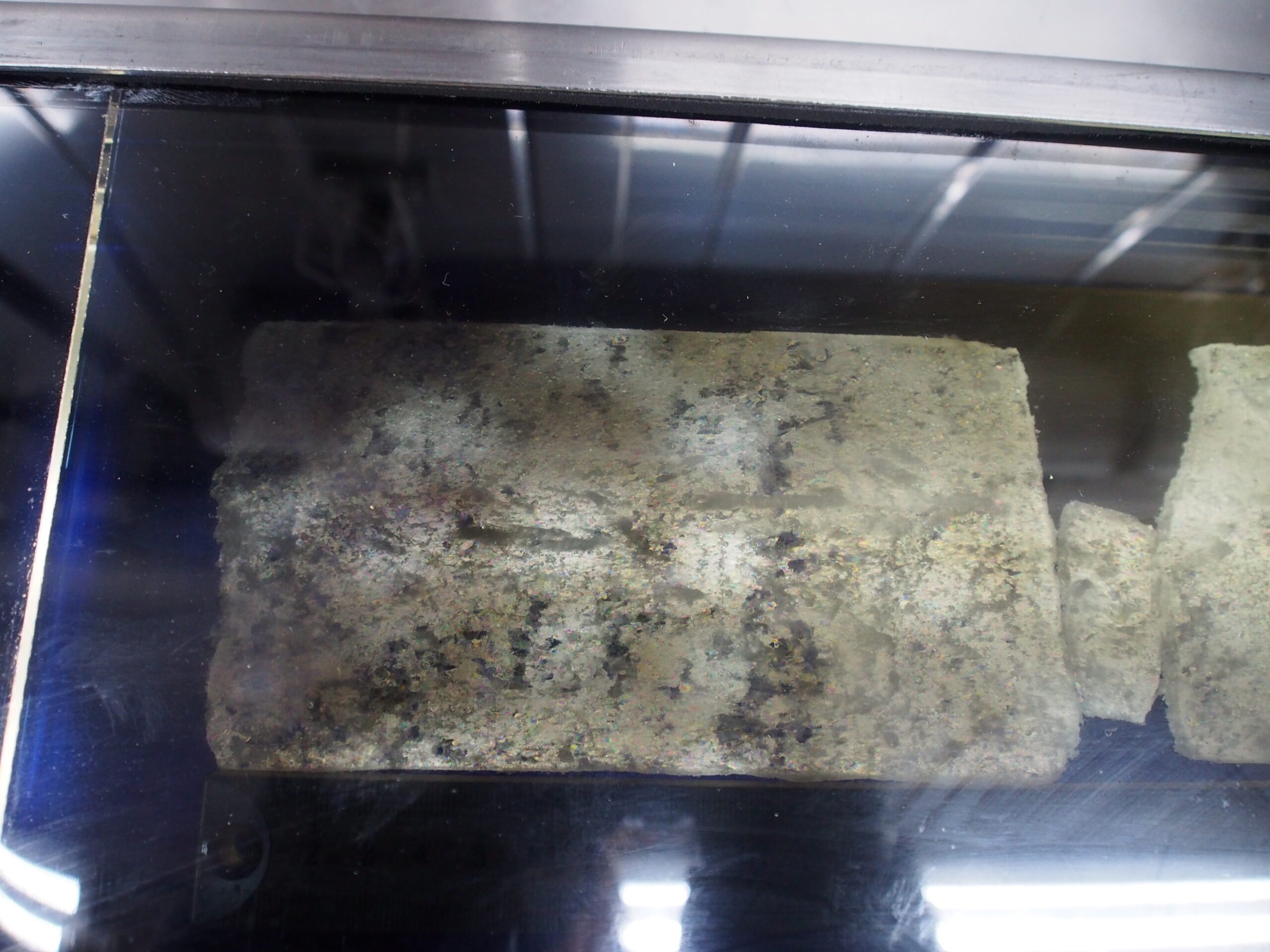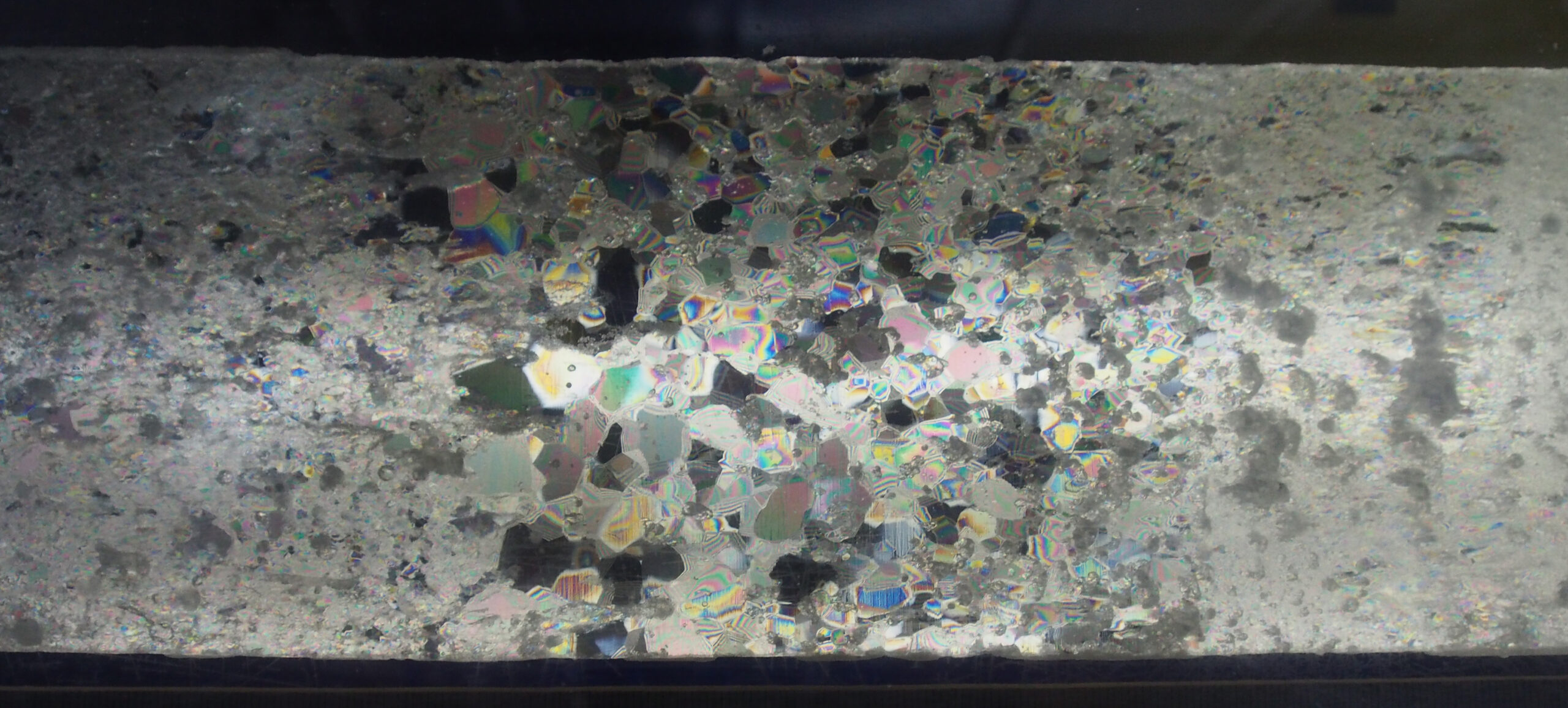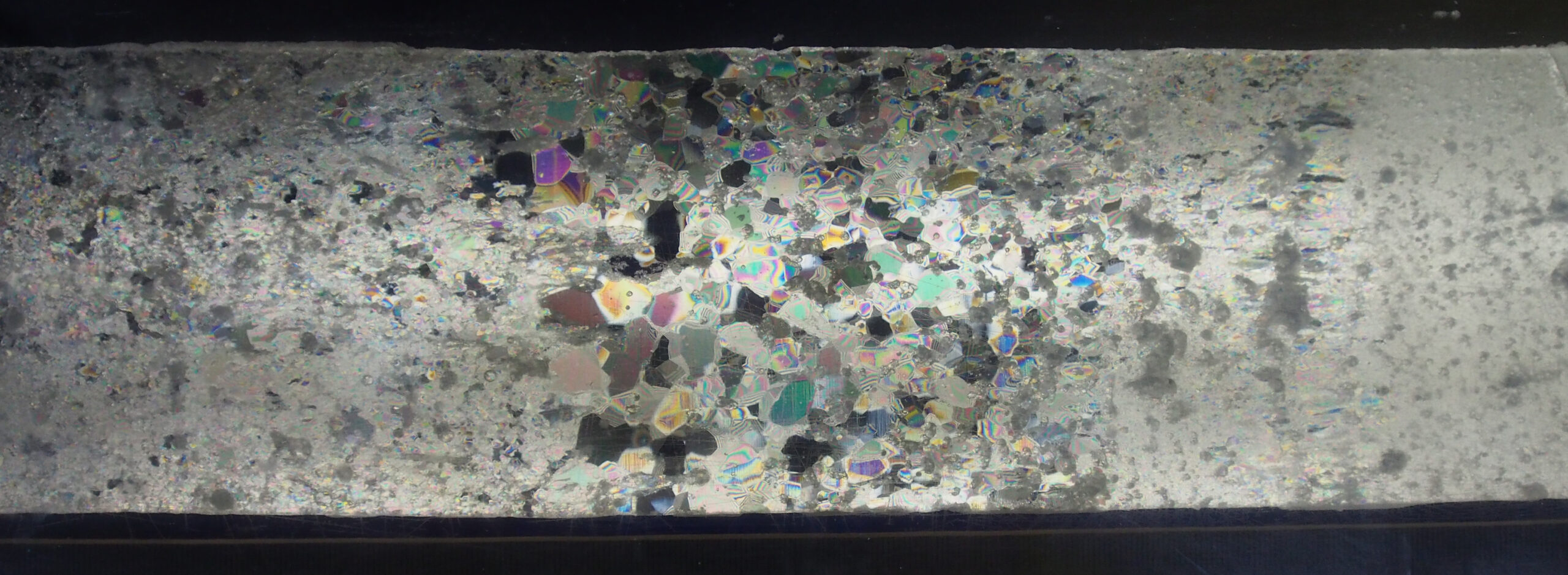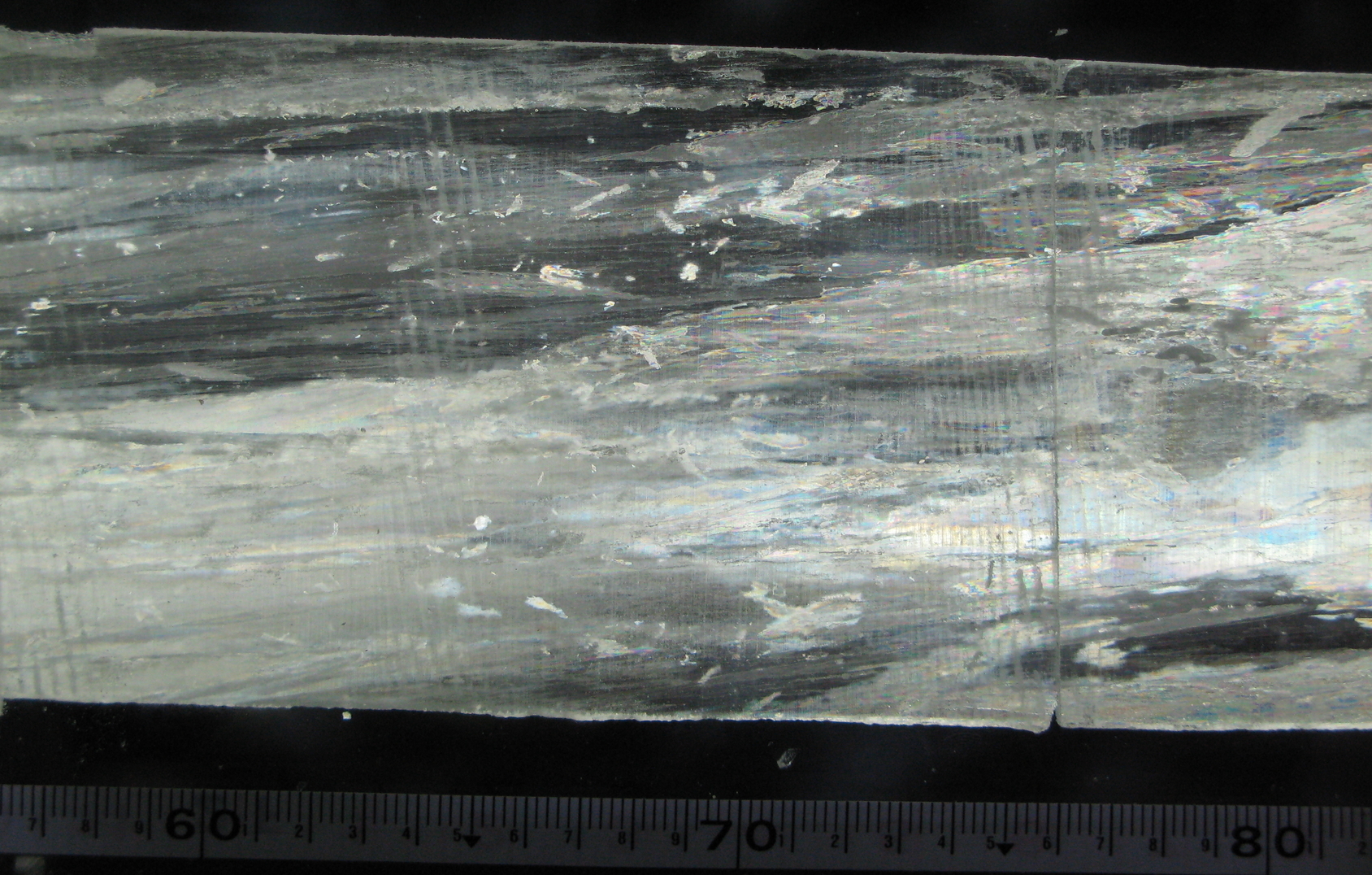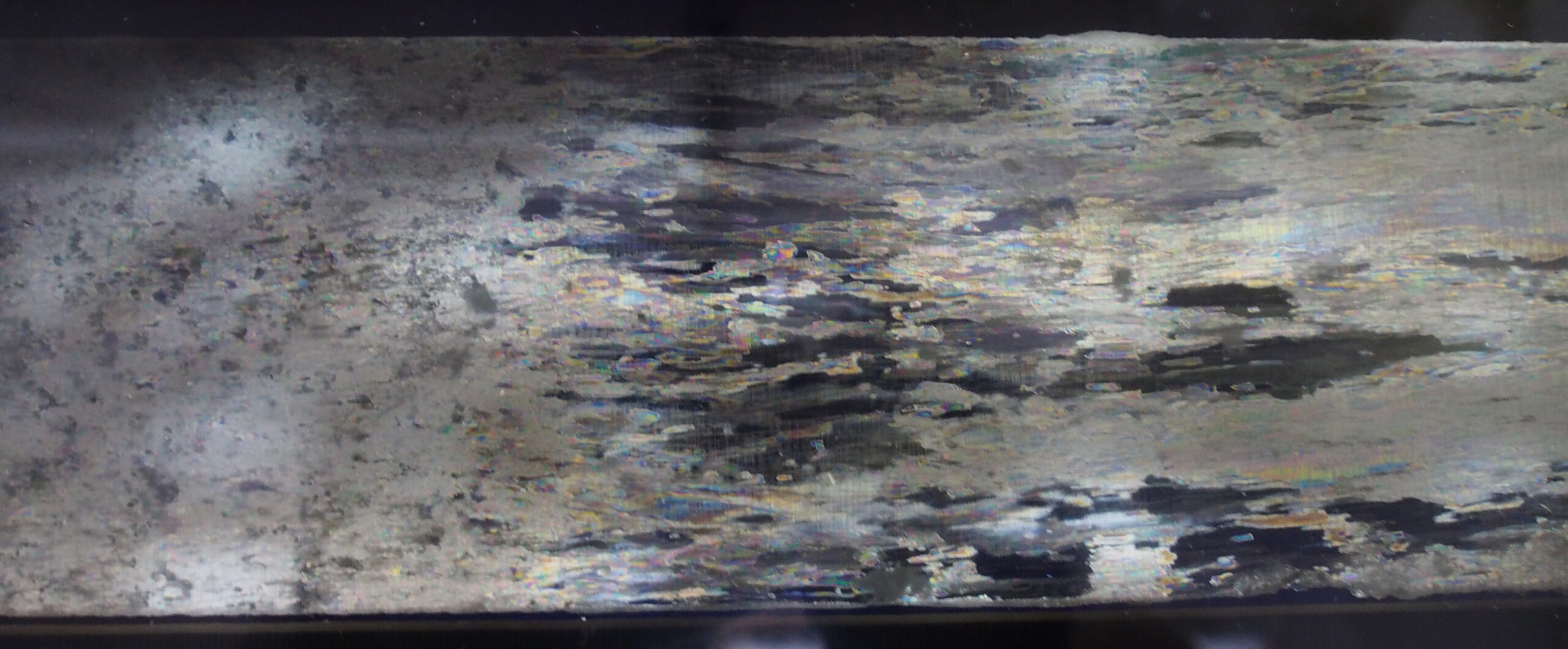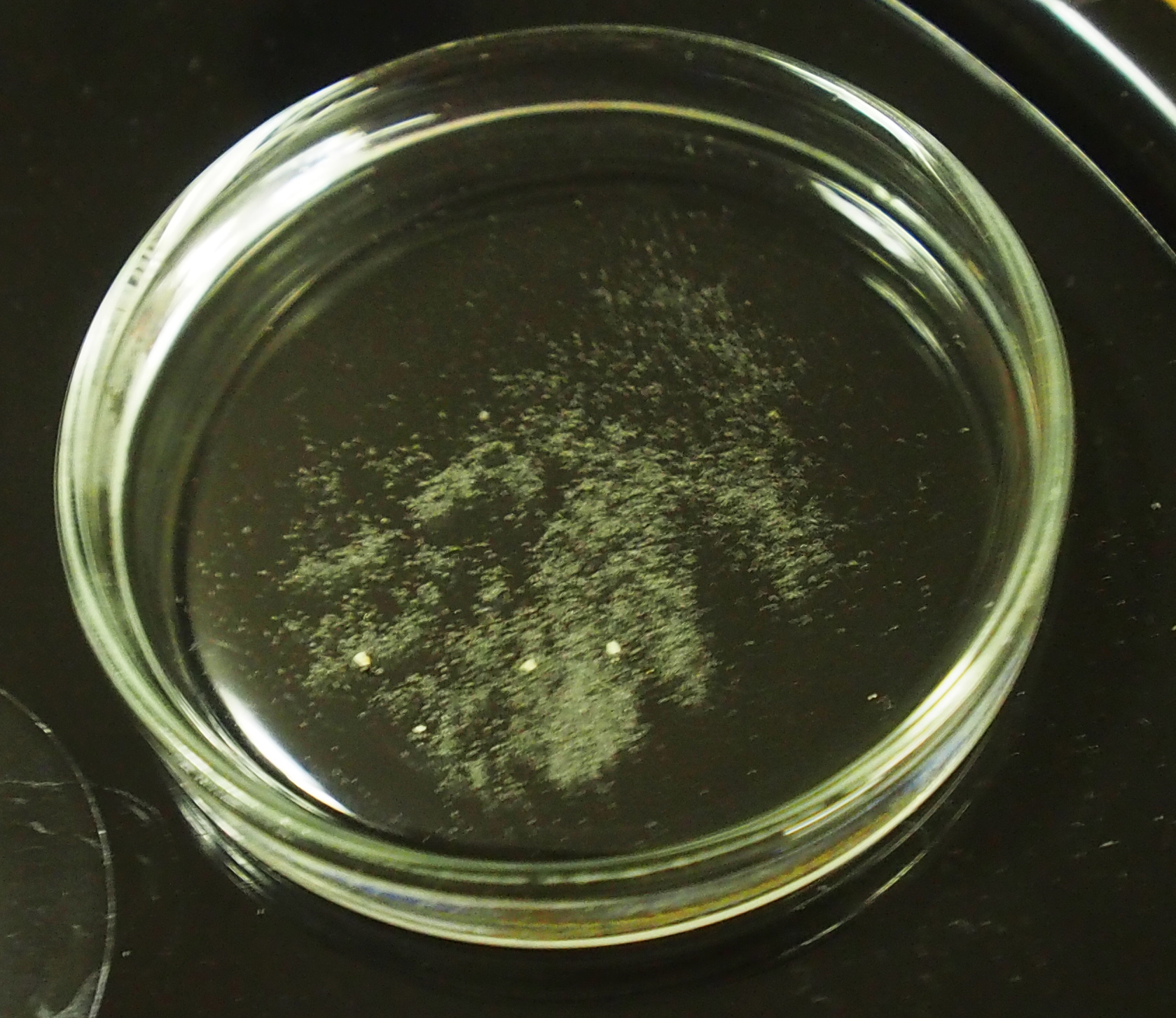- All
- aerial
- ship
- ecology
- in situ
- sensor
MPV Everest sail through sea ice. Photo: Wayde Maurer
Pancake ice (two stages of development). Photo: Jarrod Nicholson
Aerial view of sea ice break out: Brash ice. Photo: Justin Chambers
Pancake ice, flooded and rafted to young ice with light, wet snow cover. Photo: Sandra Zicus
Shuga. Photo: Eric Woehler
Shuga ice. Photo: Eric Woehler
Cemented pancake ice. Photo: Eric Woehler
Snow petrel flying over open water with view to keep of sea ice. Ninety percent of sea ice thickness is underwater. Photo: Adam Leatherbarrow
Shuga ice as viewed from the ship. Photo: Eric Woehler
Pancakes forming from grease ice / frazil in a slight swell. Photo: Dale Maschette
Grease ice and frazil forming incipient pancakes. Photo: Dale Maschette
Grease ice and frazil forming incipient pancakes. Photo: Dale Maschette
Grease ice and frazil, forming incipient pancakes. Photo: Dale Maschette
Incipient pancake ice in frazil (new ice). Photo: Dale Maschette
Snow on new ice. Photo: Stephen Maria
Nilas ice and open water. Photo: Nisha Harris
Open water lead through ridged first-year, snow-covered sea ice. The open water is freezing and rafting from nilas to grey ice. Photo: Sandra Zicus
Ridged first year ice with heavy snow cover and a lead of open water covered in thin ice and a light dusting of new snow. Photo: Wendy Pyper
Pack ice viewed from a ship, with heat loss over open water and thin ice. Photo Wendy Pyper
Snow on top of new ice. Photo: Wendy Pyper
Snow on top of new ice. Photo: Wendy Pyper
Open water lead in ridged first year and snow covered sea ice. Photo: Wendy Pyper
Bergy bit amid ridged sea ice floes with thick snow cover. Photo: Wendy Pyper
Rafted nilas ice, flooded with light snow cover. Photo: David Barringhaus
Aerial view of rafted ice. Photo: Andy Cianchi
Aerial view of rafted nilas. Photo: Andy Cianchi
RAPPLS image of fast ice (Radar, Aerial Photography, Pyrometer, and Laser Scanning system) 05 November 2008 ACE CRC
RAPPLS image of fast ice (Radar, Aerial Photography, Pyrometer, and Laser Scanning system) 05 November 2008 ACE CRC
Aerial view of new (nilas) ice rafting, with fine new snow cover, slightly flooded. Photo: Barry Becker
Aerial view ice growing at an ice edge, with light snow cover. Photo: Glenn Jacobson
Aerial view of cracks in snow-covered new ice with flooding. Photo: David Barringhaus
Aerial view of a lead and cracks in the sea ice 25 September 2012. Photo: Wendy Pyper
Aerial view of leads in first year sea ice with varying stages of sea ice covering the open water. Photo: Wendy Pyper
Crabeater seals on an ice floe with a thick layer of snow-ice. Photo: Paula Olson
Antarctic petrel over rafted pancake ice. Note rims on the pancakes and flooding with sea water. Photo: Kristin Raw
Emperor penguins on ridged first year ice with a thick snow-ice cover. Emperor penguins stand up to one metre tall. Photo: Wendy Pyper
Leopard seal on loose pack ice. Three types of sea ice and open water: Large floes, small floes between, and grease ice/frazil between floes). Photo: Wendy Pyper
Autonomous Underwater Vehicle (AUV) near surface of the water. Note mist (heat loss) over open water. Photo: Wendy Pyper
Setting up the spectral radiometer to measure light in the ultraviolet, visible and near infra-red wavelengths testing areas of young ice and newly forming ice in leads between sea-ice floes. Photo: Stephen Warren (University of Washington, Seattle)
Setting up the spectral radiometer to measure light in the ultraviolet, visible and near infra-red wavelengths testing areas of young ice and newly forming ice in leads between ice floes. Photo: Stephen Maria
A spectral radiometer is deployed to measure light in the ultraviolet, visible and near infra-red wavelengths testing areas of young ice and newly forming ice in leads between sea-ice floes. Photo: Prof Stephen Warren (University of Washington, Seattle)
Setting up the spectral radiometer to measure light in the ultraviolet, visible and near infra-red wavelengths testing areas of young ice and newly forming ice in leads between ice floes. Photo: Stephen Maria
spectral radiometer to measure light in the ultraviolet, visible and near infra-red wavelengths testing areas of young ice and newly forming ice in leads between ice floes. Photo: Stephen Maria
Helicopter above ridged sea ice with heavy snow cover. Testing caption update. Photo: Jessica Fitzpatrick
SIPEX operations with 20 metre transect at ice station 6 with sledge mounted snow radar. Fifteen ice stations allowed the team to take a series of measurements to characterise the sea ice environment over the entire Antarctic sea ice zone. Photo: Tony Worby
Dr Ulrich Freier [Alfred Wegener Institute, Germany] retrieving a sea-ice core drilled from underneath a heavy snow cover. Photo: Wendy Pyper
Preparing a sea-ice core for conductivity measurements in the field by drilling partial holes along the vertical axis at set distances. Photo: Wendy Pyper
Preparing a fresh sea-ice core for in situ conductivity measurements by drilling partial holes along the vertical axis at set distances. Photo: Wendy Pyper
University of Utah mathematics PhD student Christian Sampson measures the electrical conductivity of an ice core. Electrical clamps are attached to nails inserted along the length of the ice core. Photo: Wendy Pyper
Measuring the electrical conductivity of a sea-ice core. Electrical clamps are attached to nails inserted along the length of the ice core. Photo: Wendy Pyper
Terrestrial Lidar Scanner (TLS) being set up to scan the surface of snow-covered sea ice. Photo: Wendy Pyper
Shielded sample line for total gaseous mercury measurements. The metal canister is a welded case to protect the sample inlet from rain and sea spray. Windmill style anemometer fitted on top bar. Photo: Ruhi Humphries
An accelerometer deployed on ice floe. Photo: Brett Free
esearchers craning scientific instruments from a ship onto a sea ice floe to sample thin sea ice. Photo: Klaus Meiners
SIPEX II expeditioner on edge of sea ice with view through the water to the depth of sea ice below. Ninety percent of sea ice thickness is below the water. Photo: Robert Johnson
Dr Roger Stevens cutting a sea-ice core into smaller samples for melting and subsequent analysis. In the freezer laboratory at -20oC using a bandsaw. Photo: Wendy Pyper
A vertical thin section with granular ice at the top of a sea-ice core between cross-polarizers on light table. Photo: Wendy Pyper
A vertical thin section of a sea-ice core between cross-polarizers on light table. Photo: Wendy Pyper
Back lit vertical thin section of a sea-ice core to derive the ice-crystal stratigraphy. Photo: Wendy Pyper
A vertical thin section of a sea-ice core between cross-polarizers on light table. Photo: Wendy Pyper
These images were supplied by the Australian Antarctic Division and attributed to individual photographers. If you have images of sea ice that you want to contribute to the ASPeCt image library for educational purposes, please contact us.

